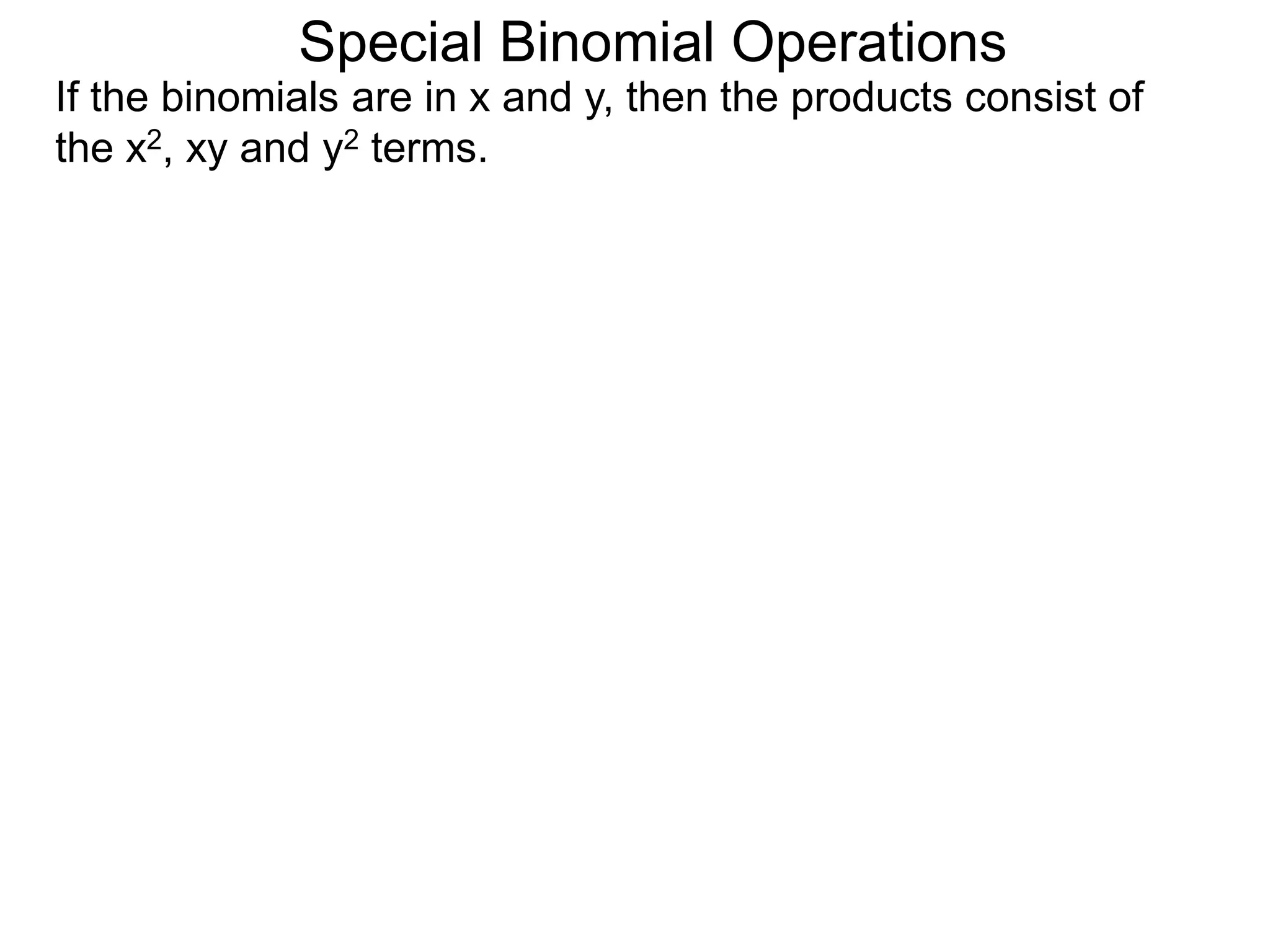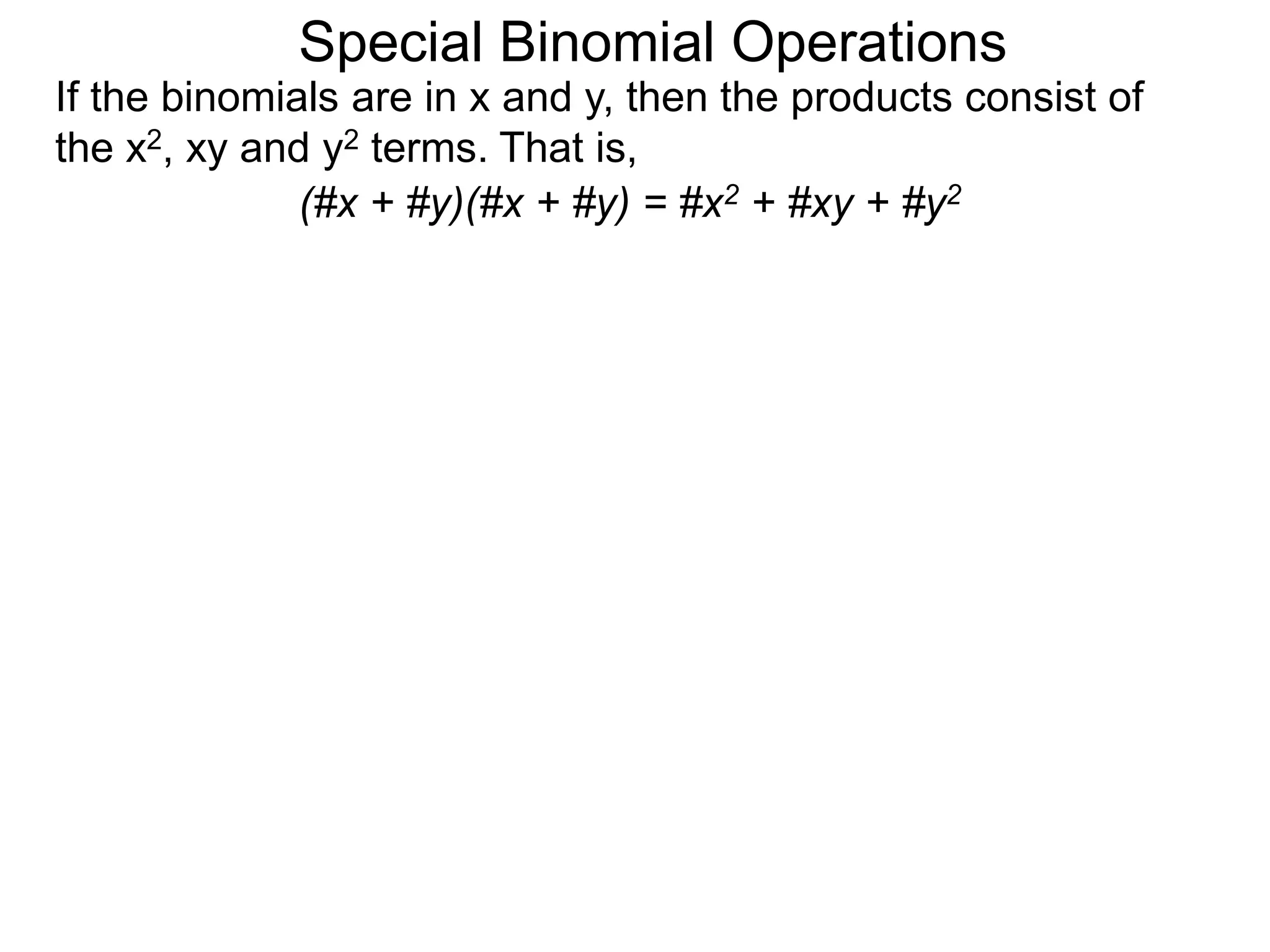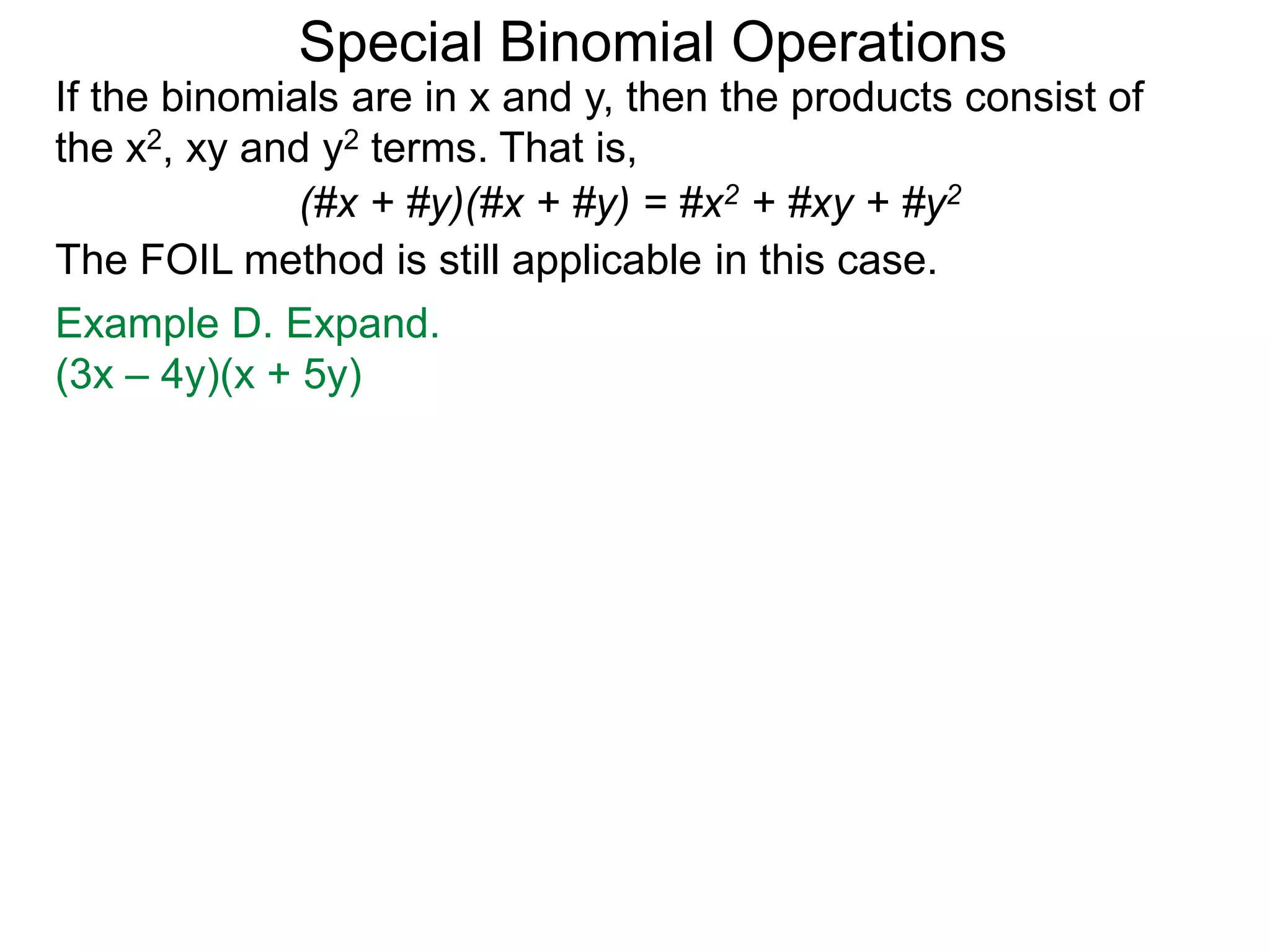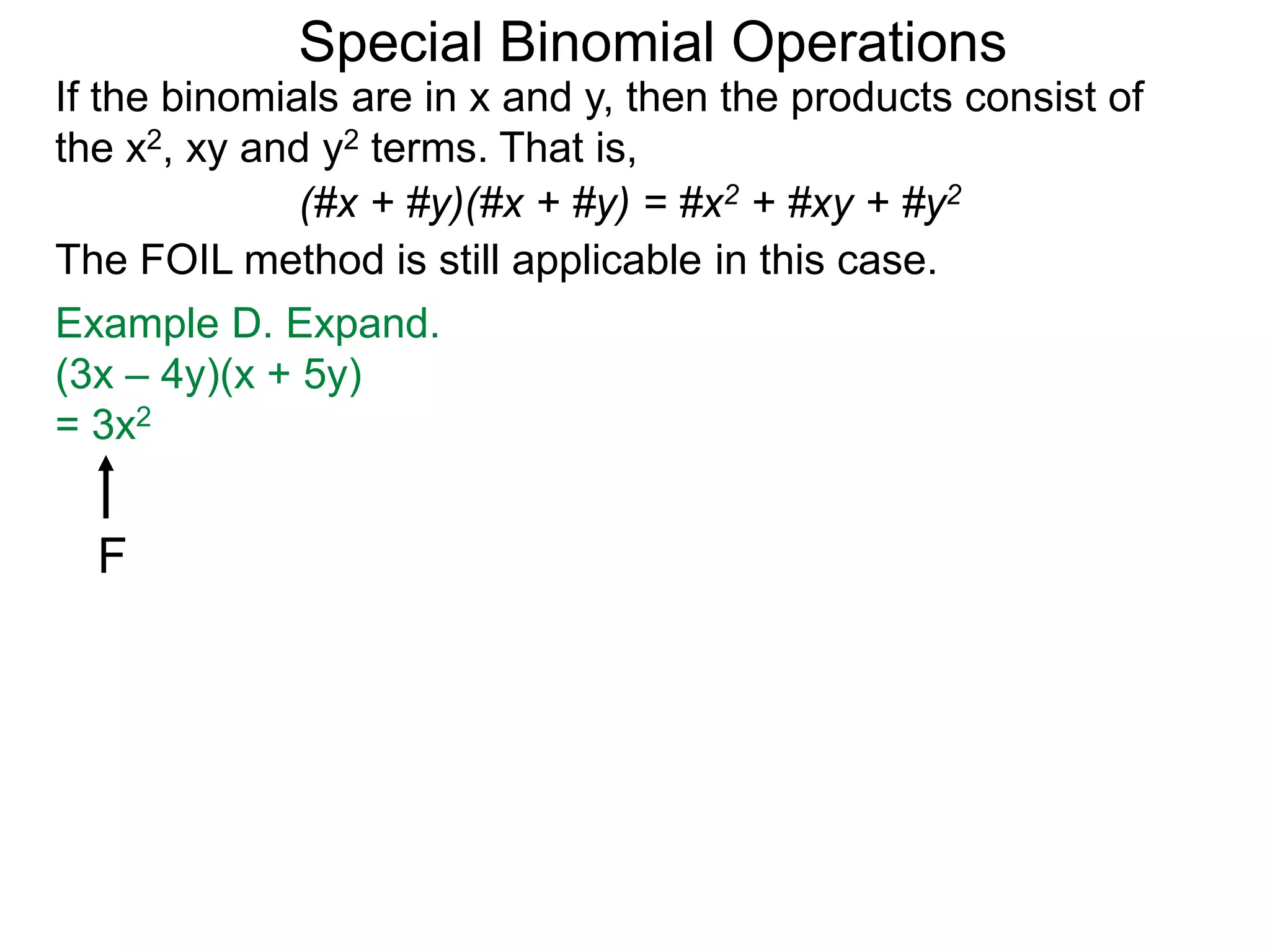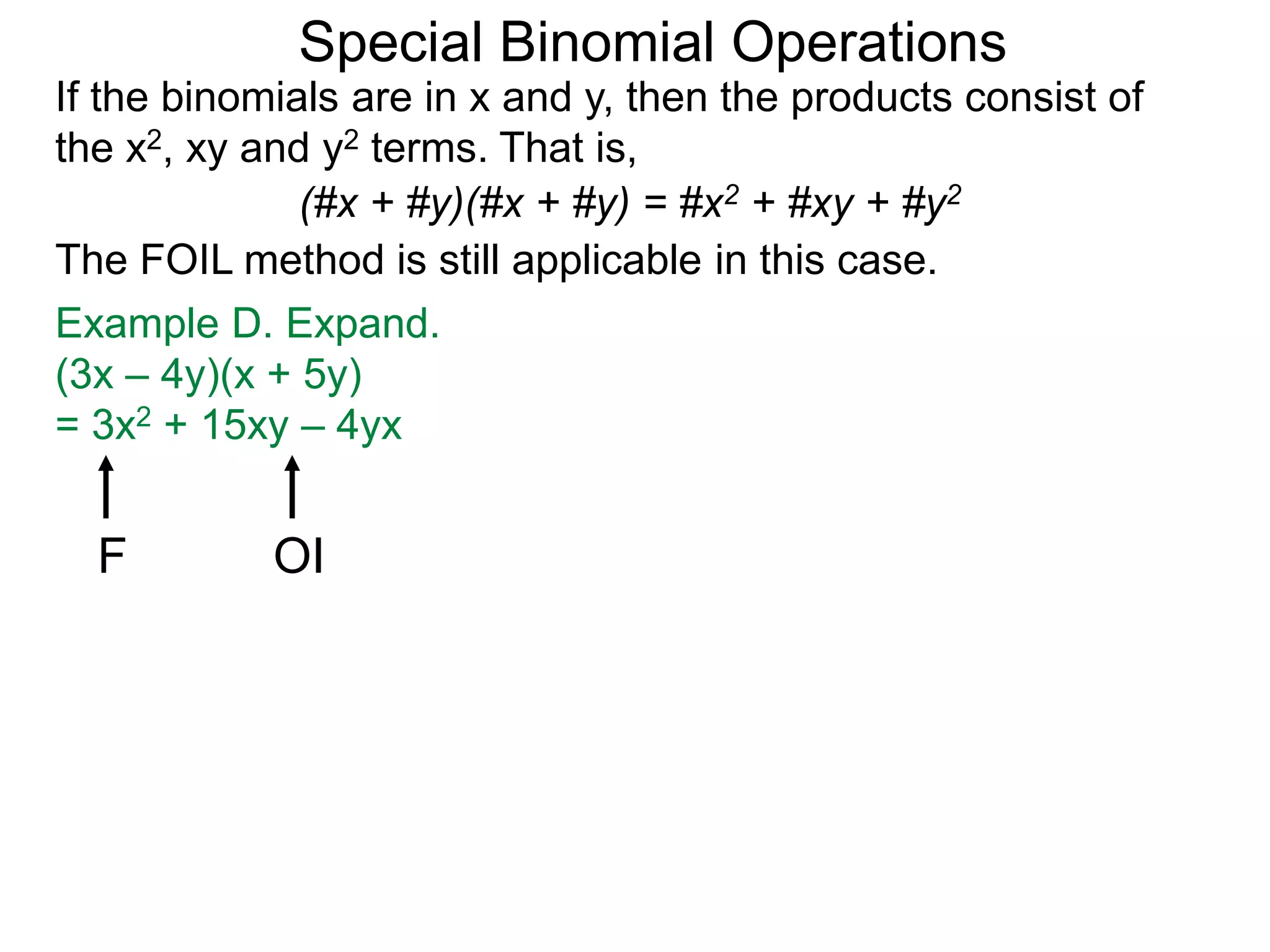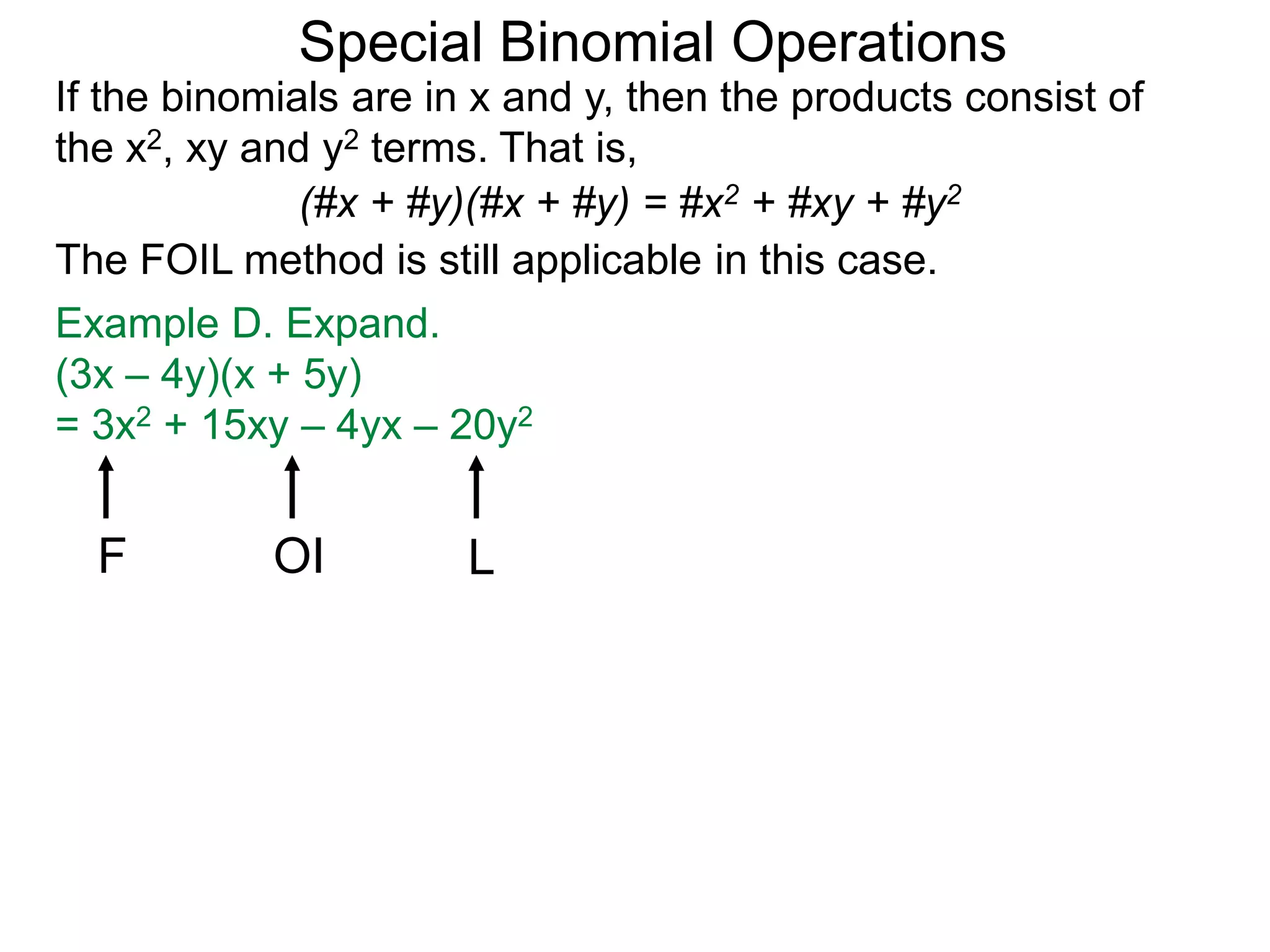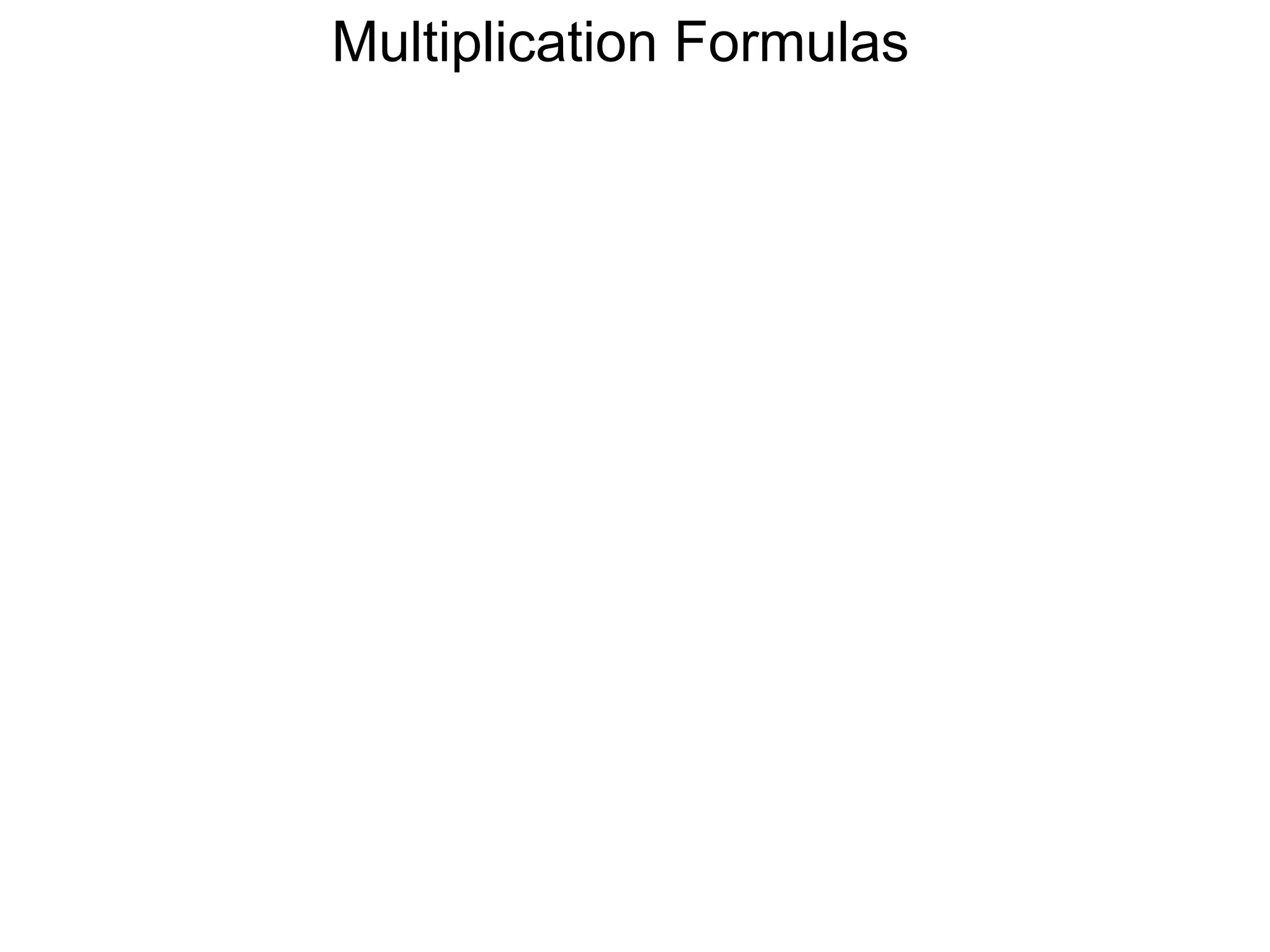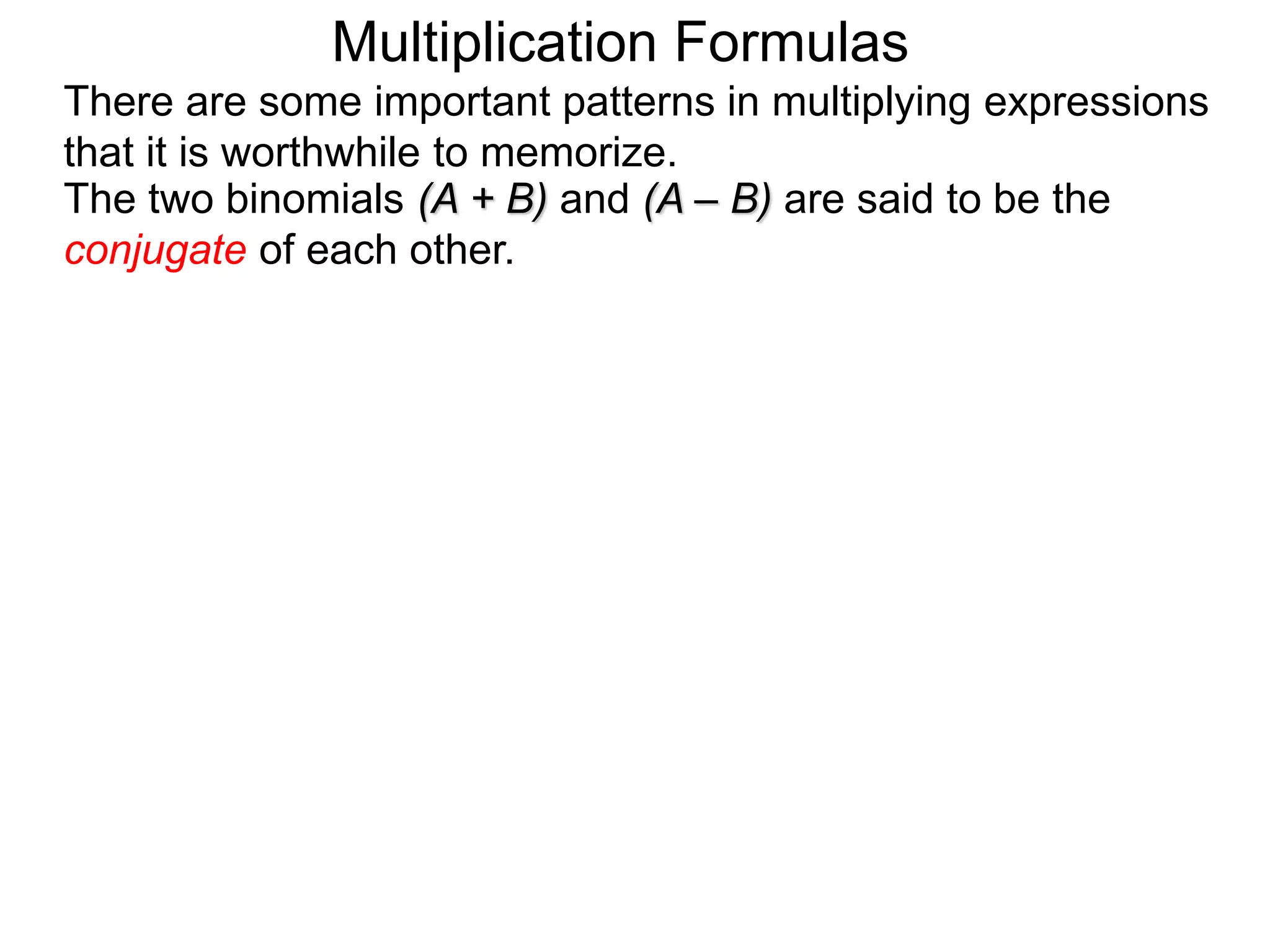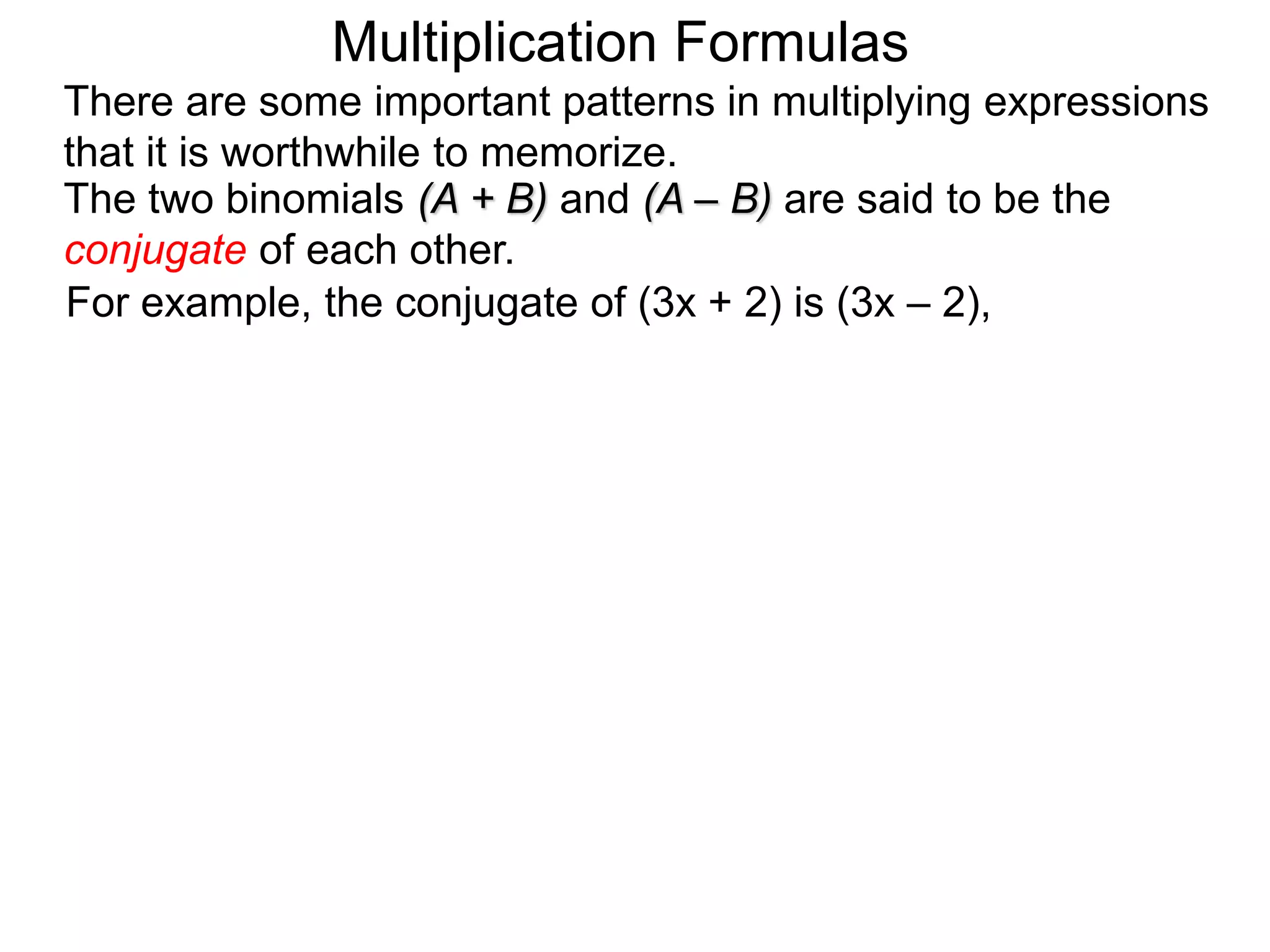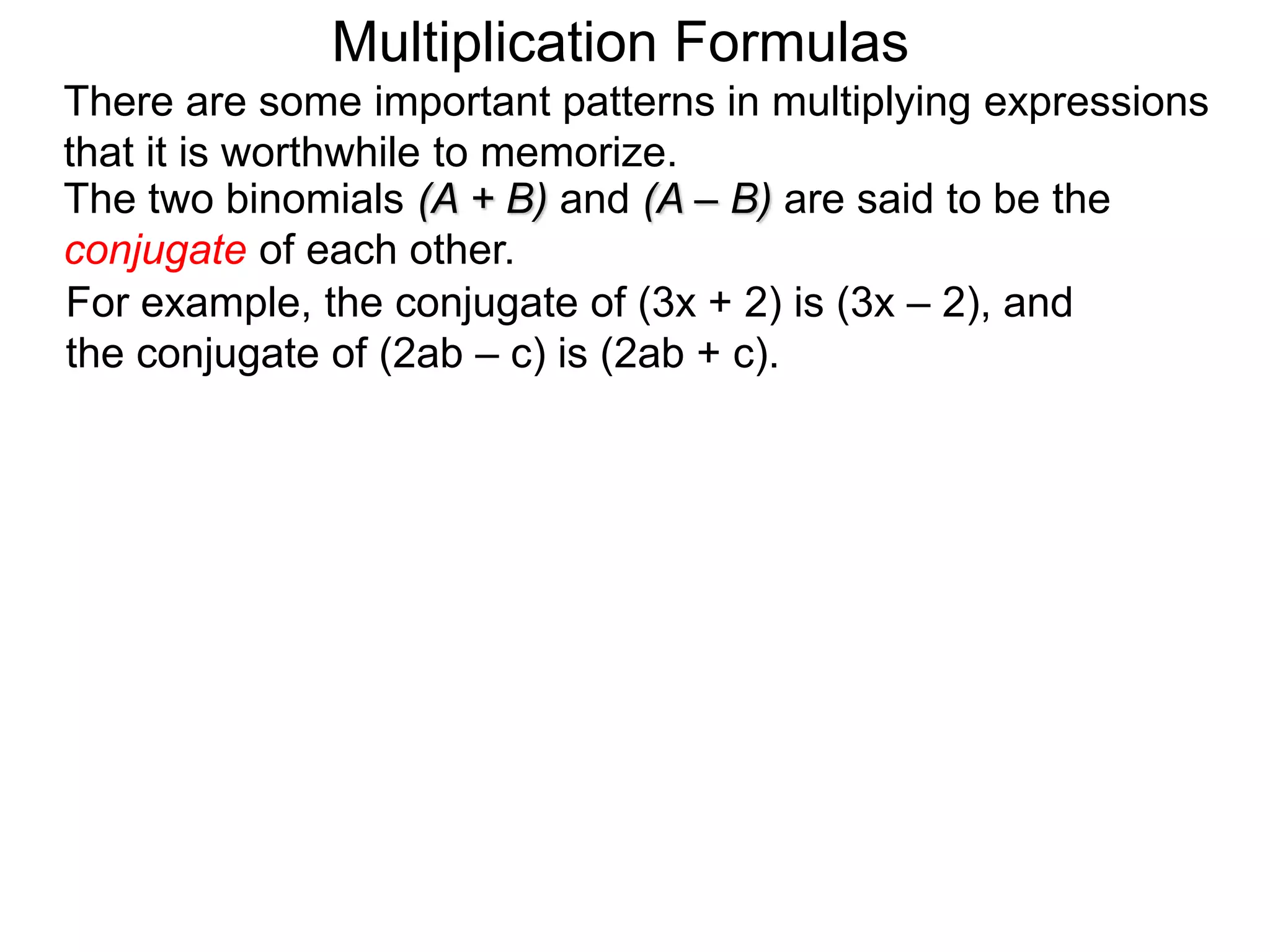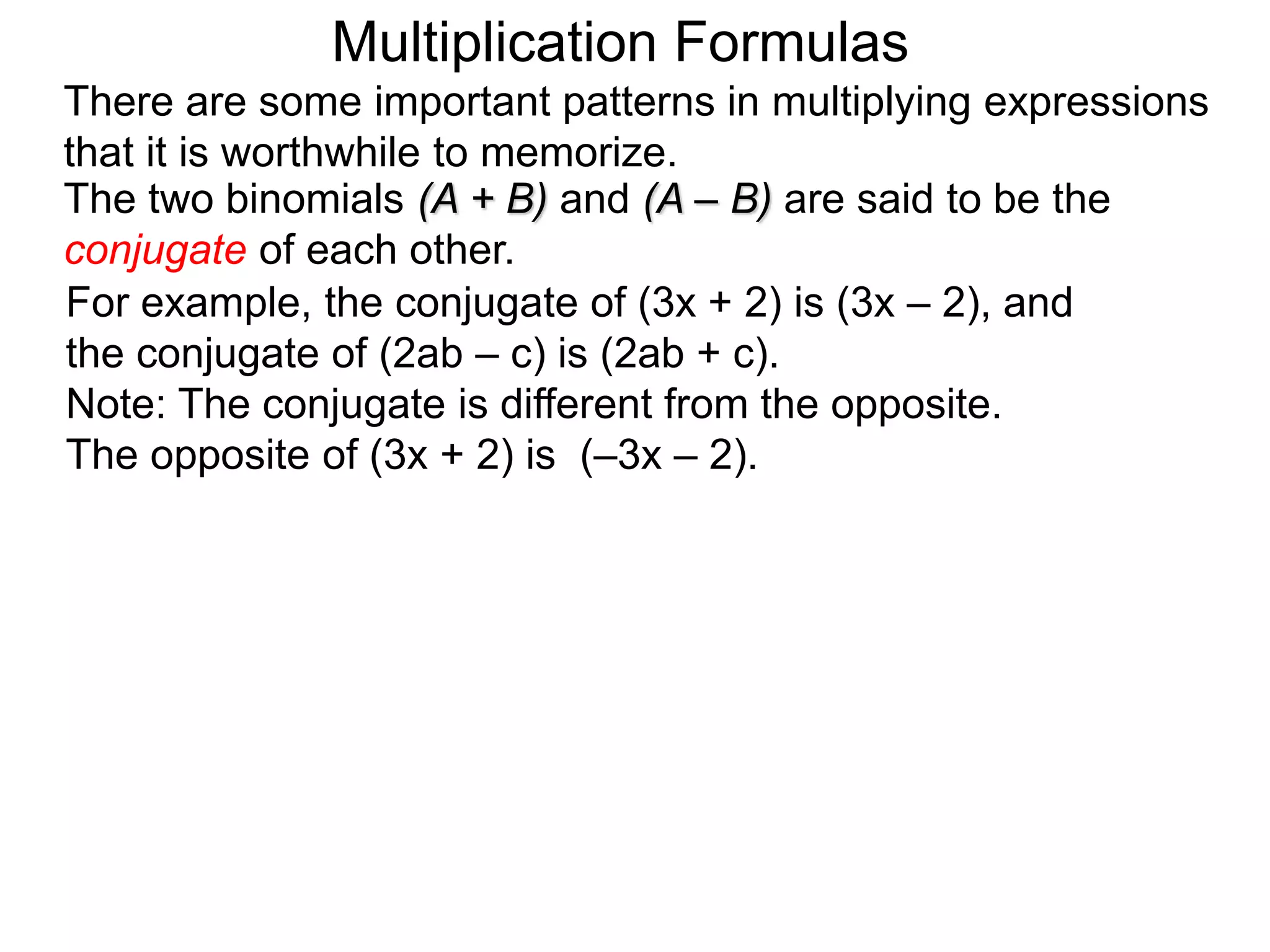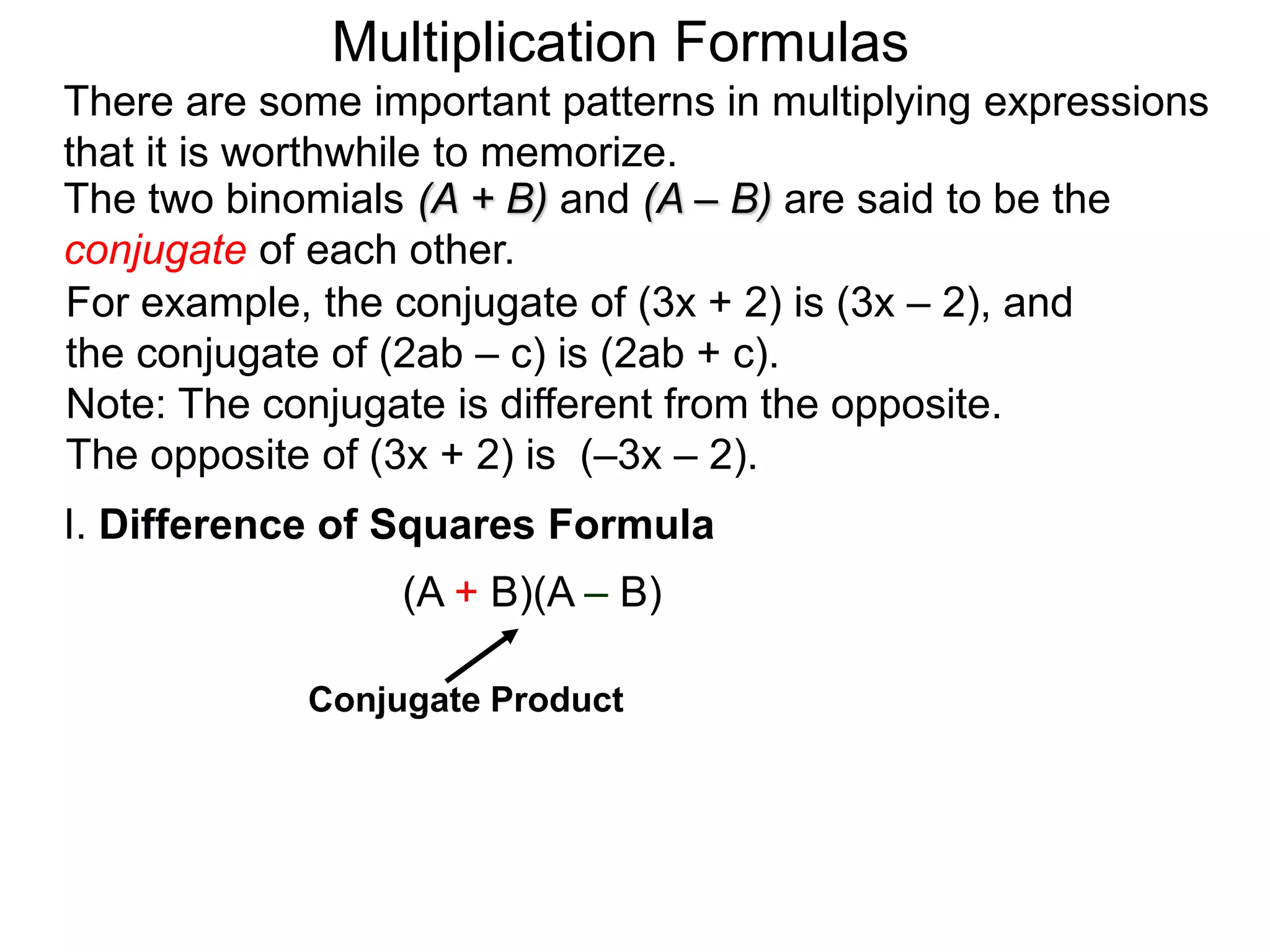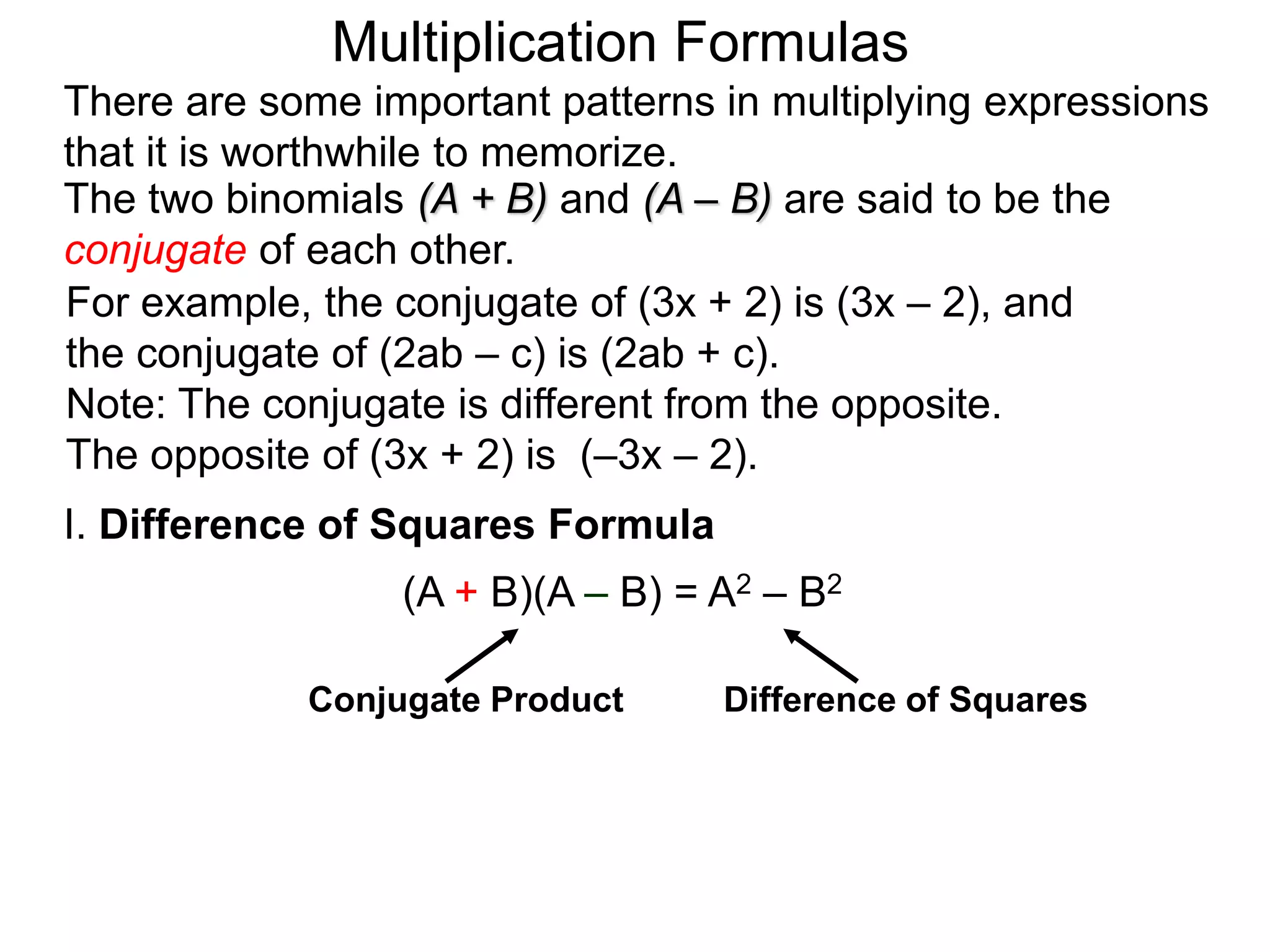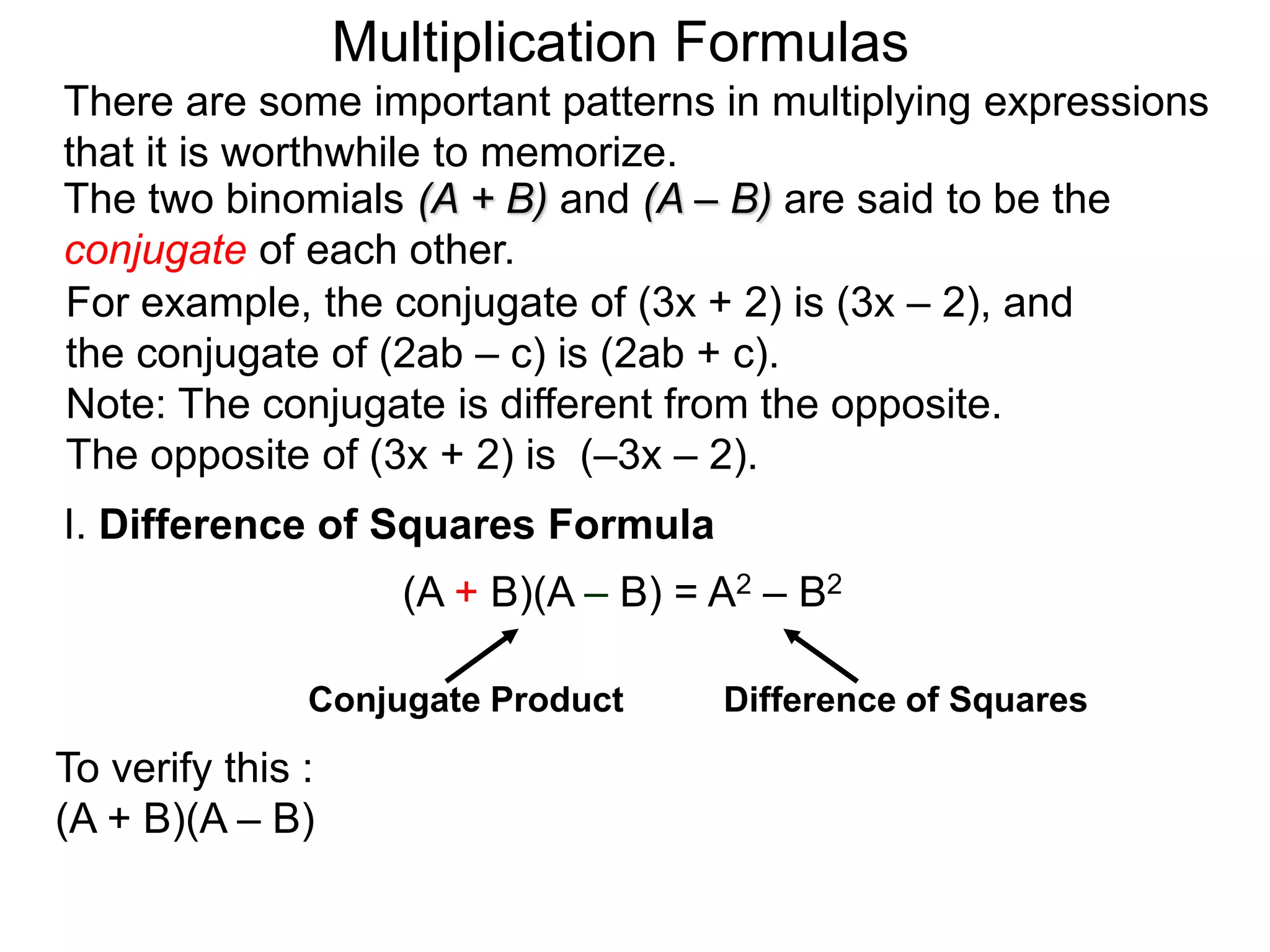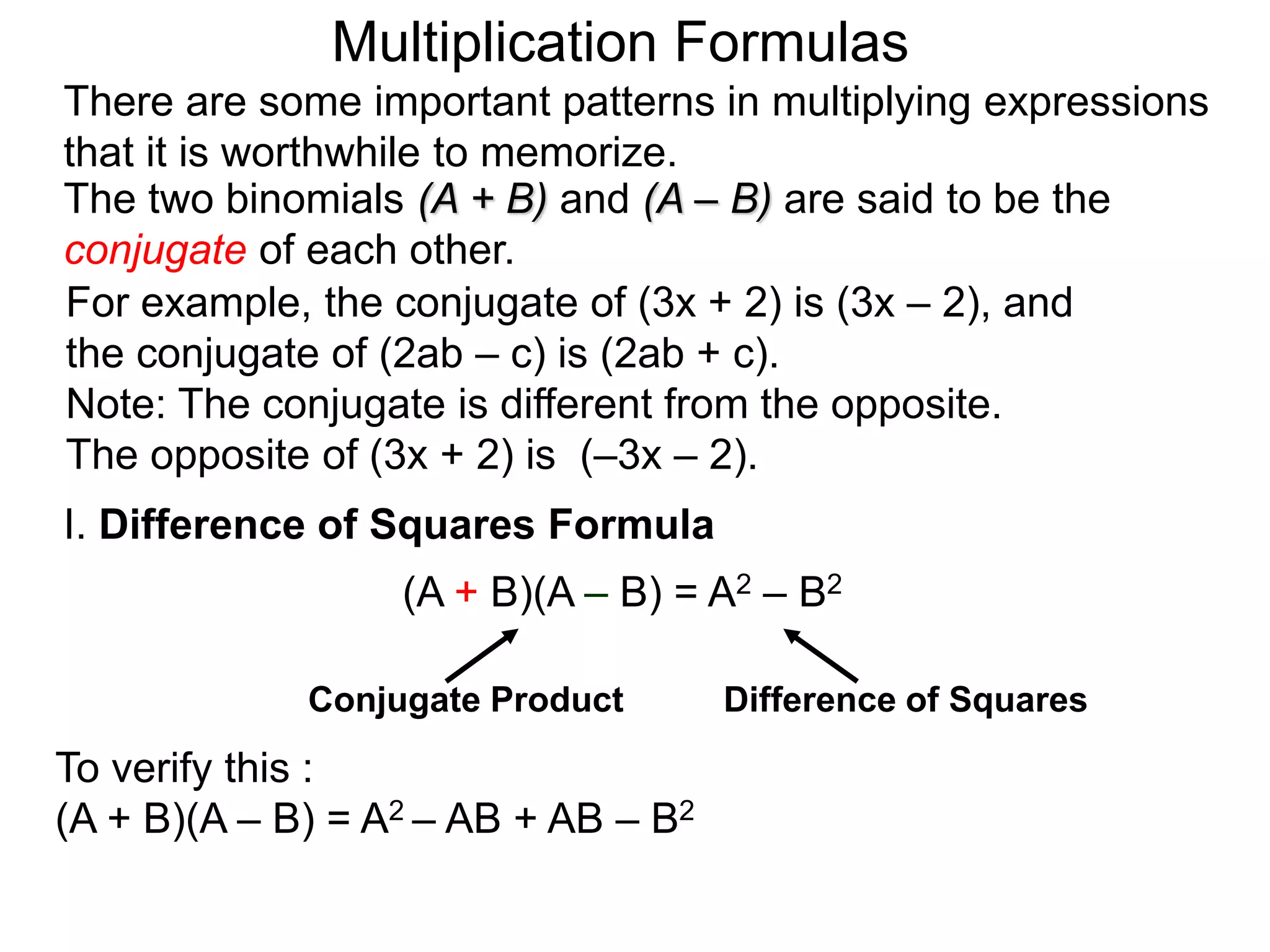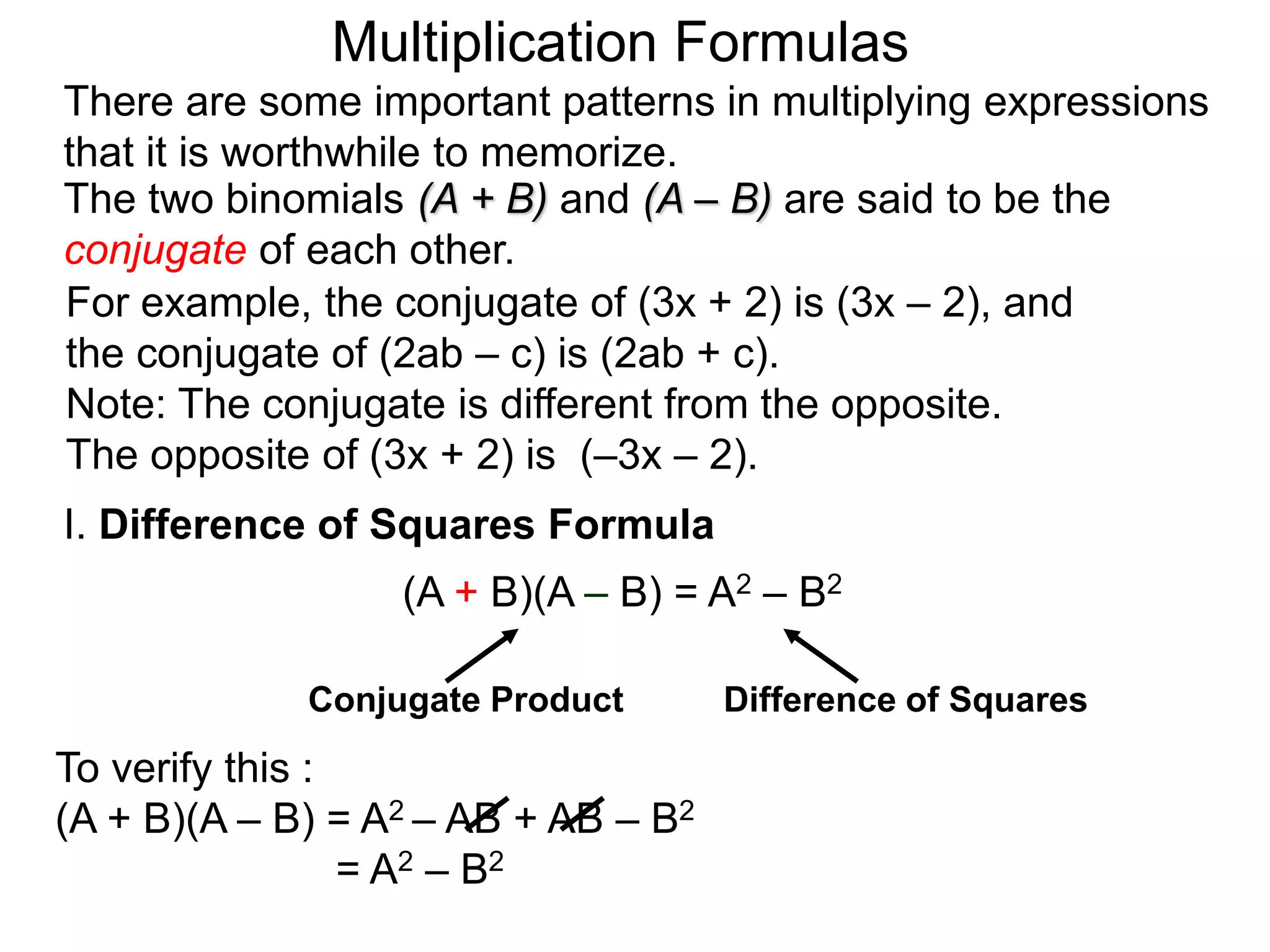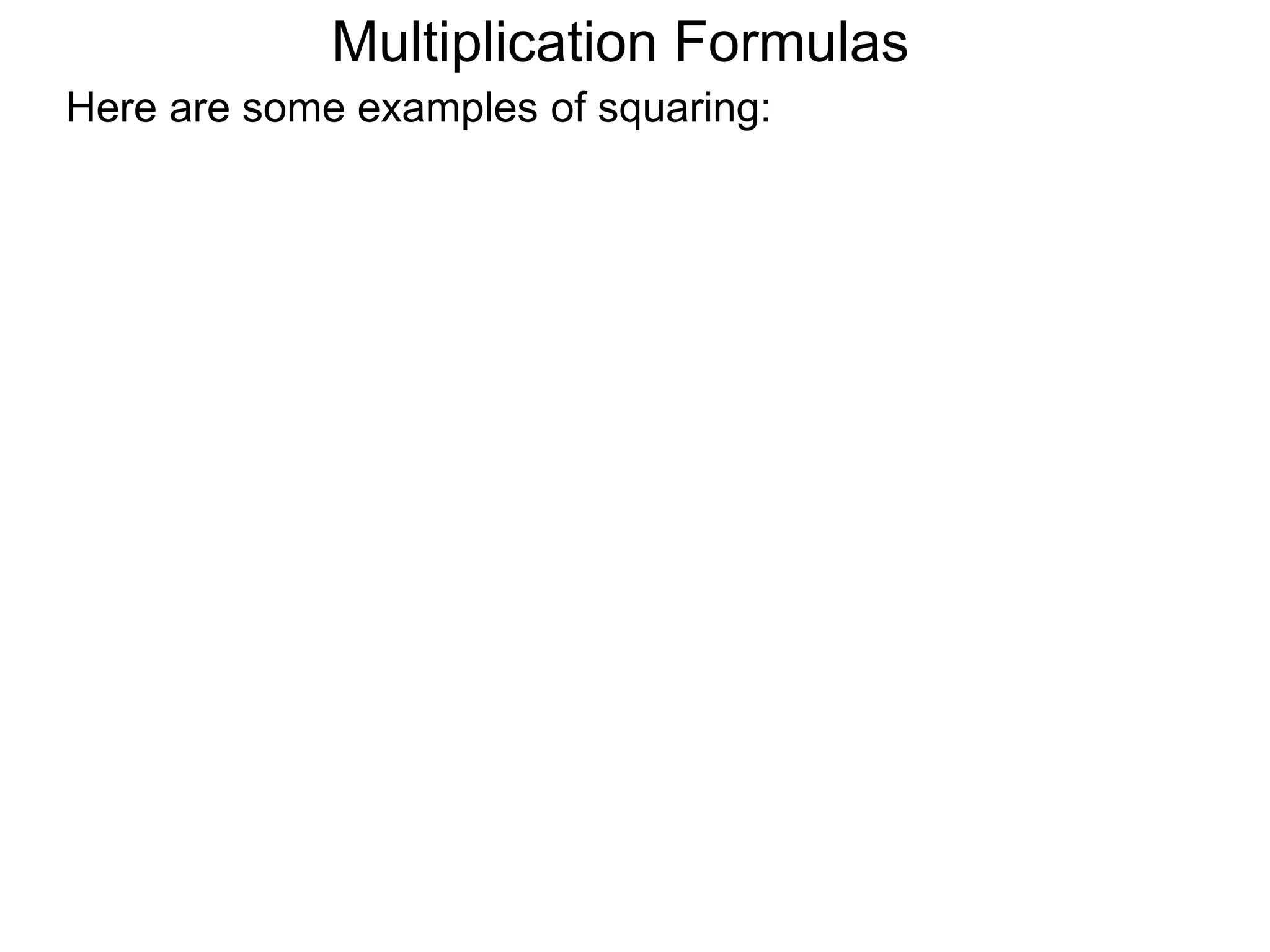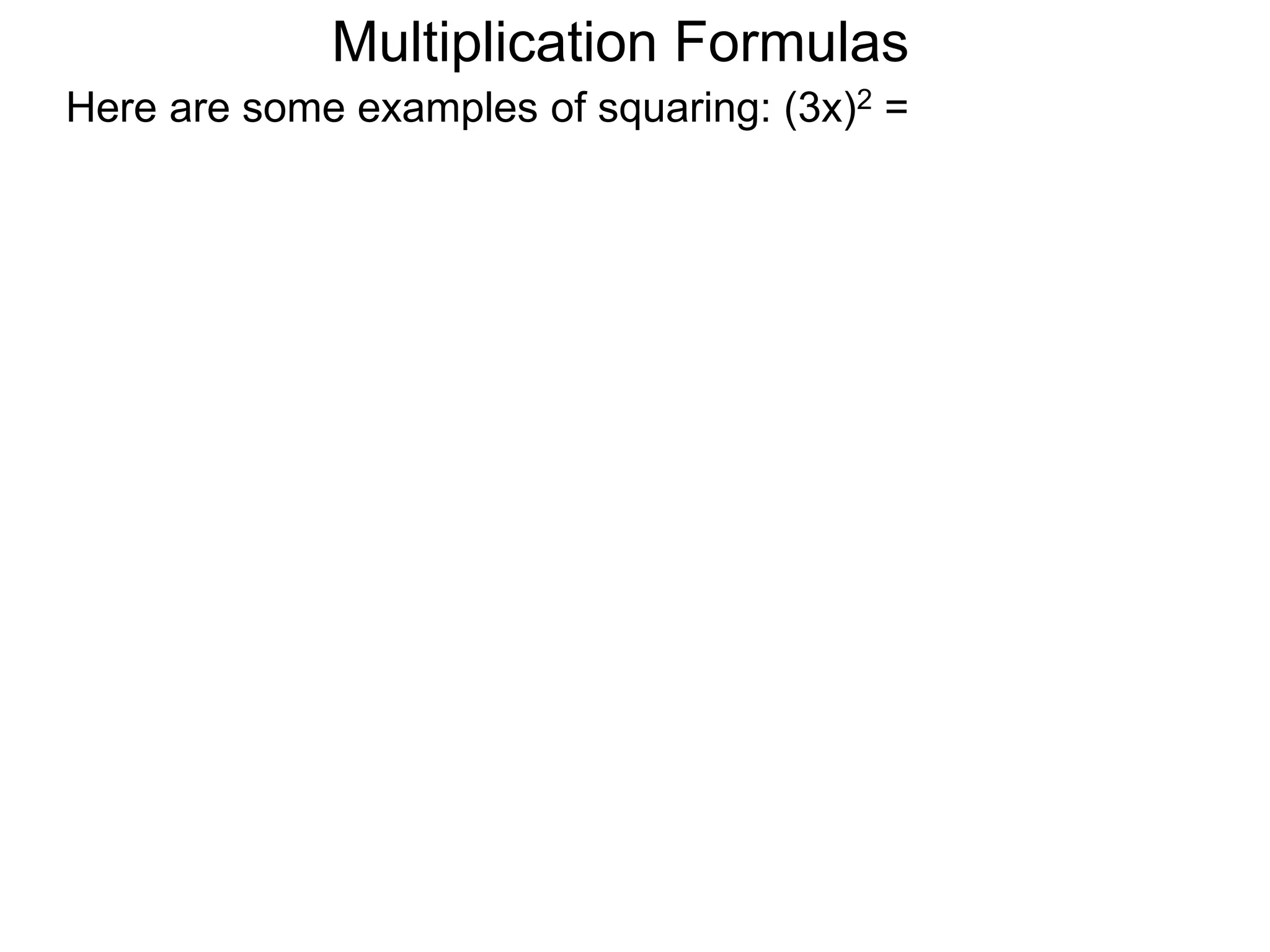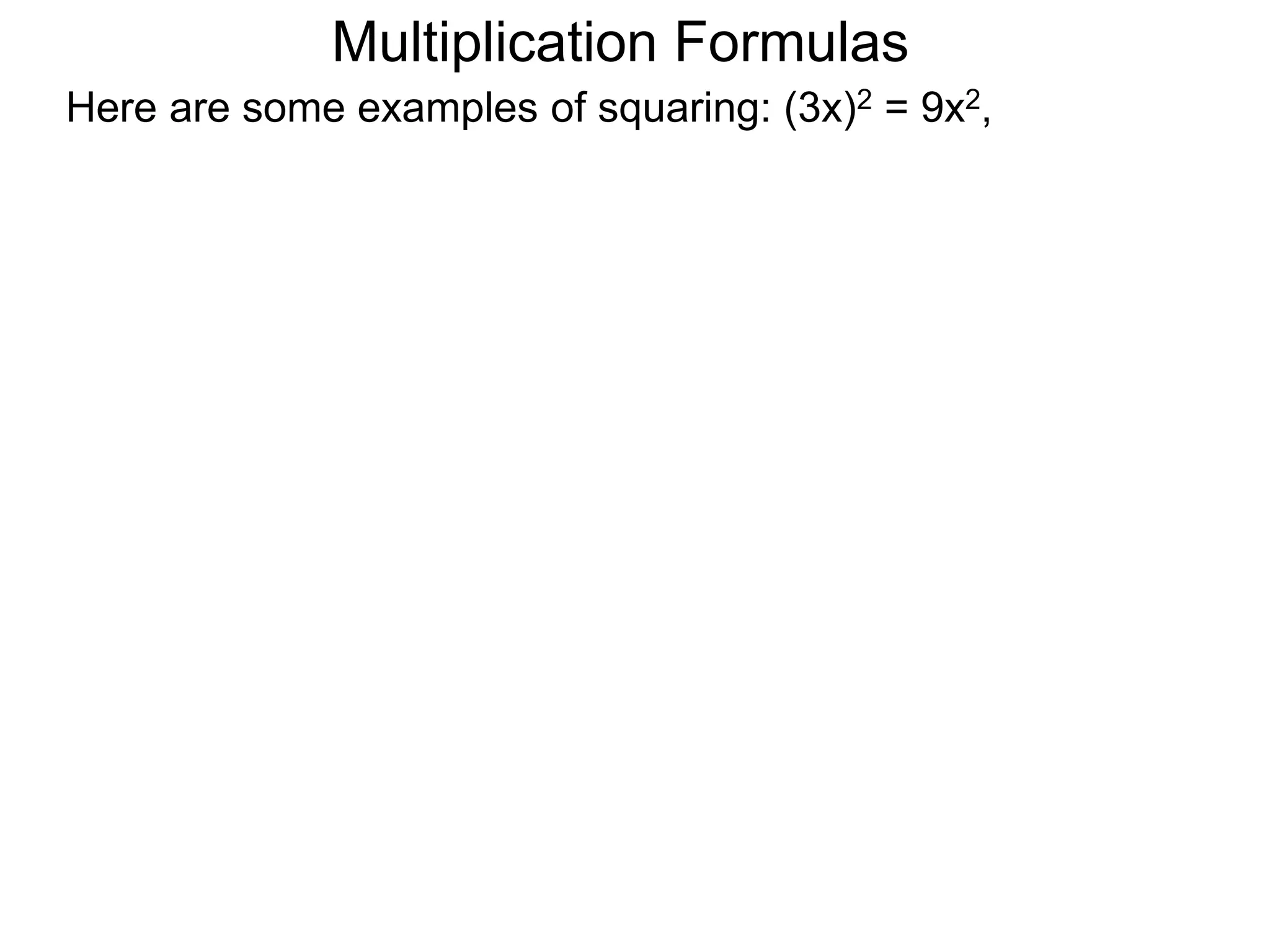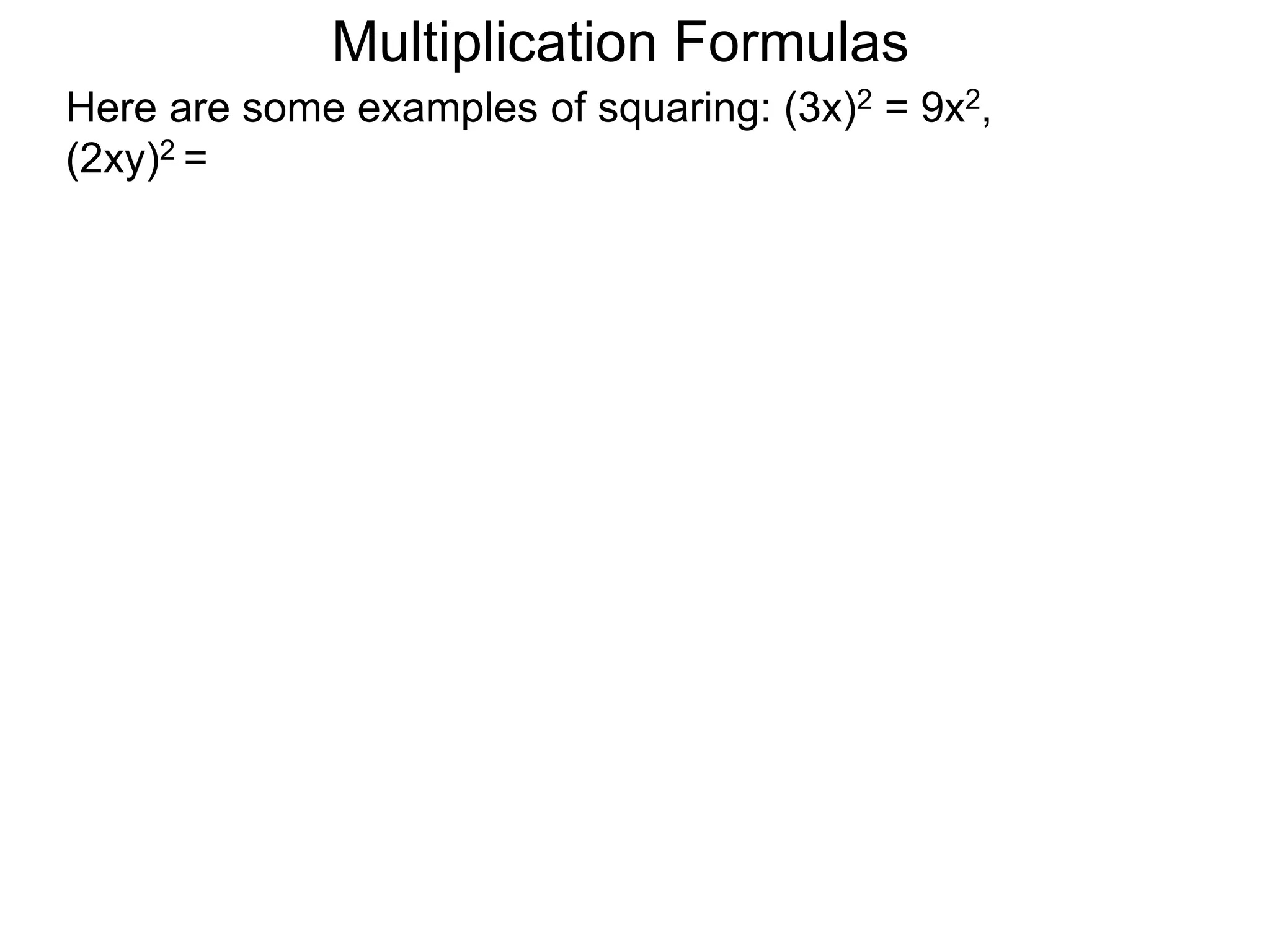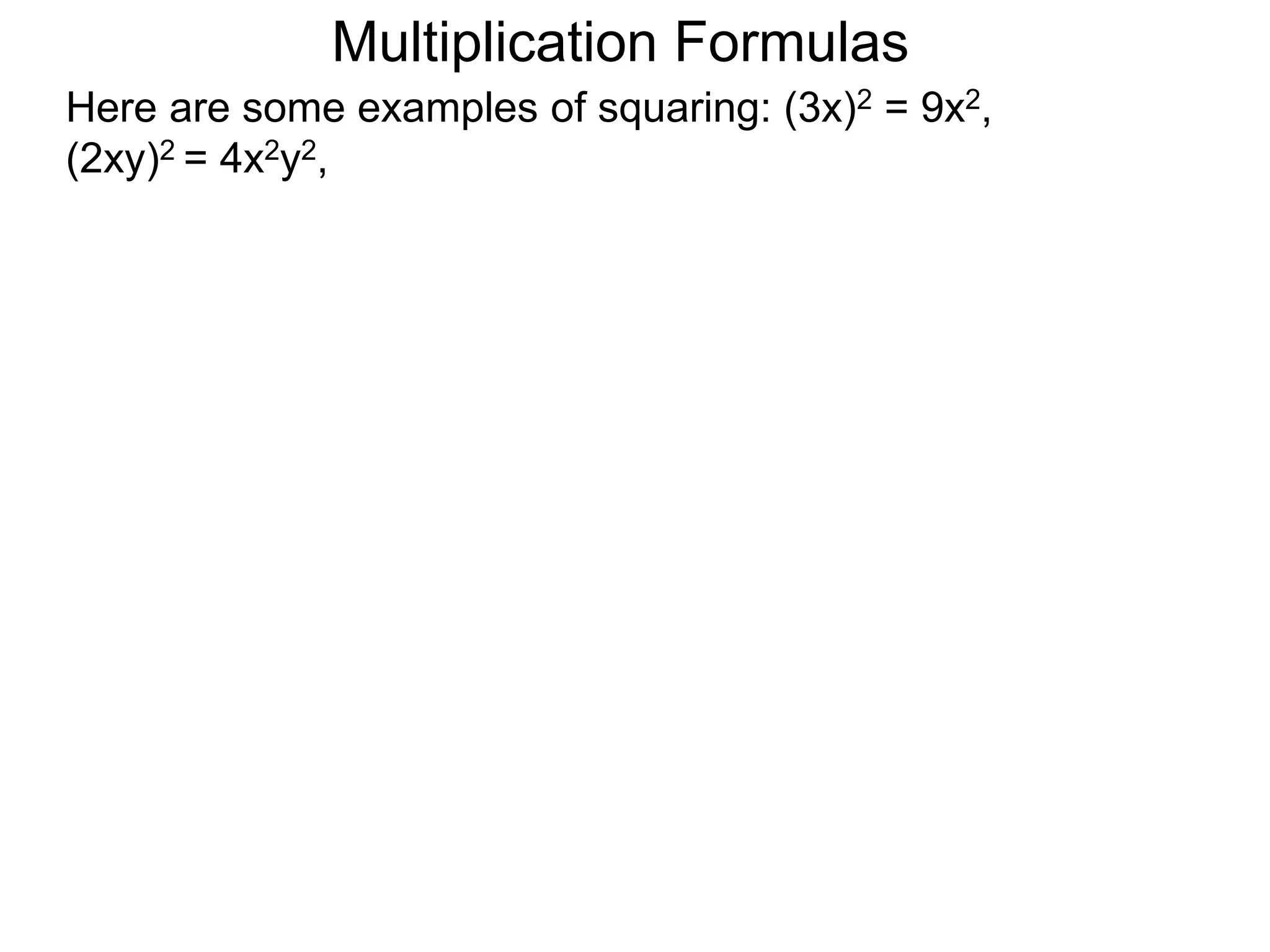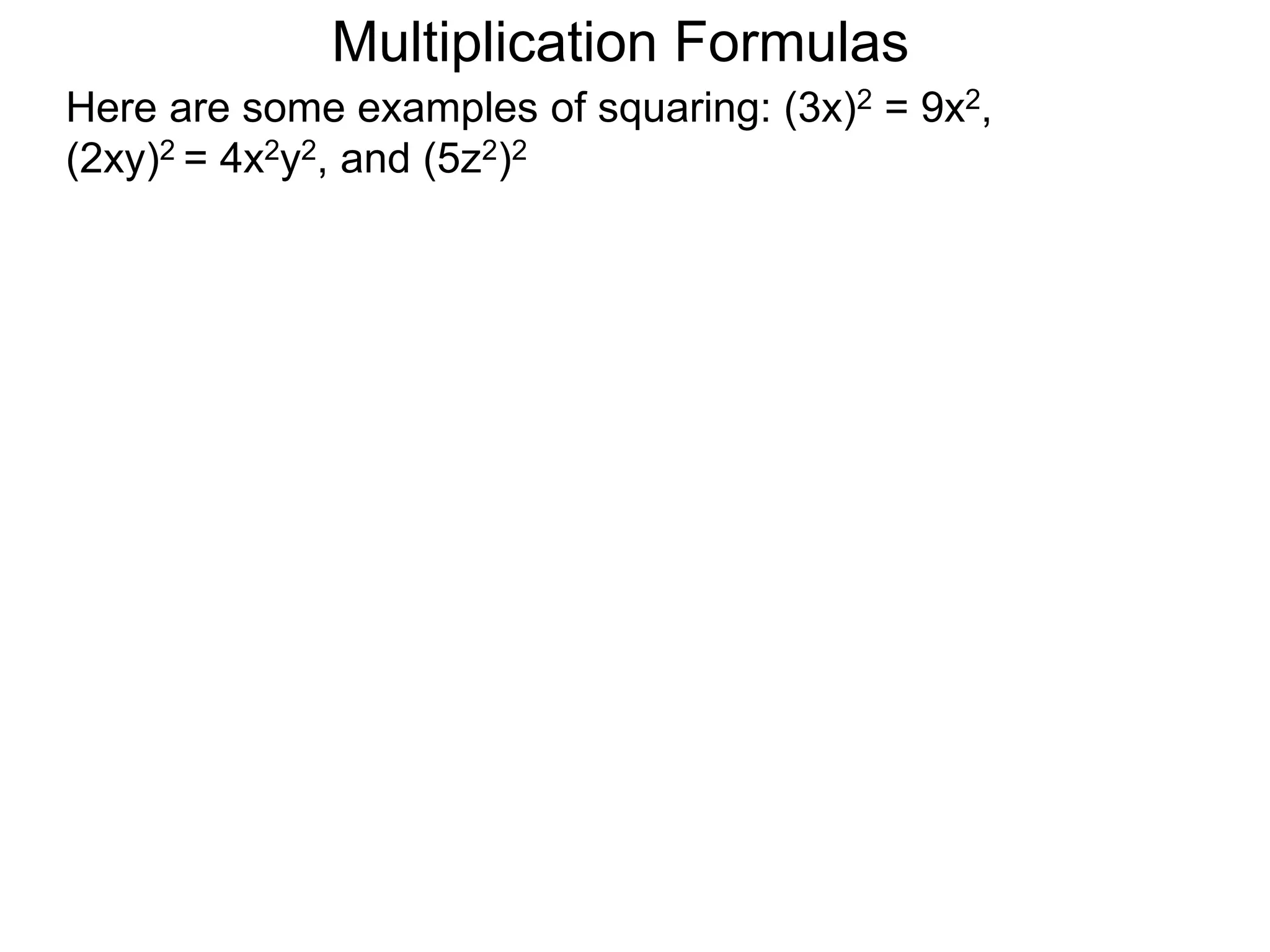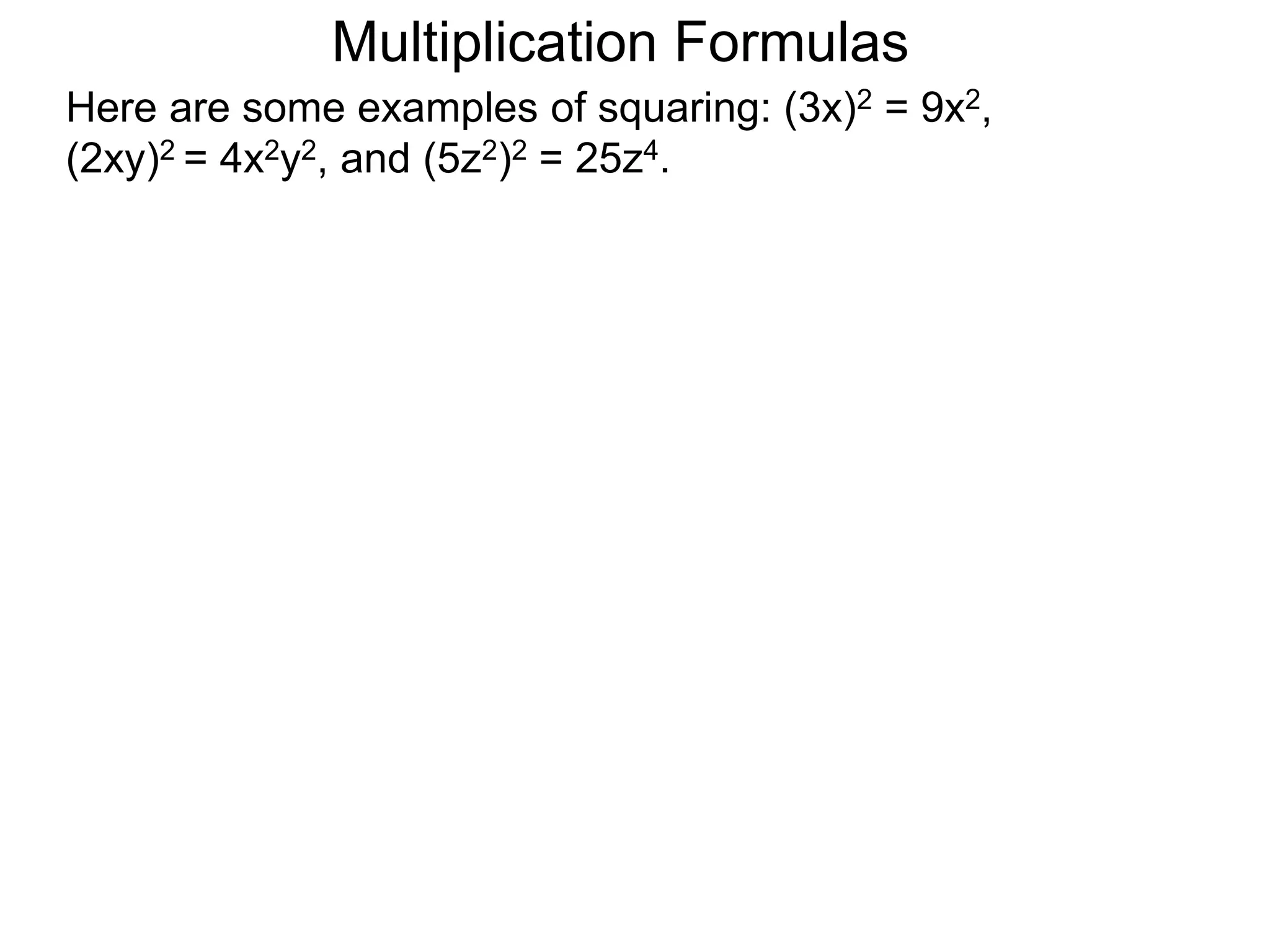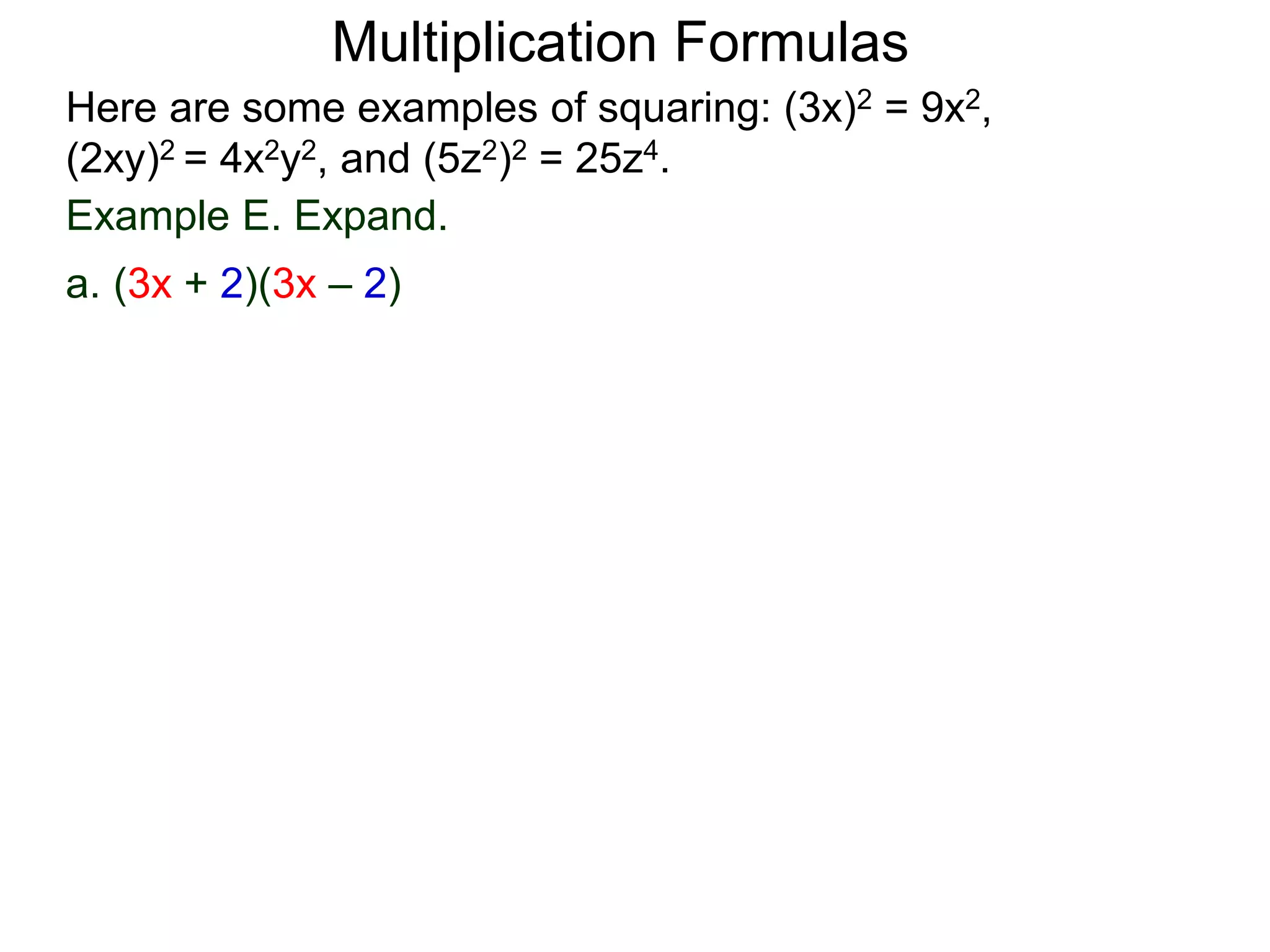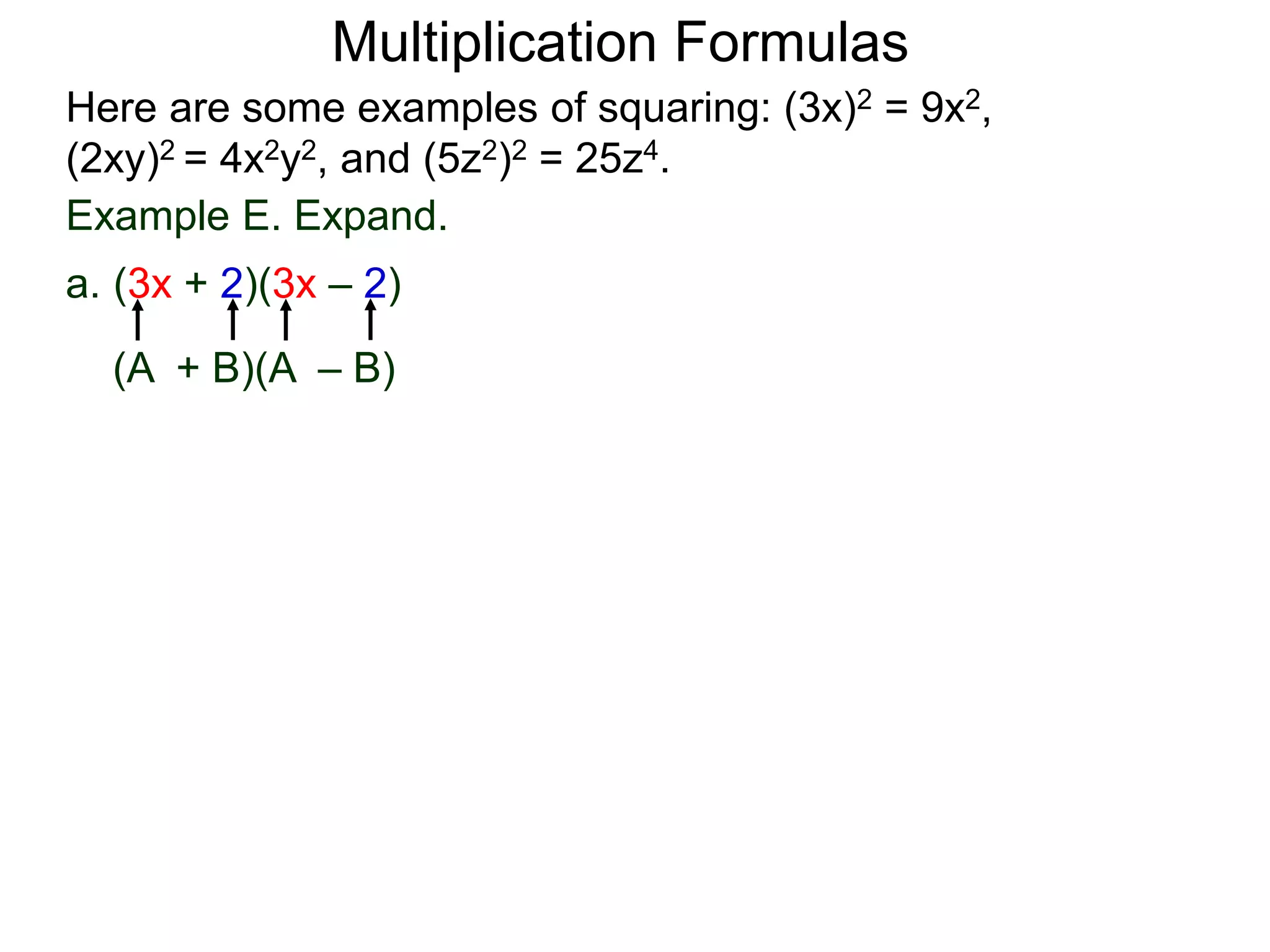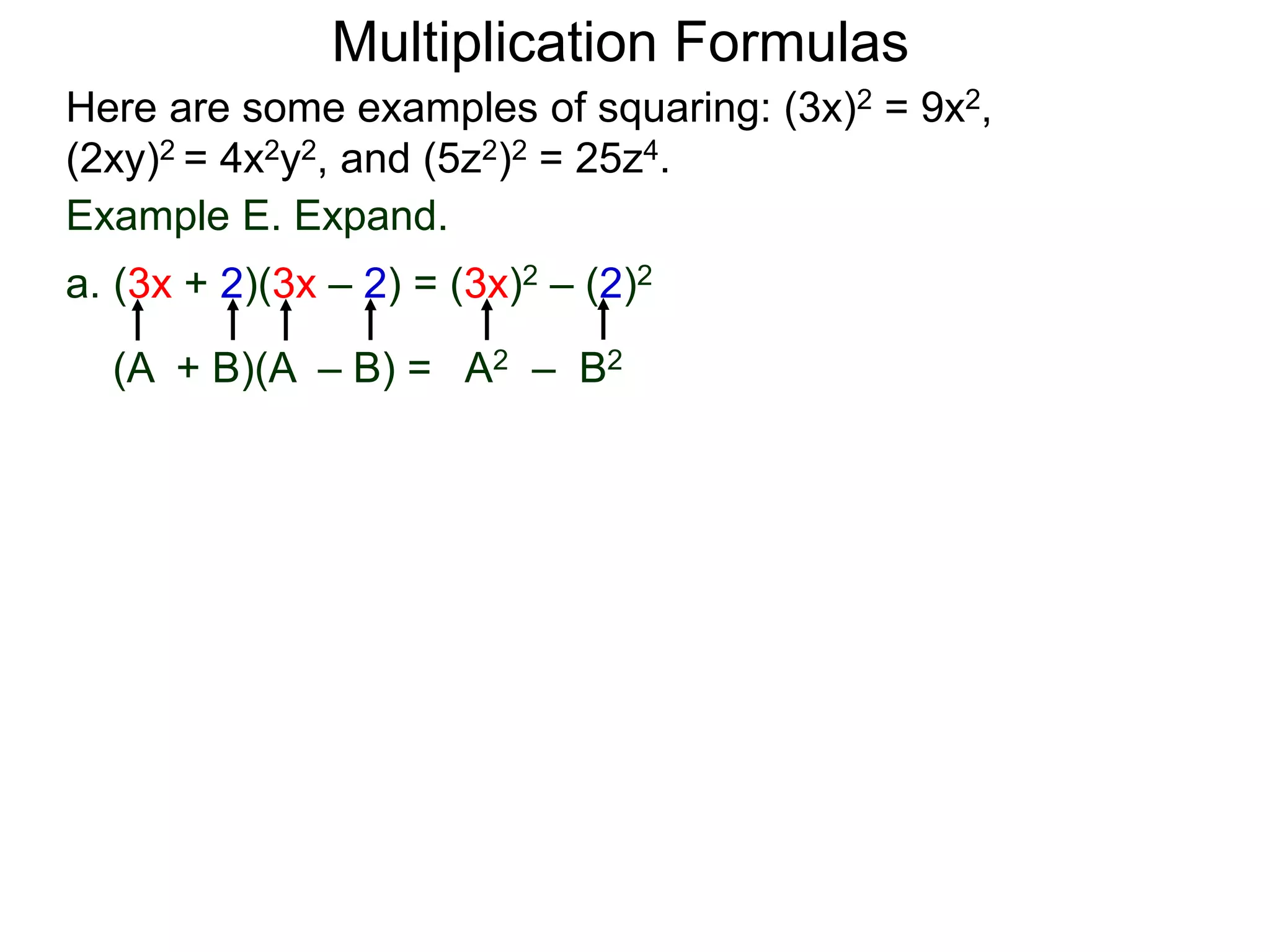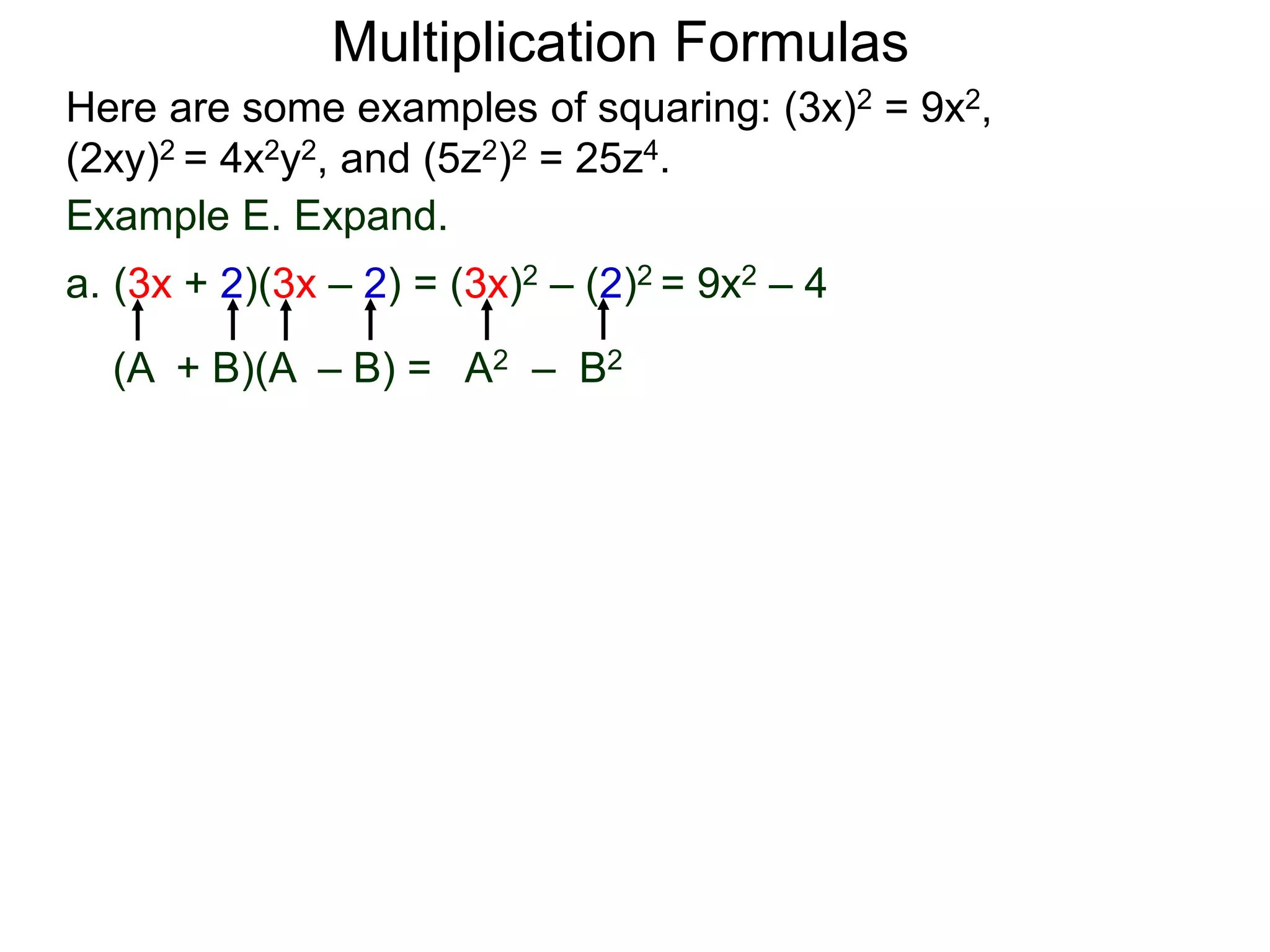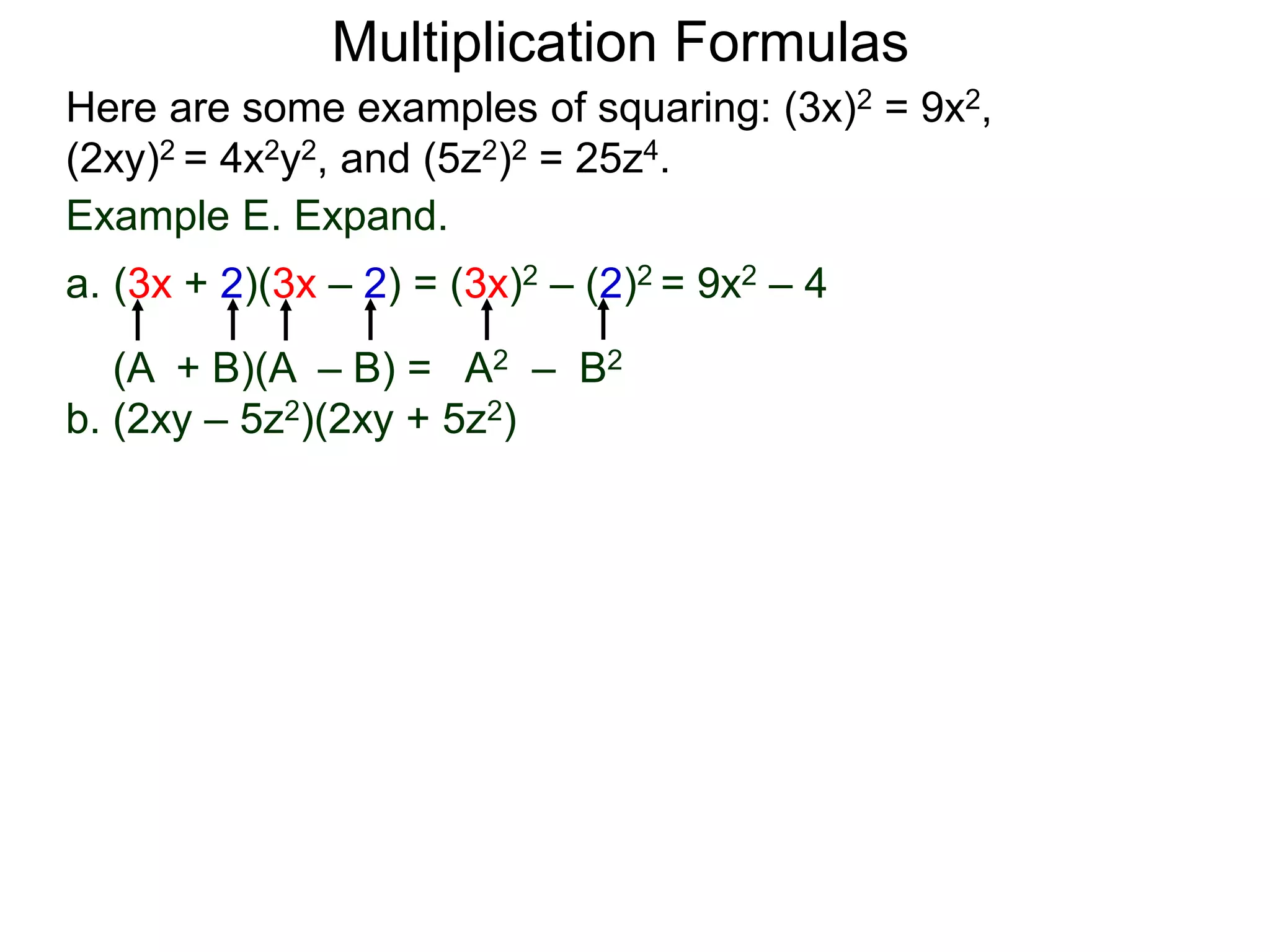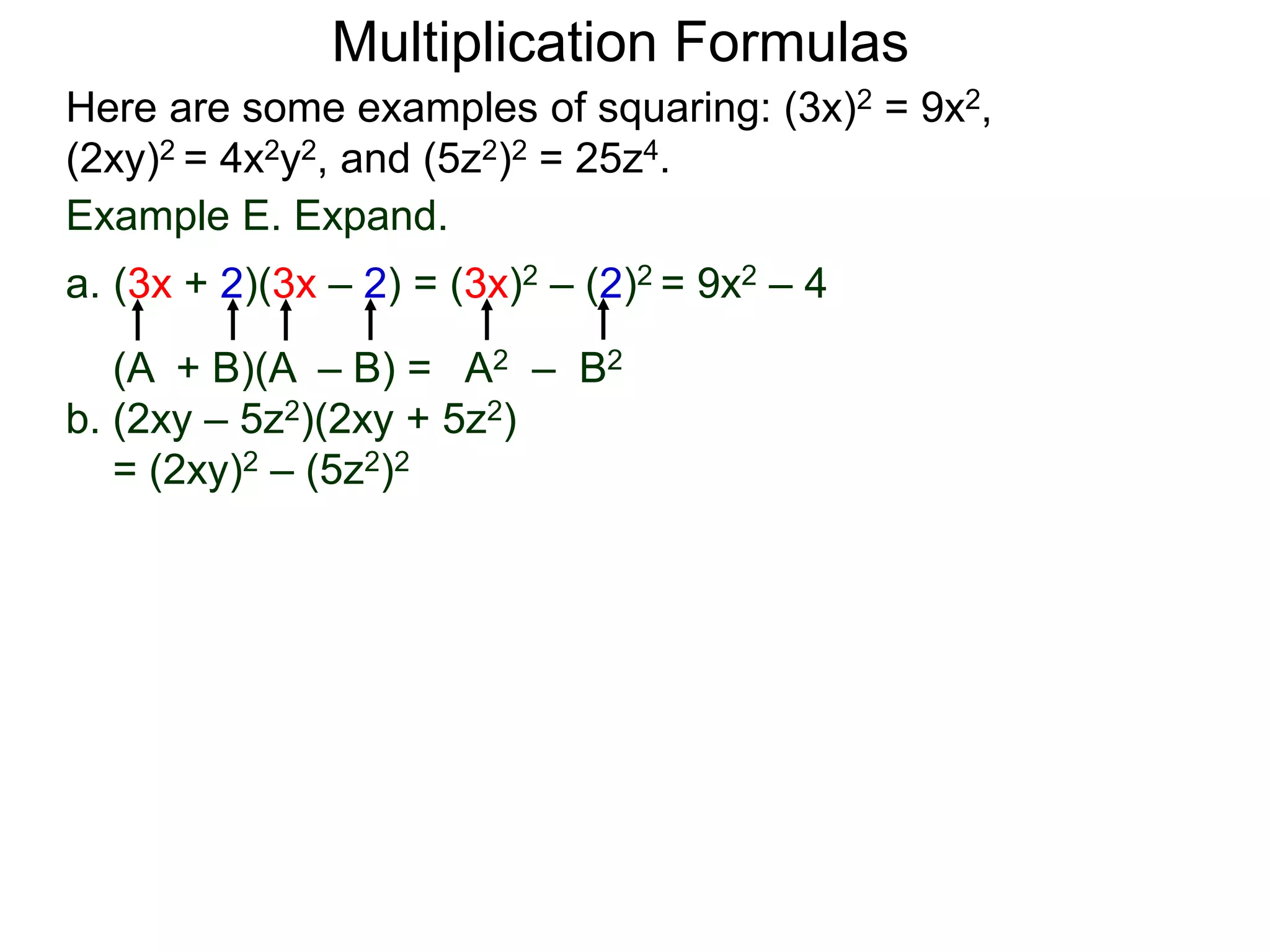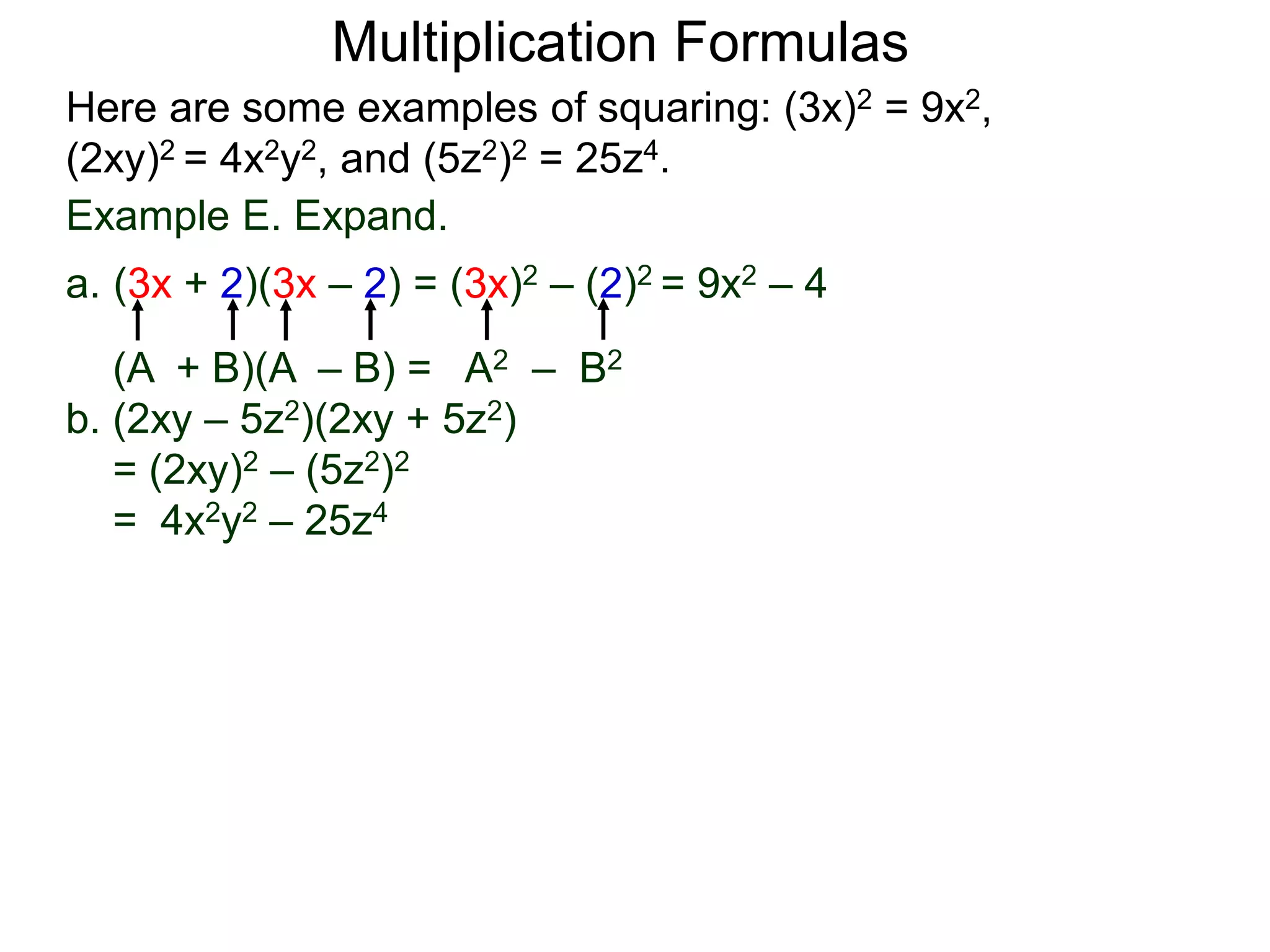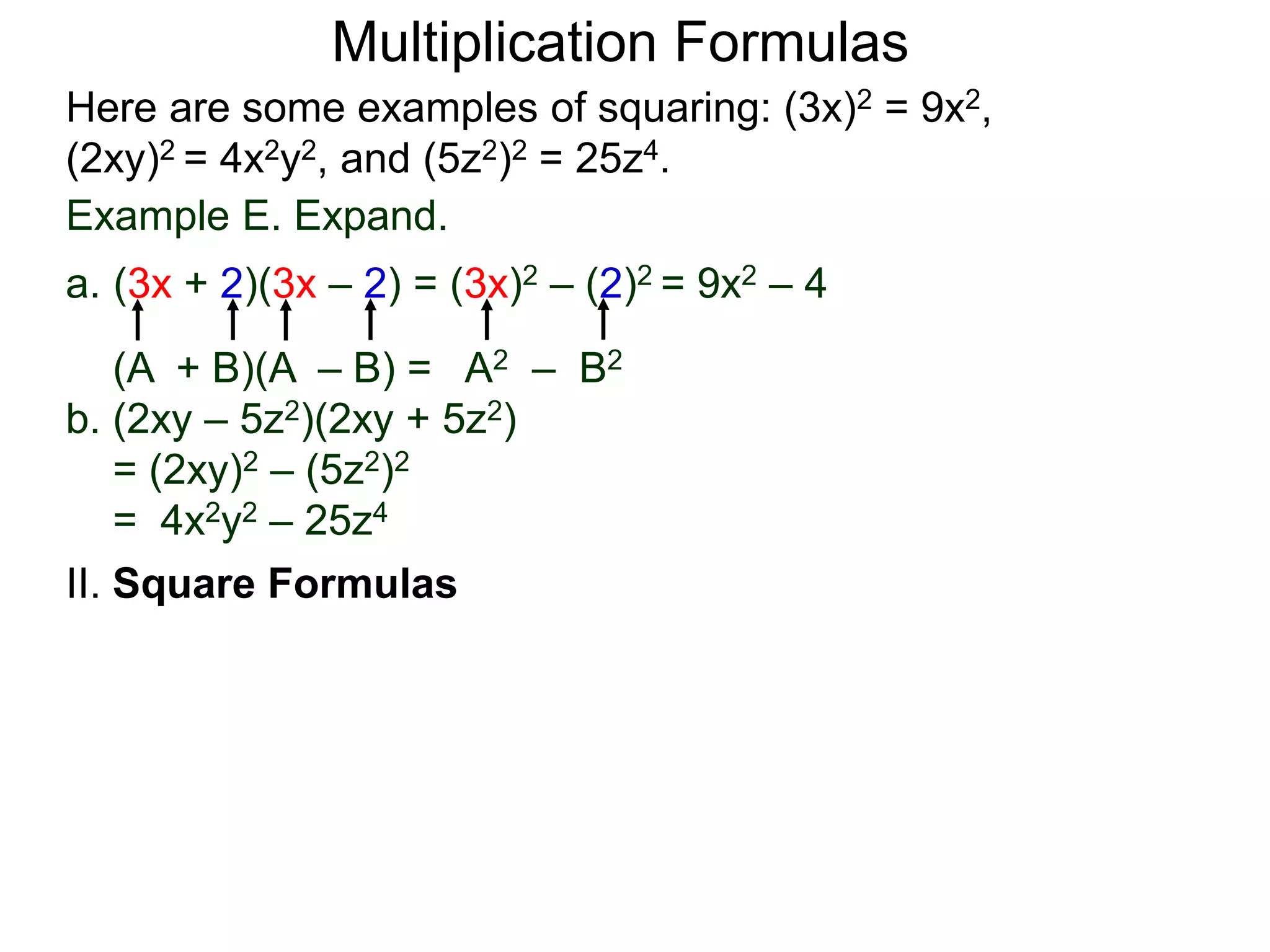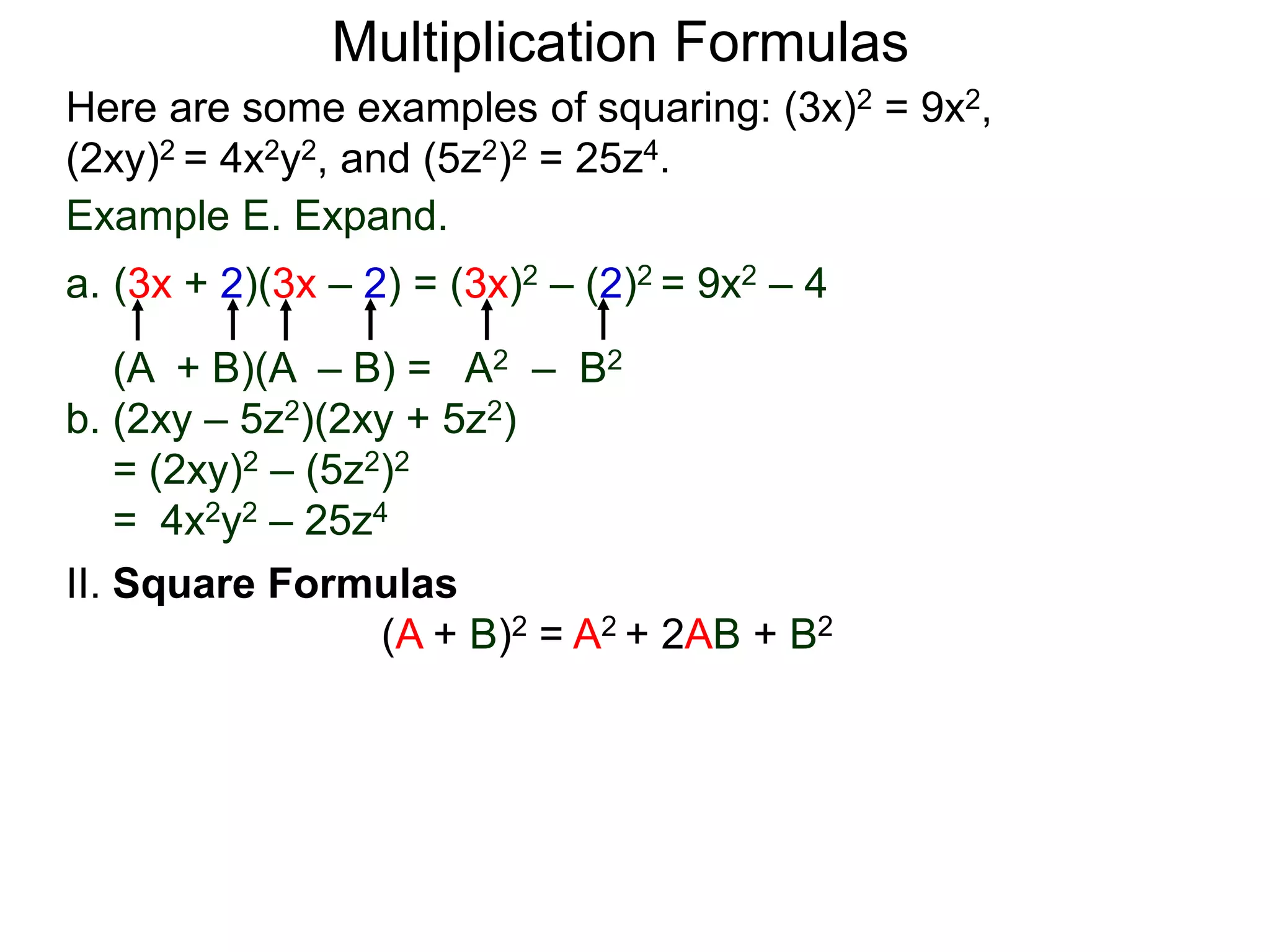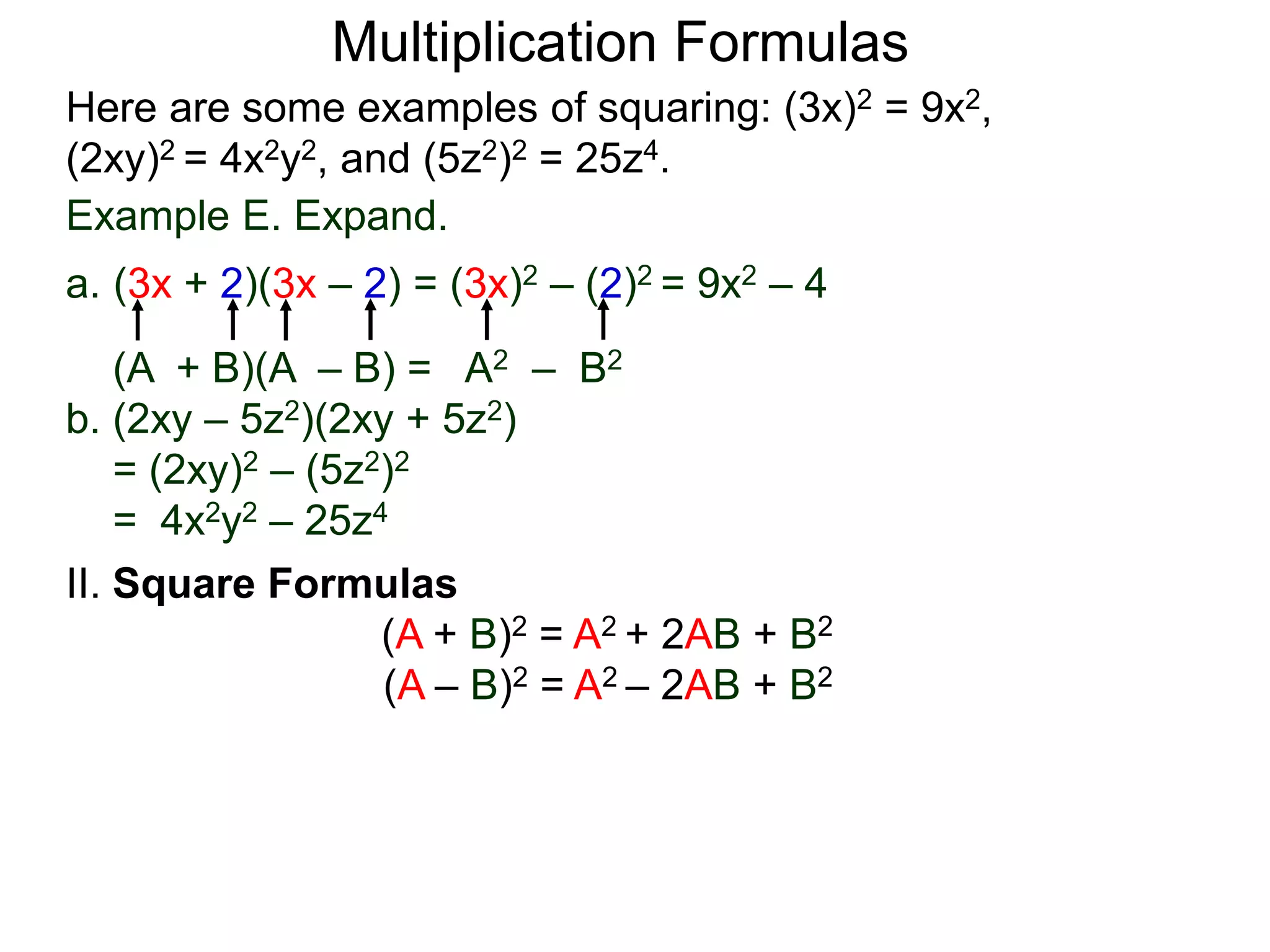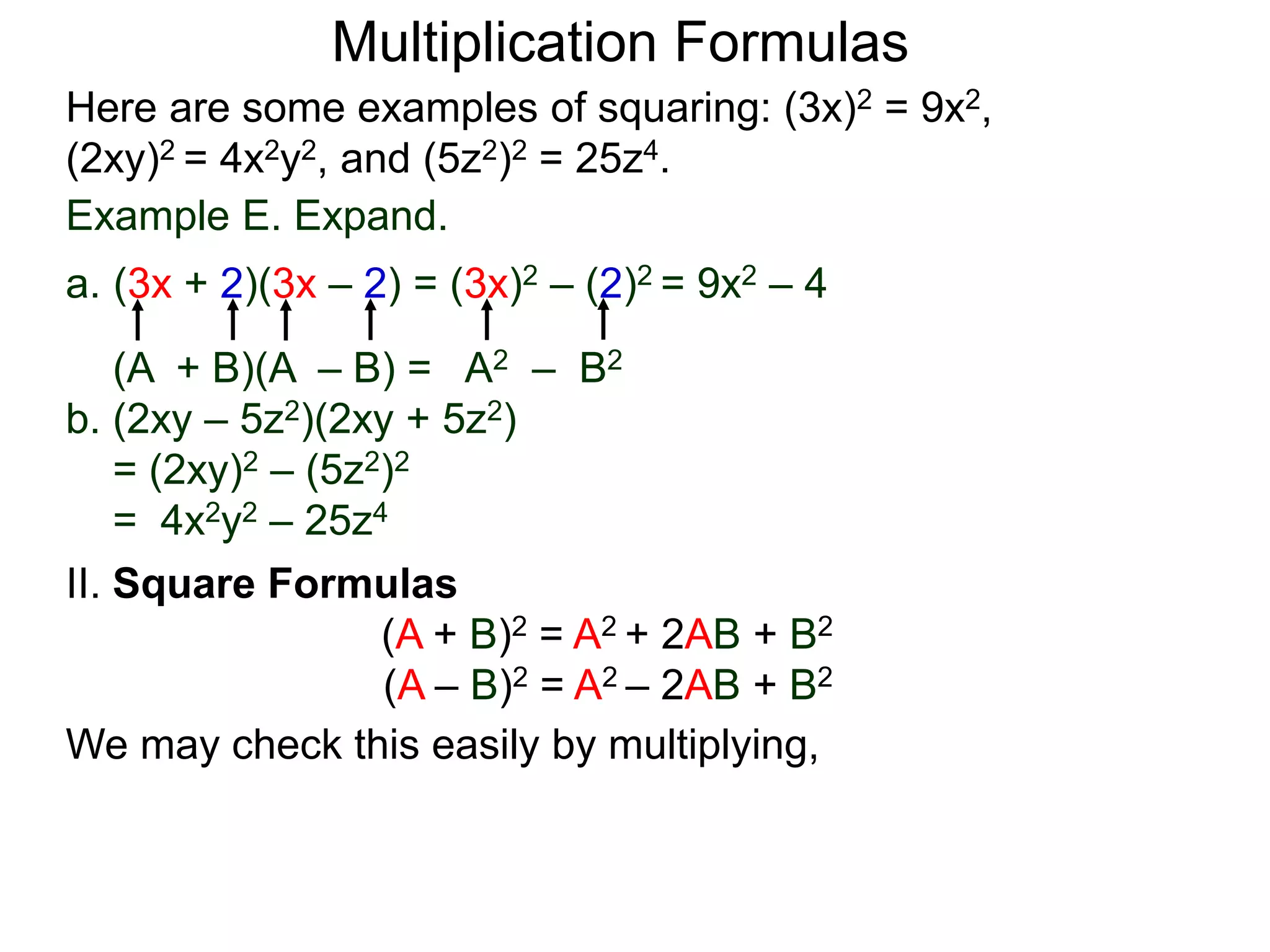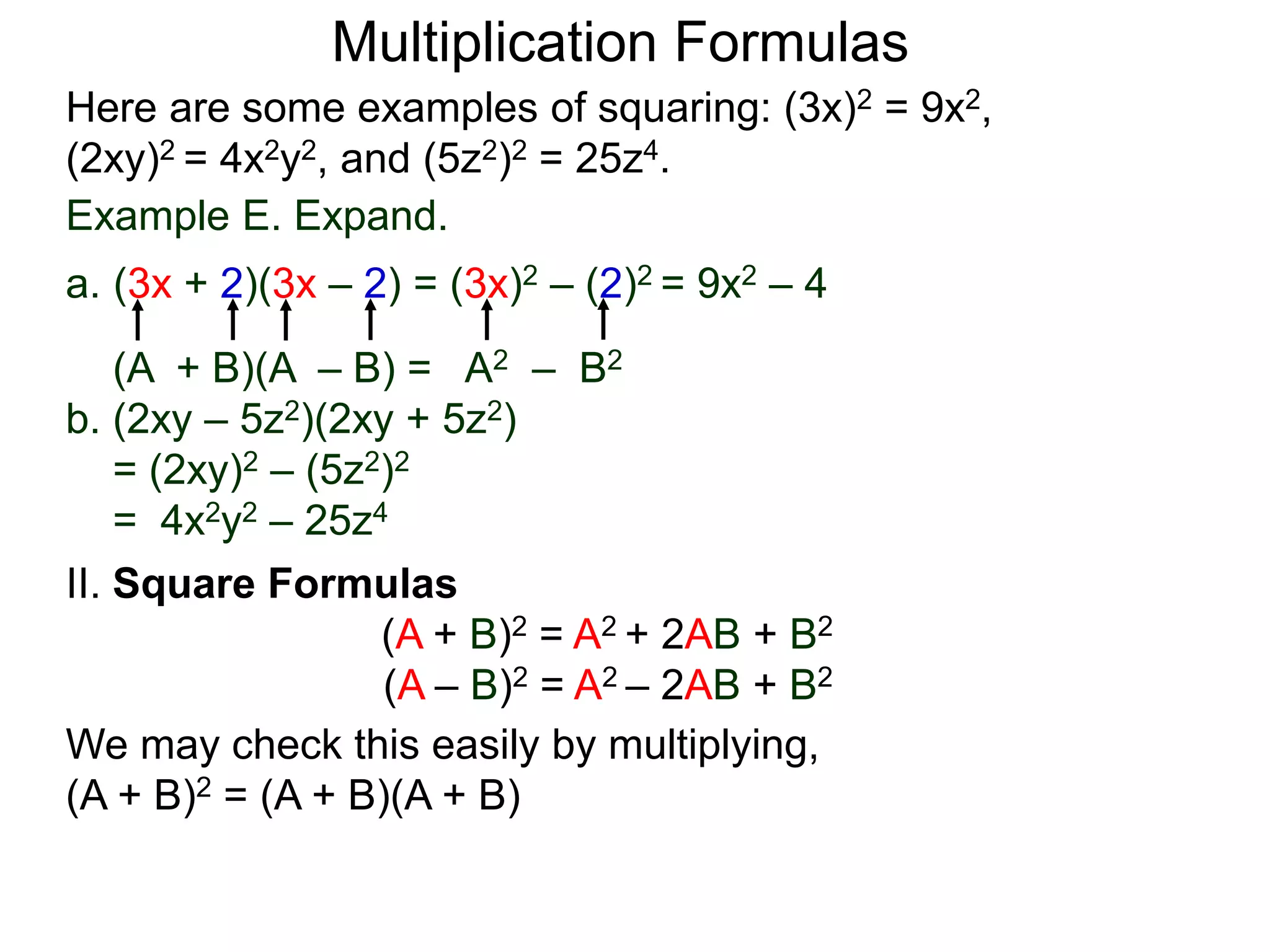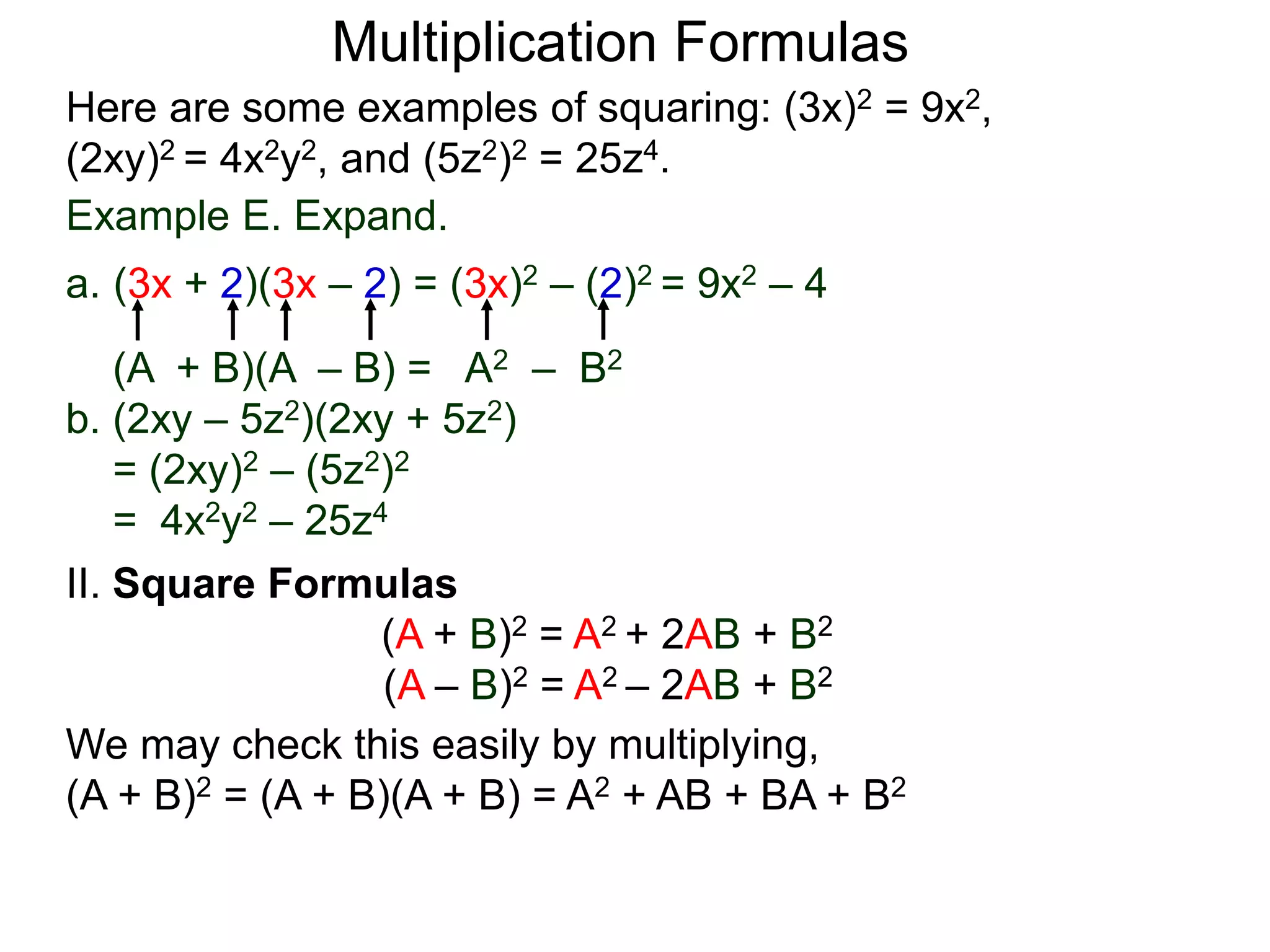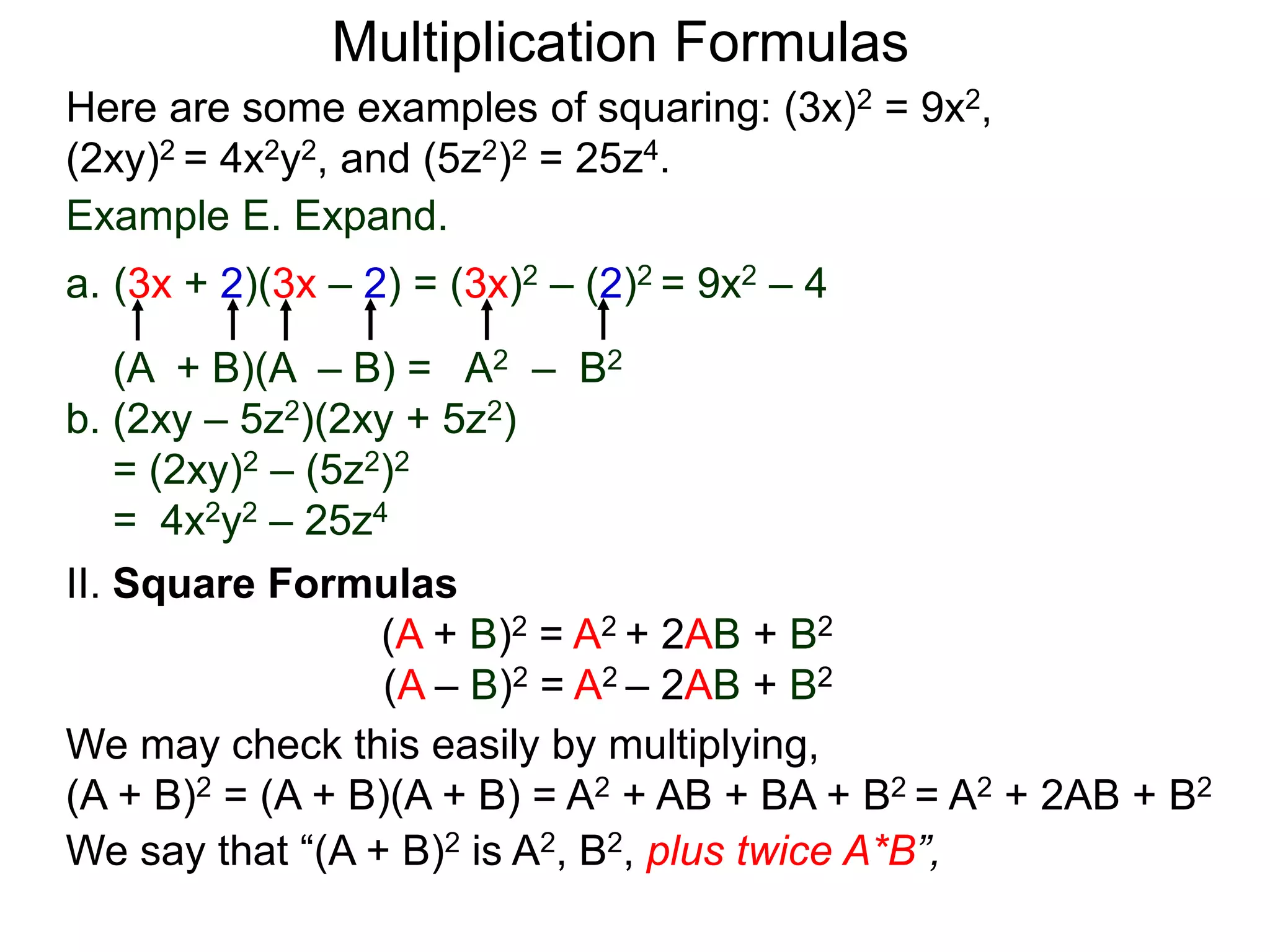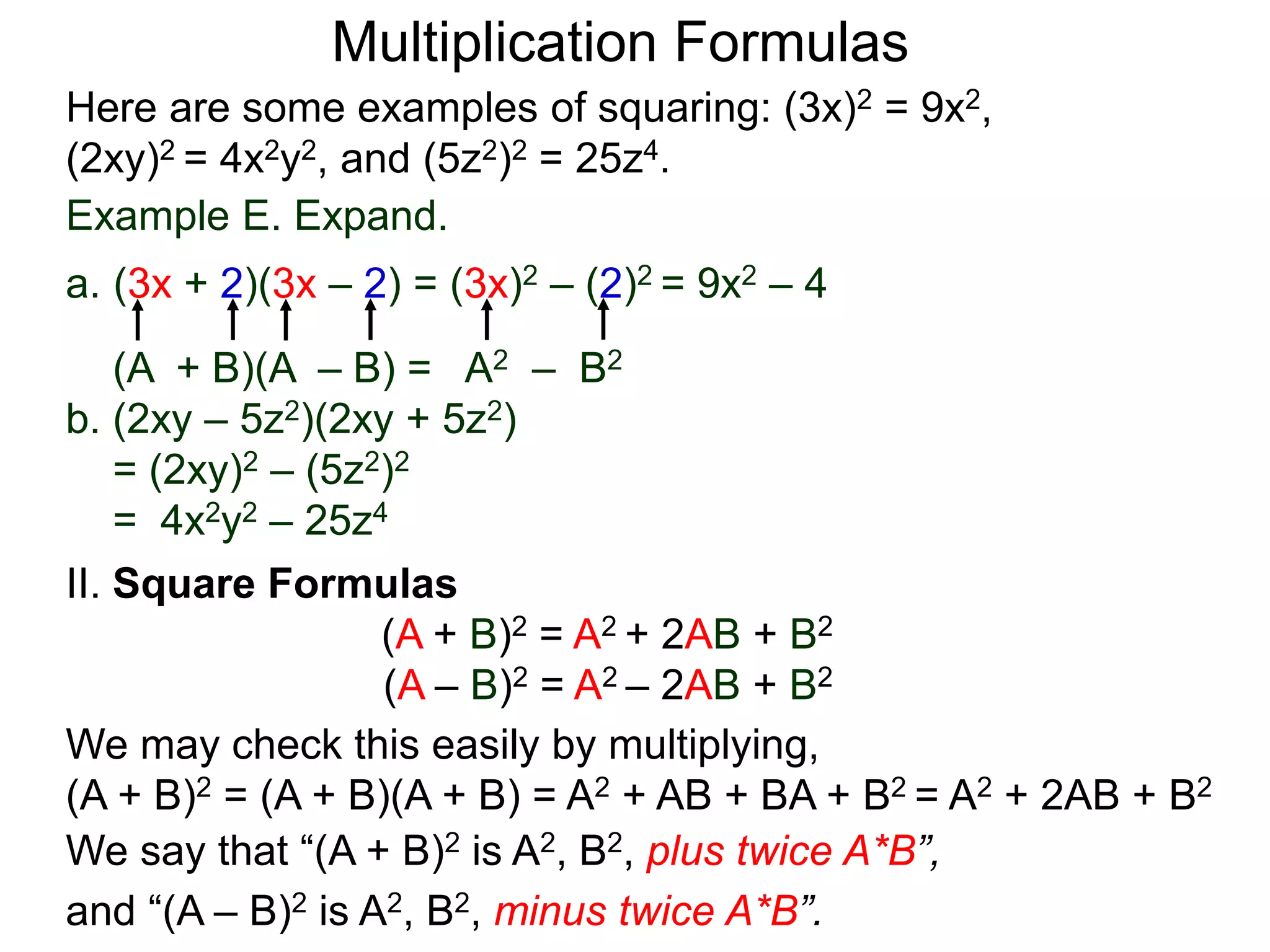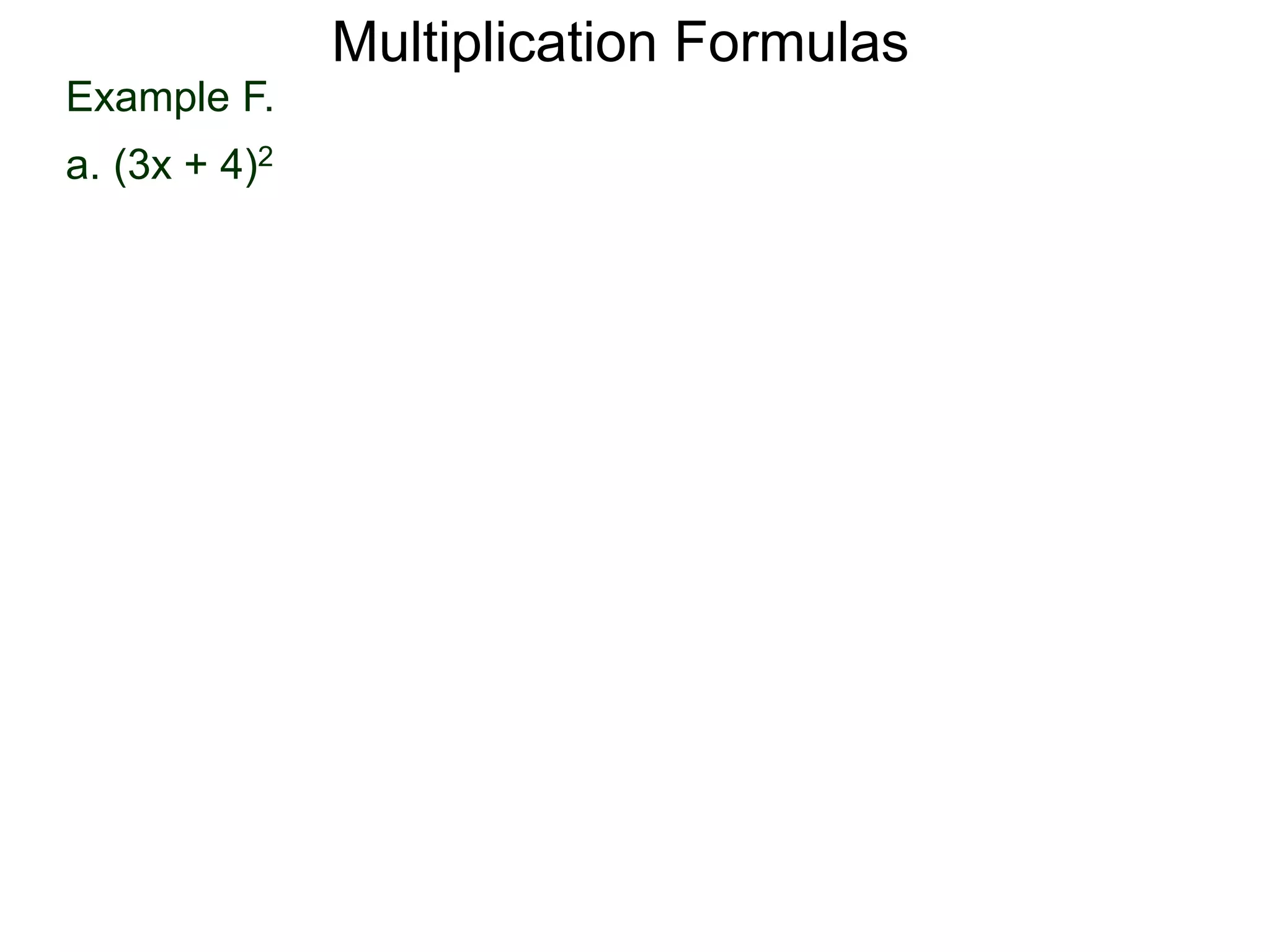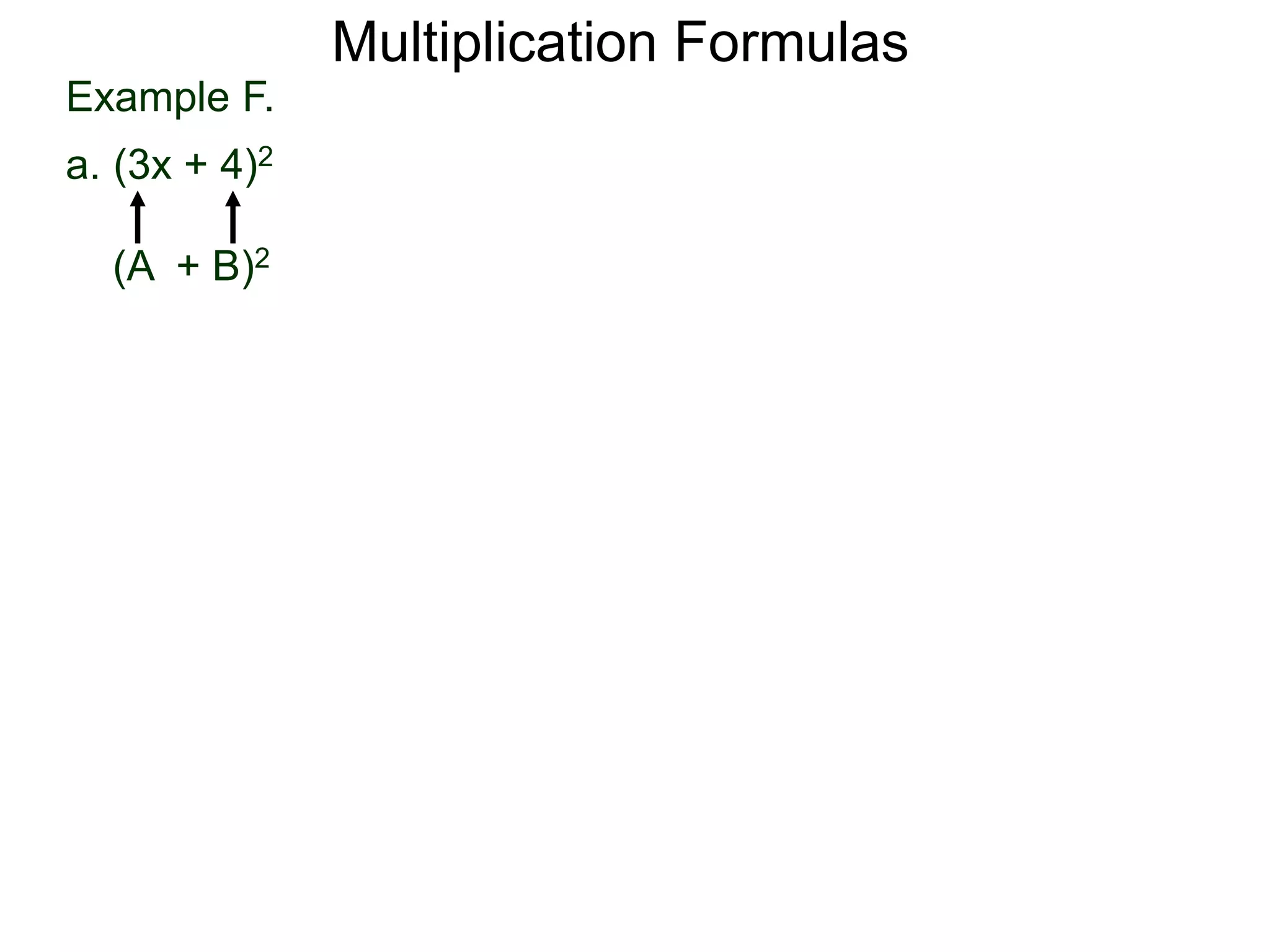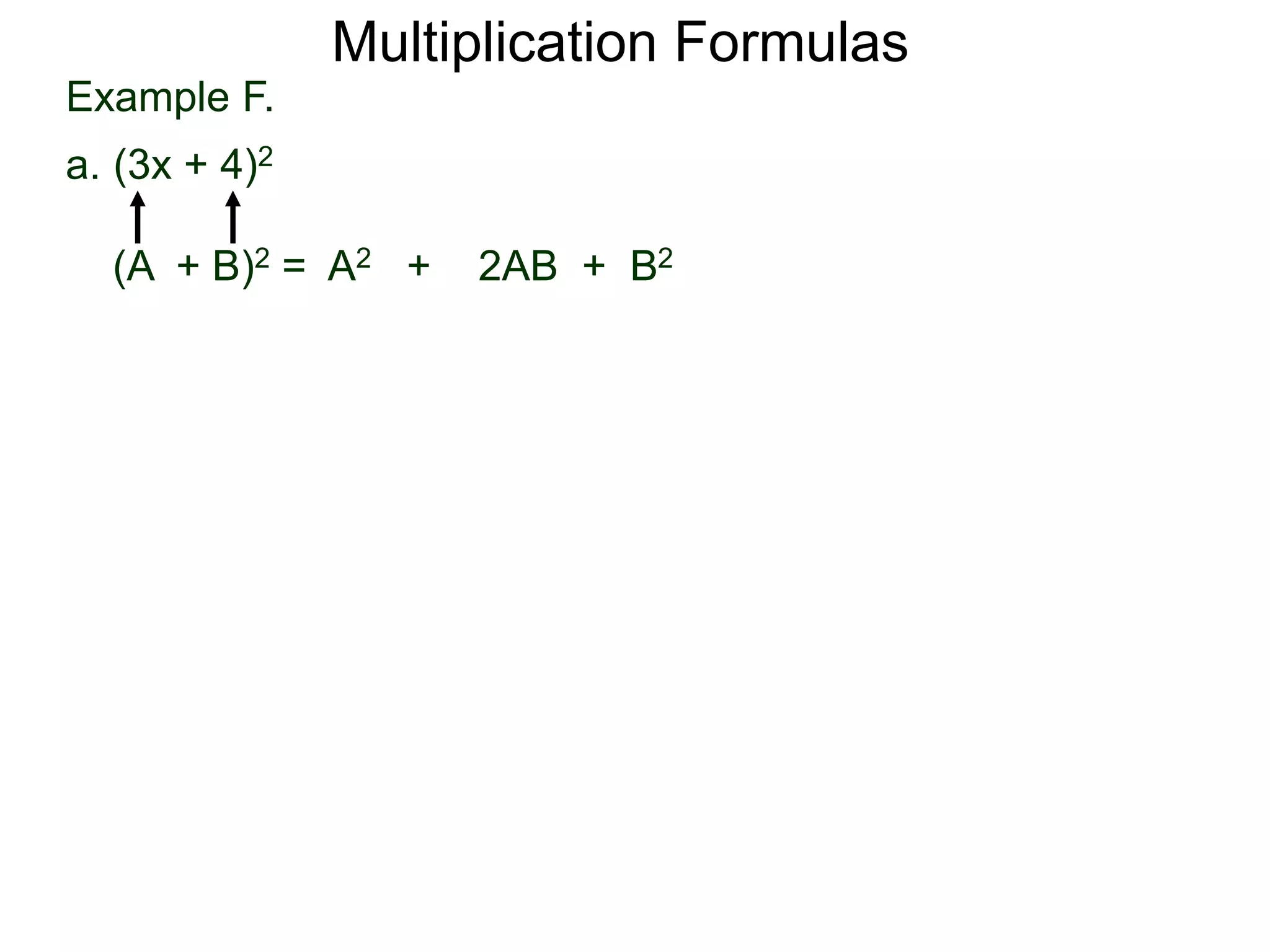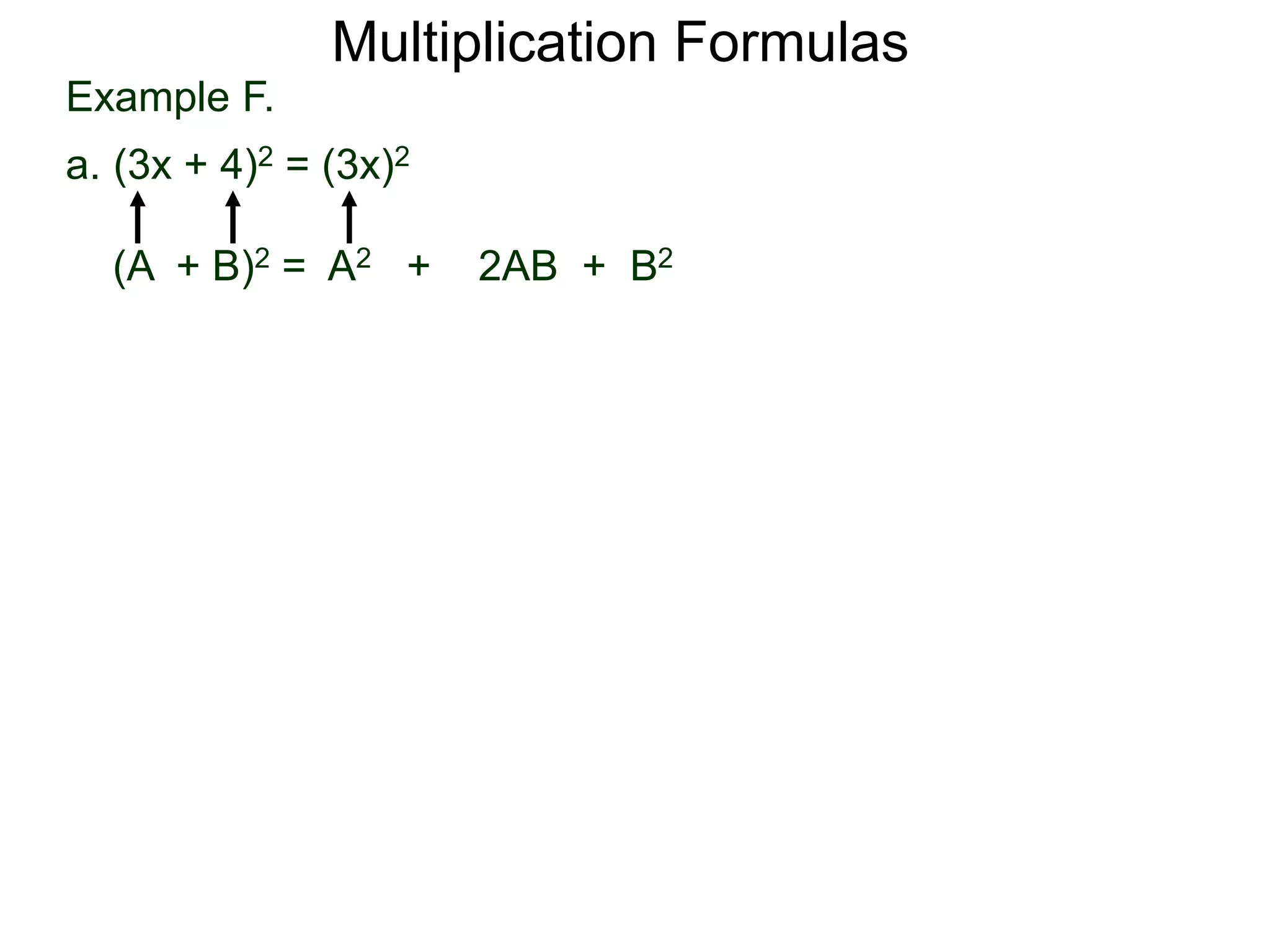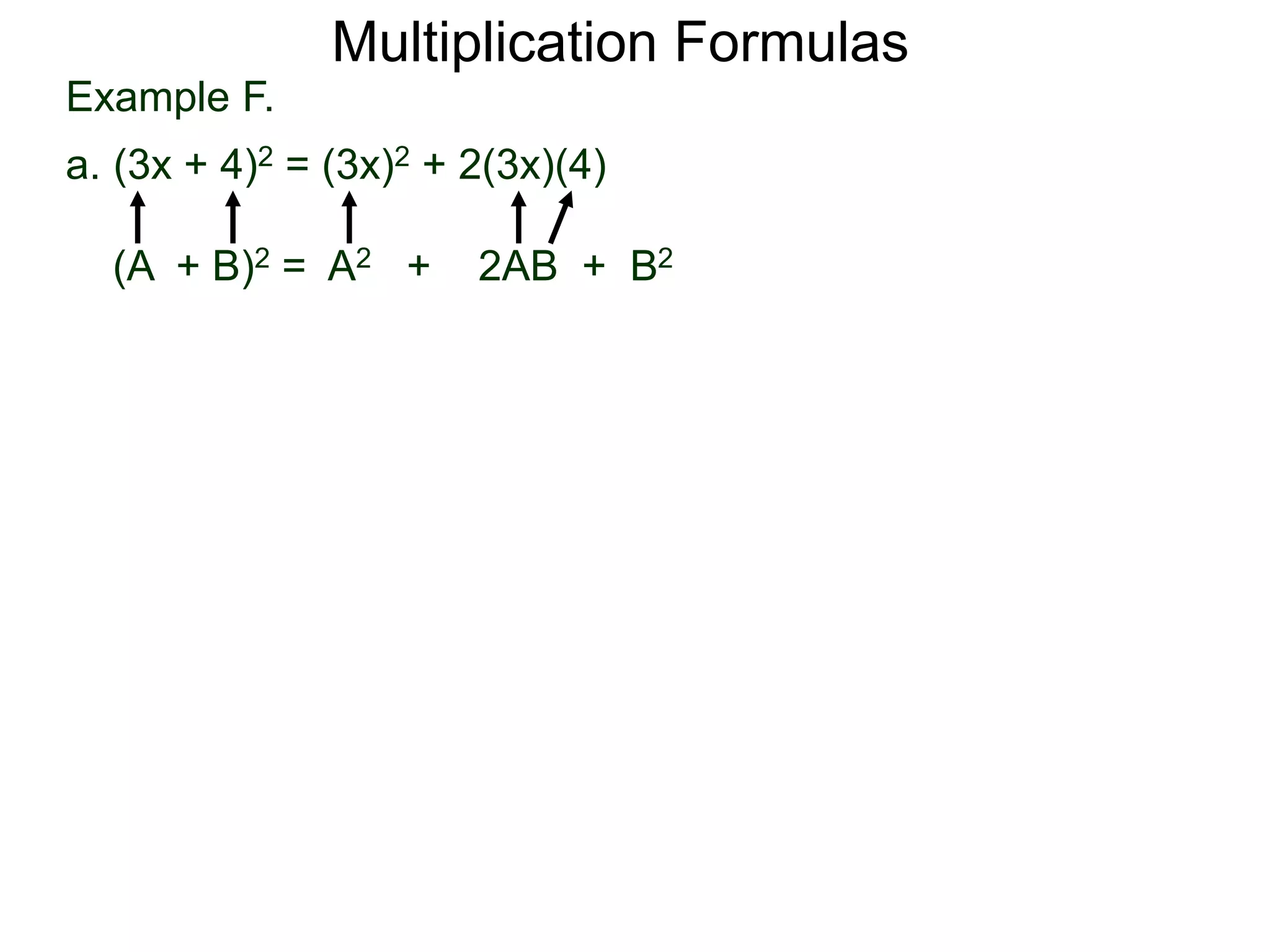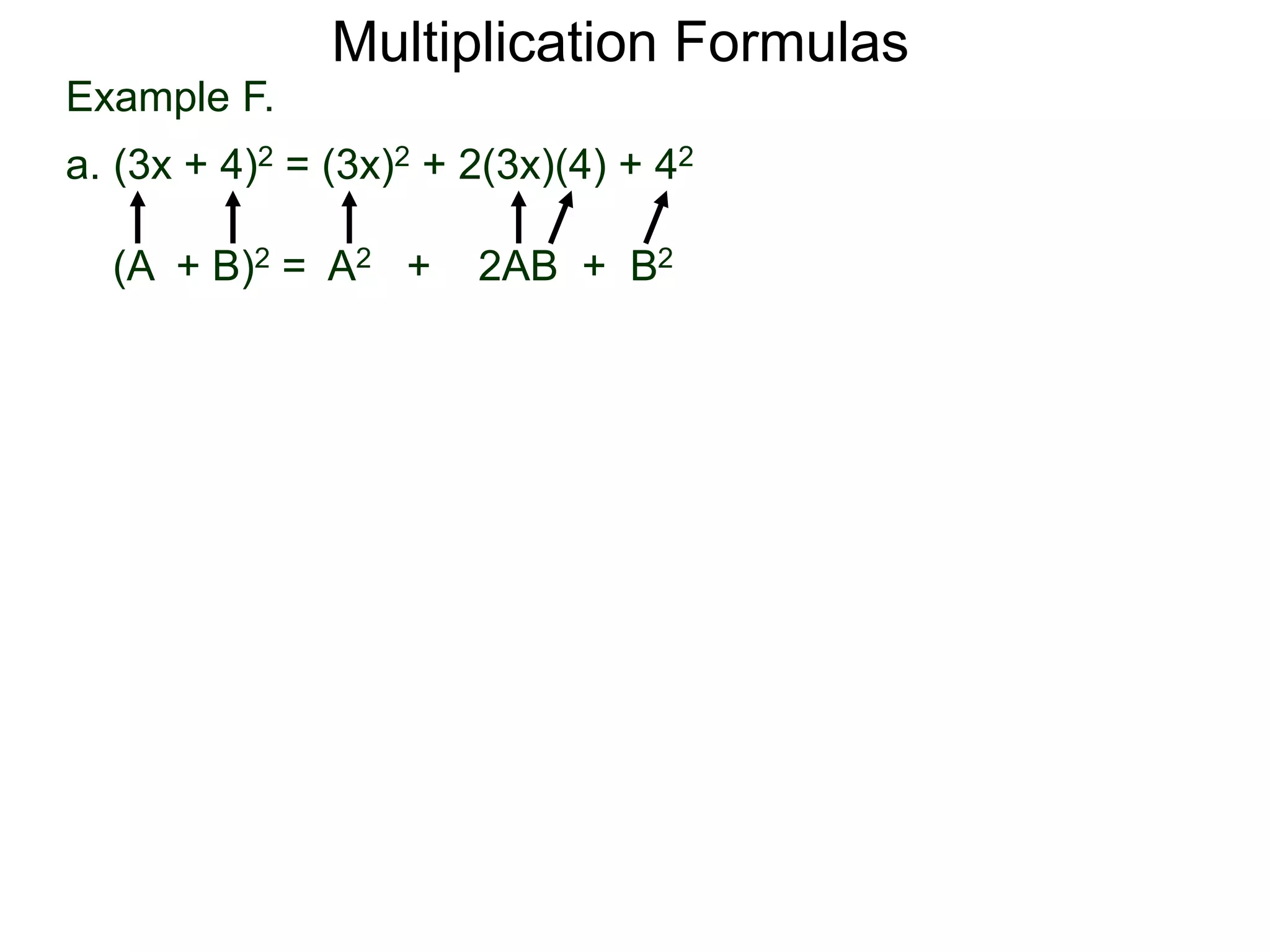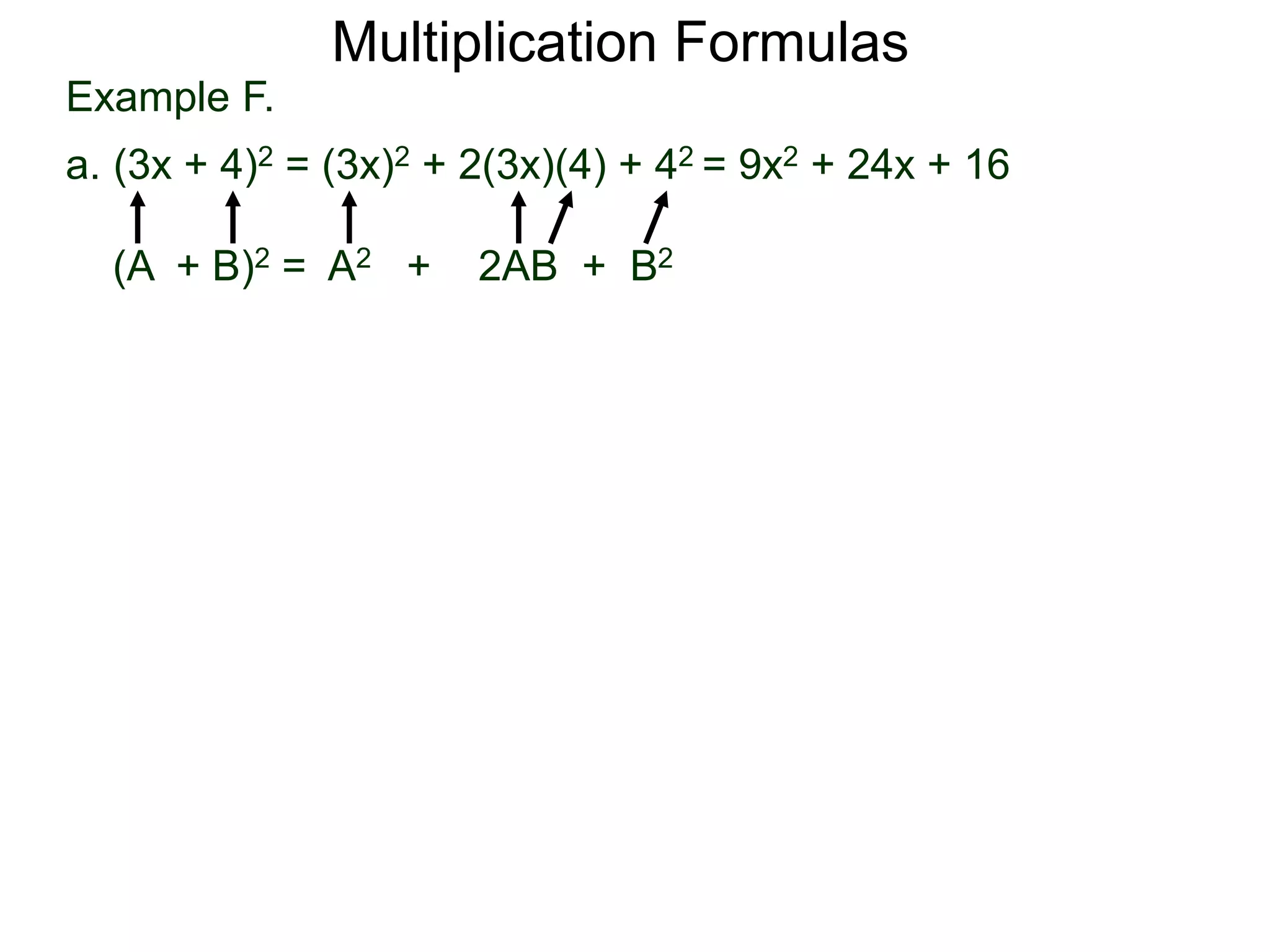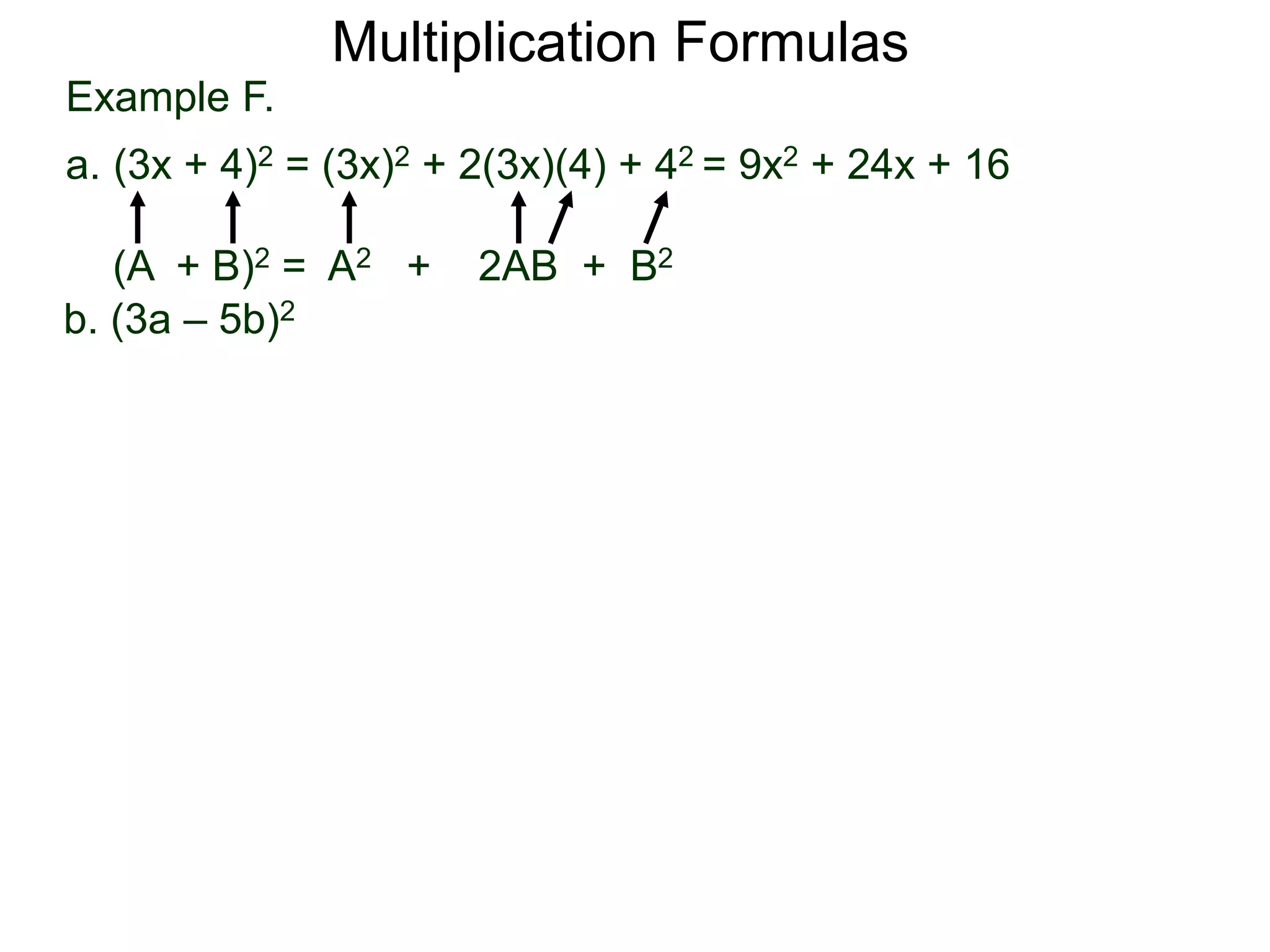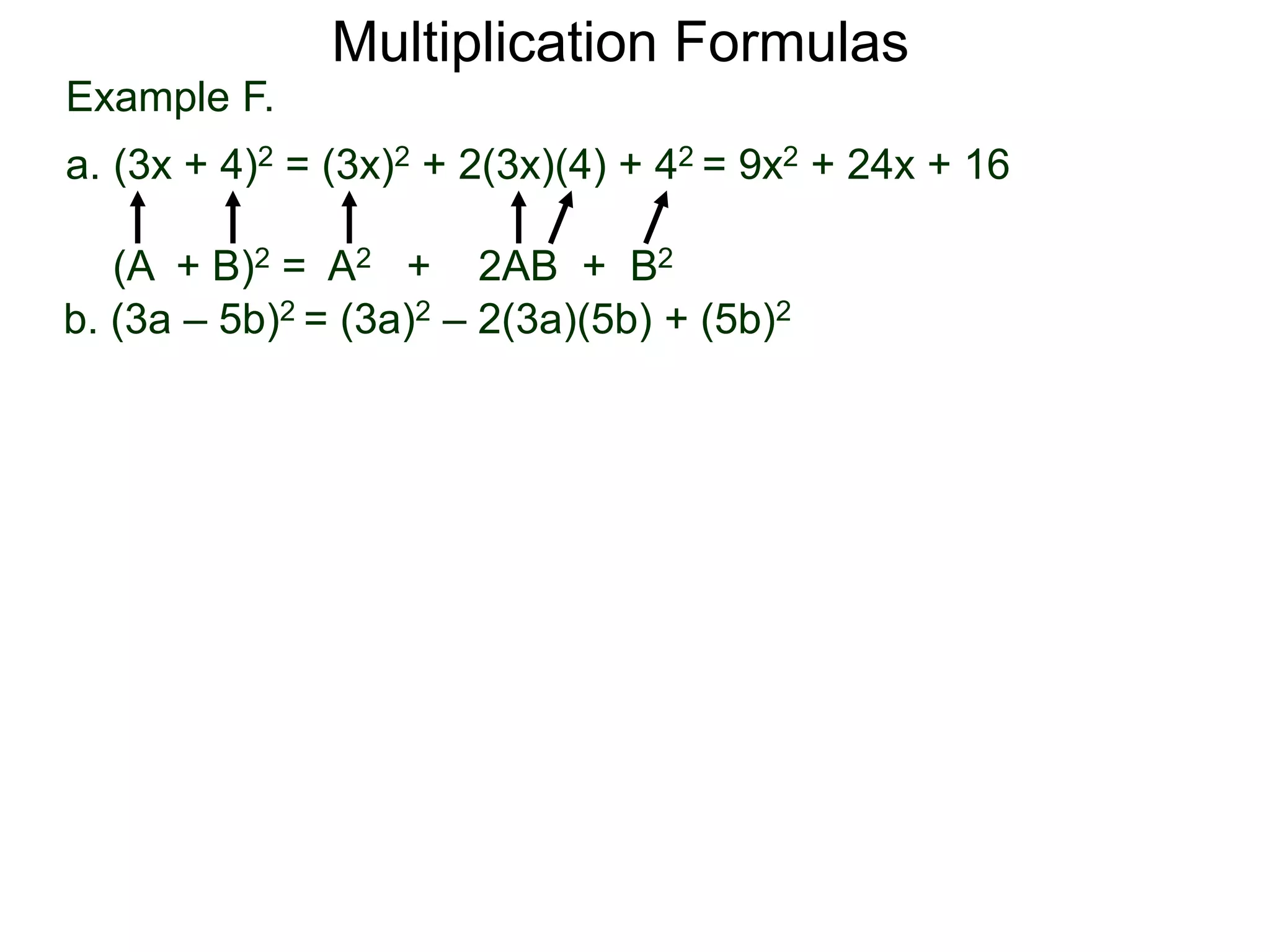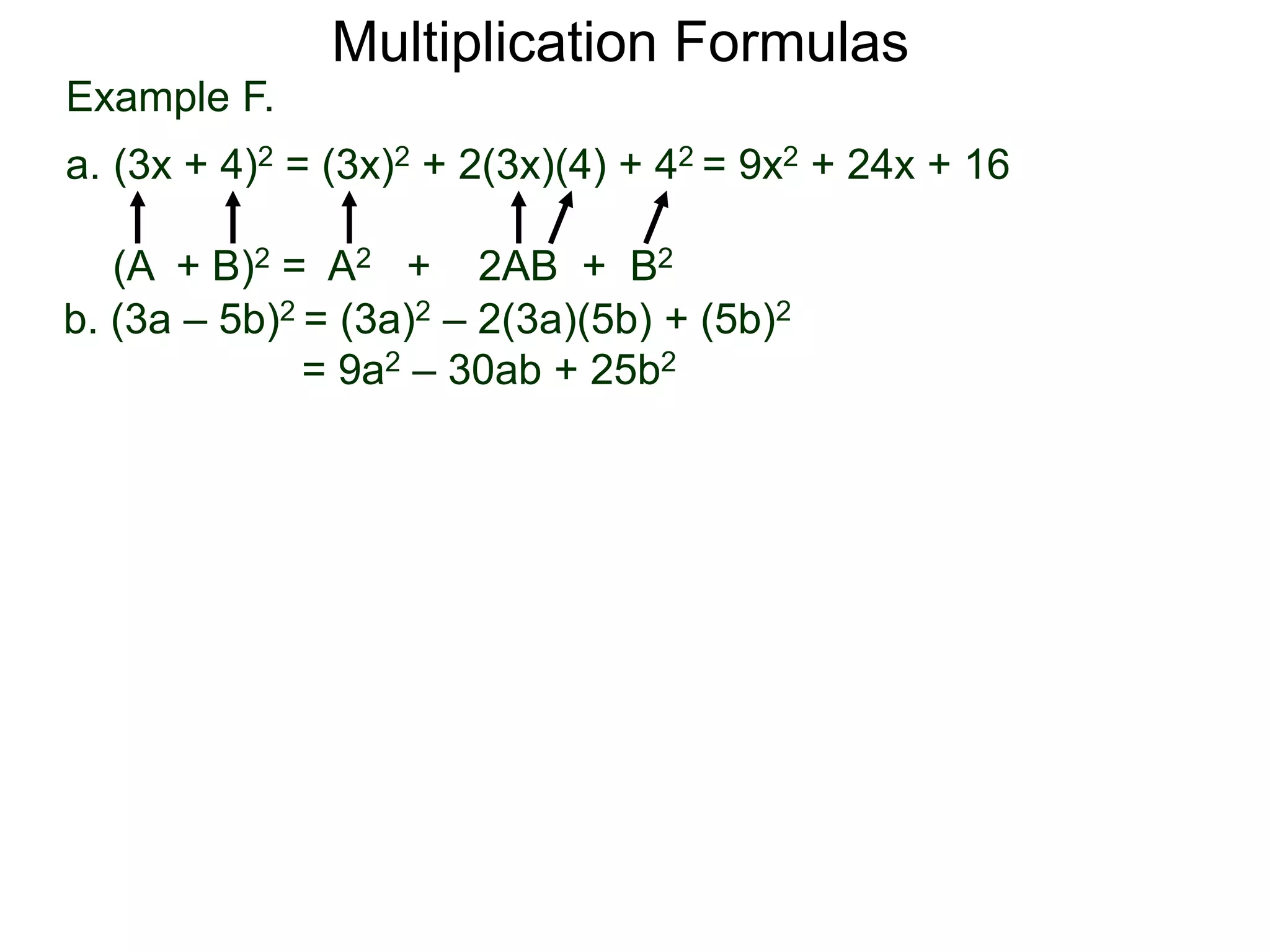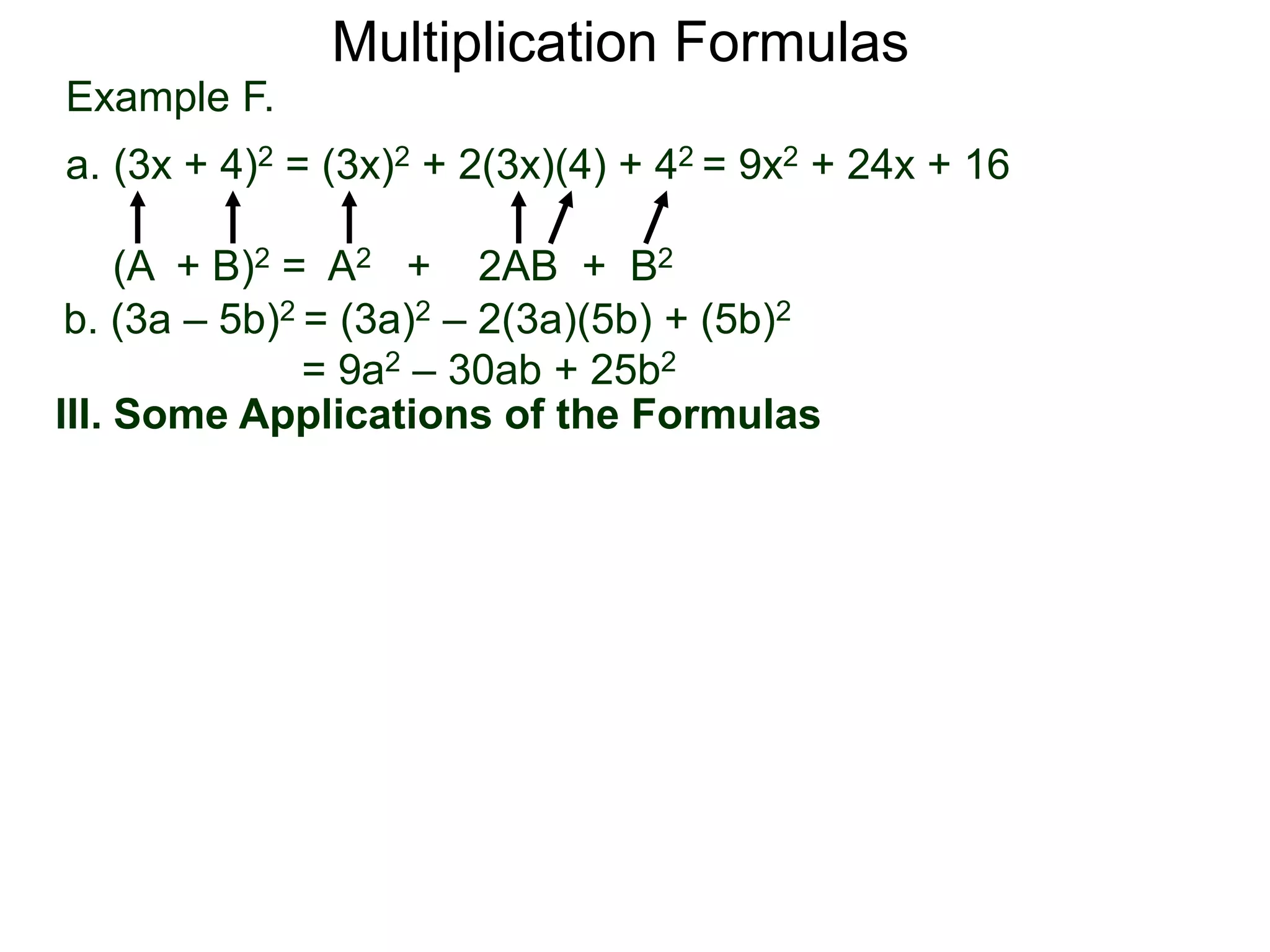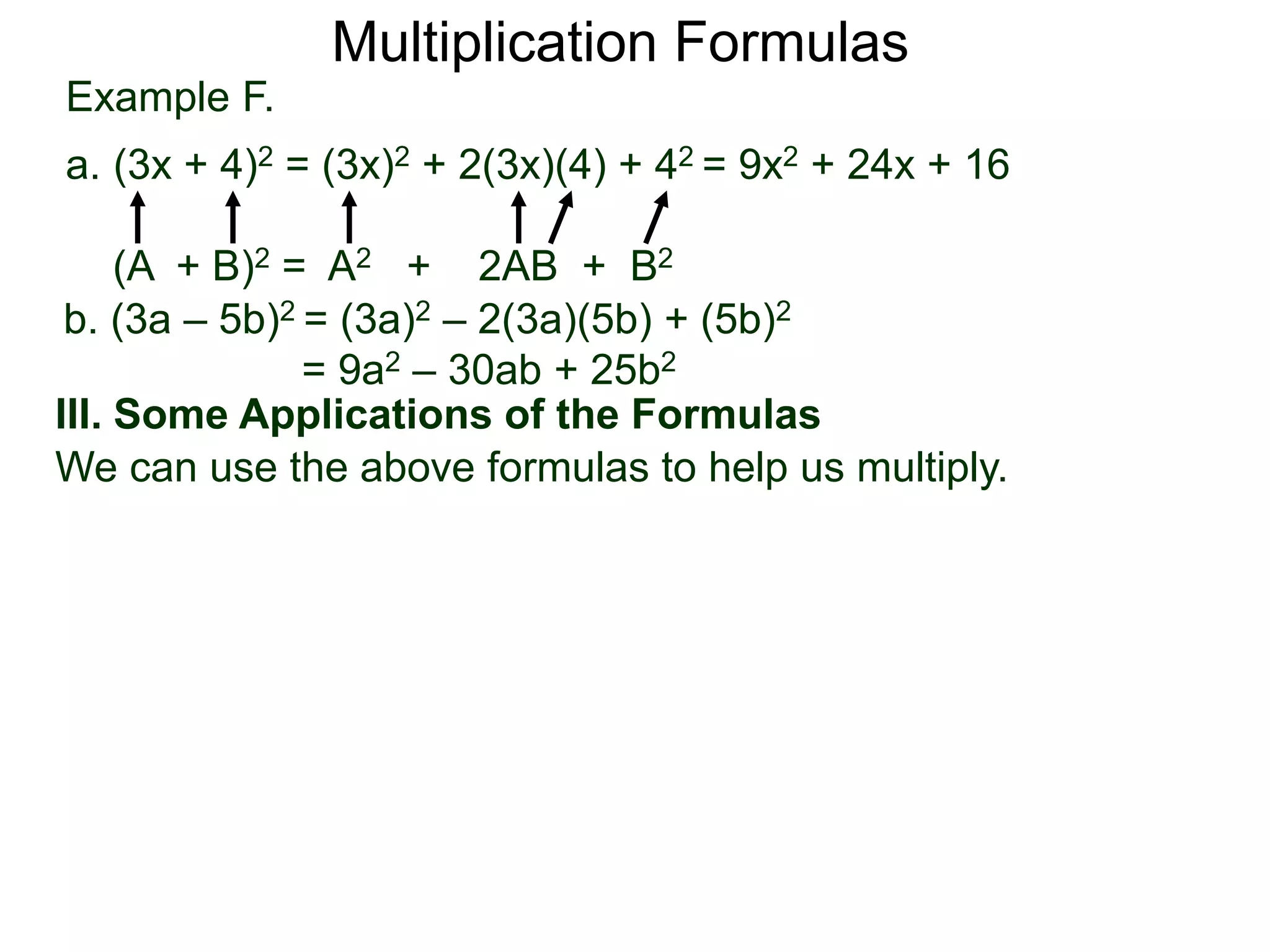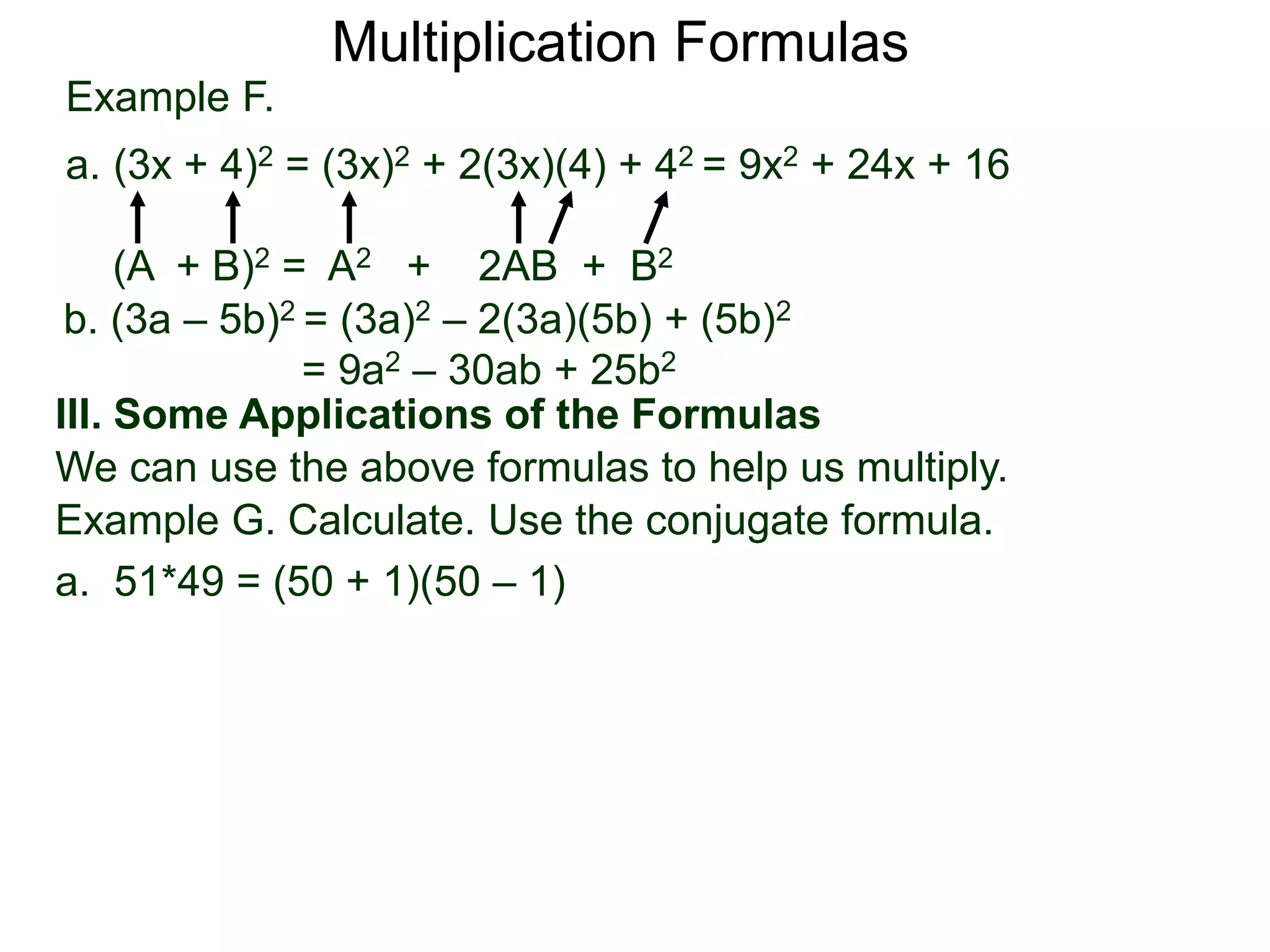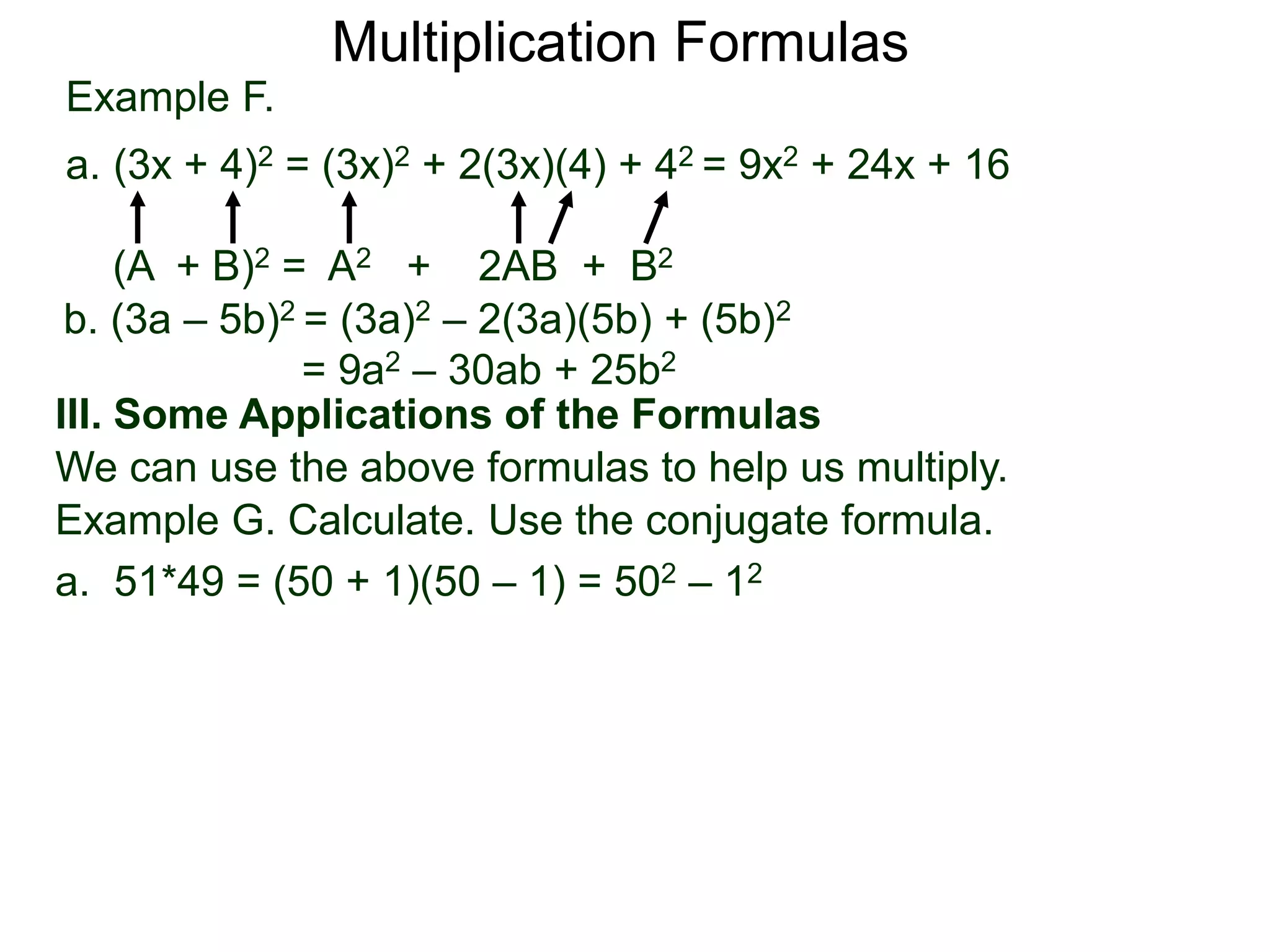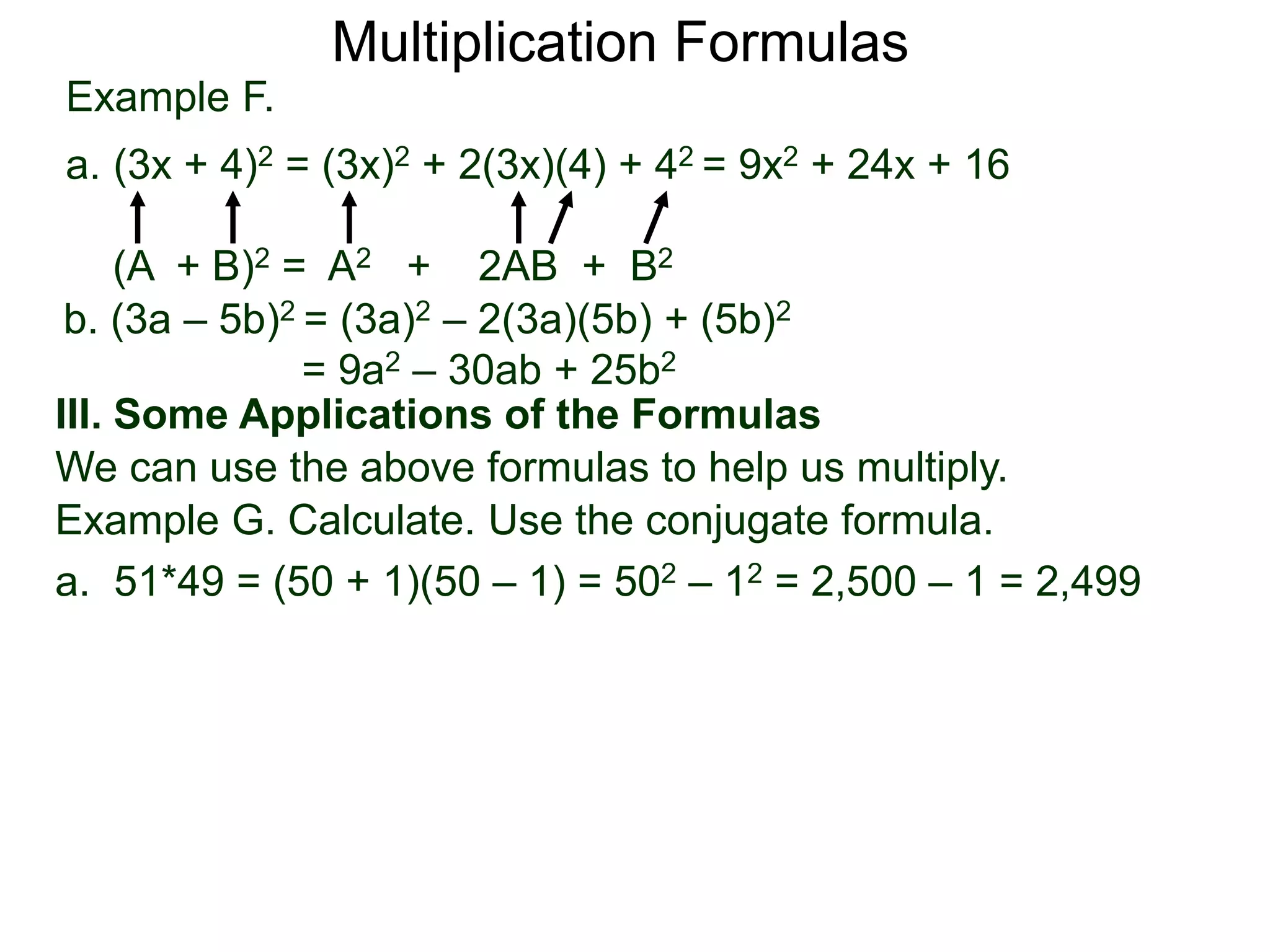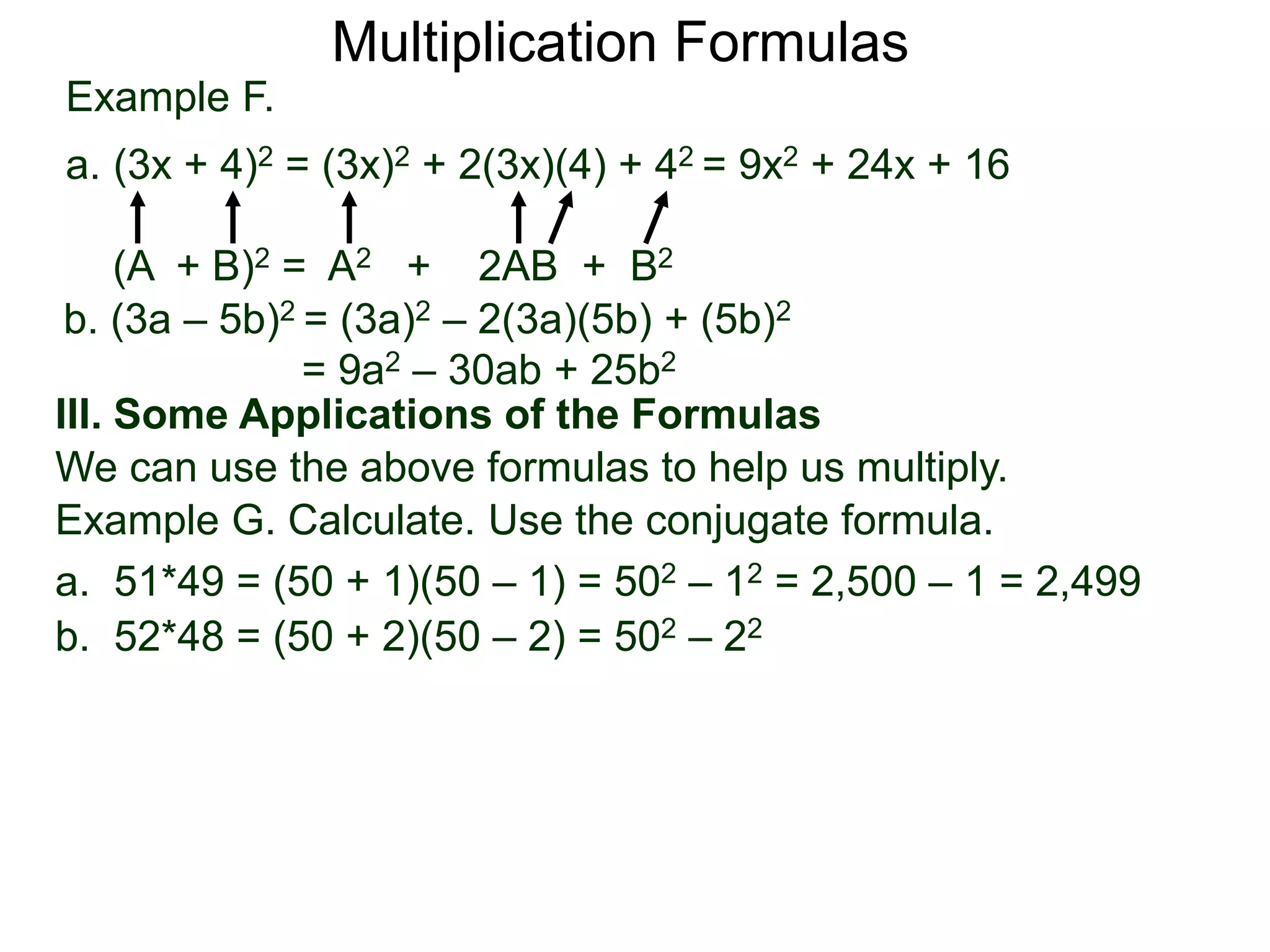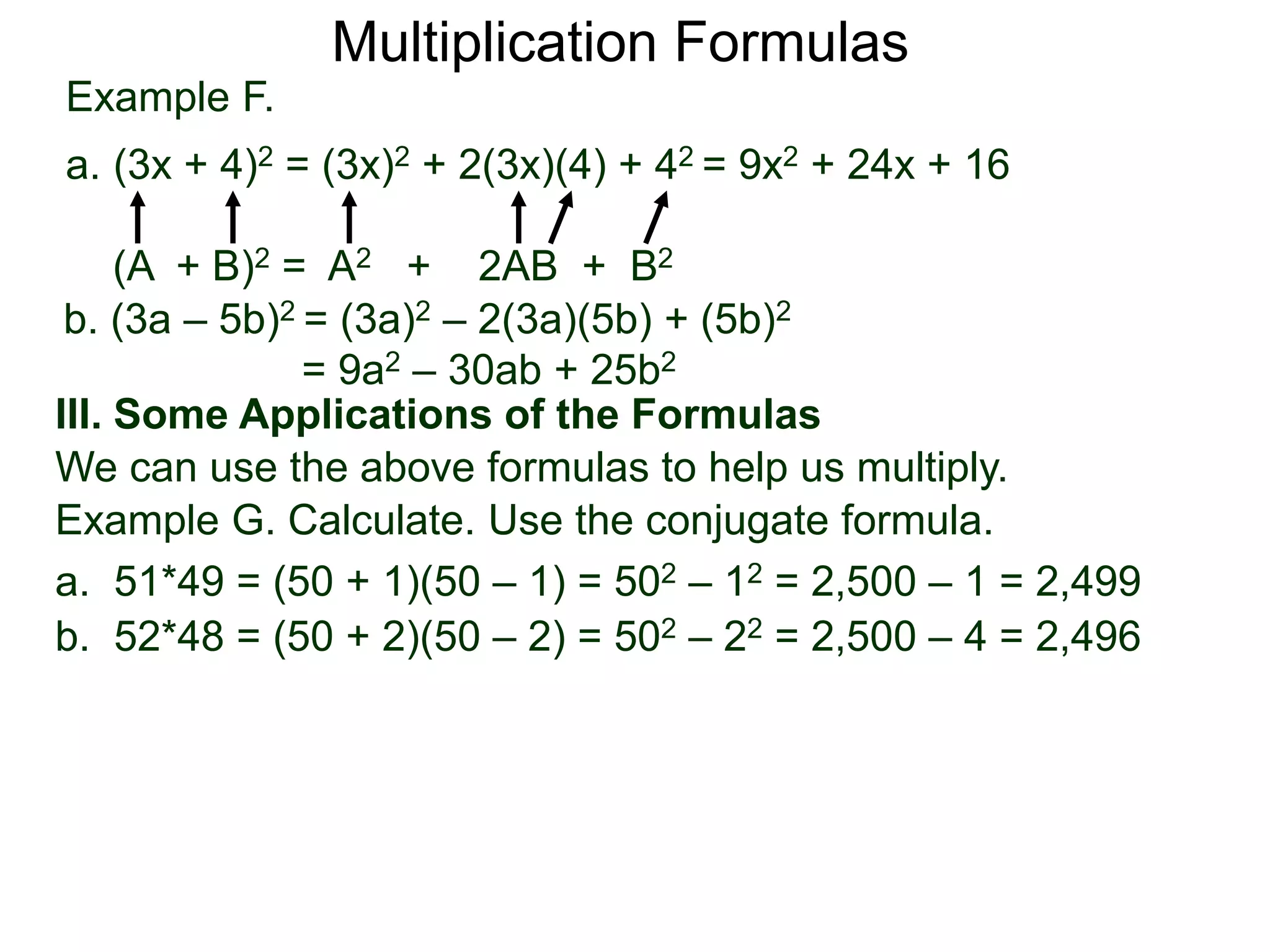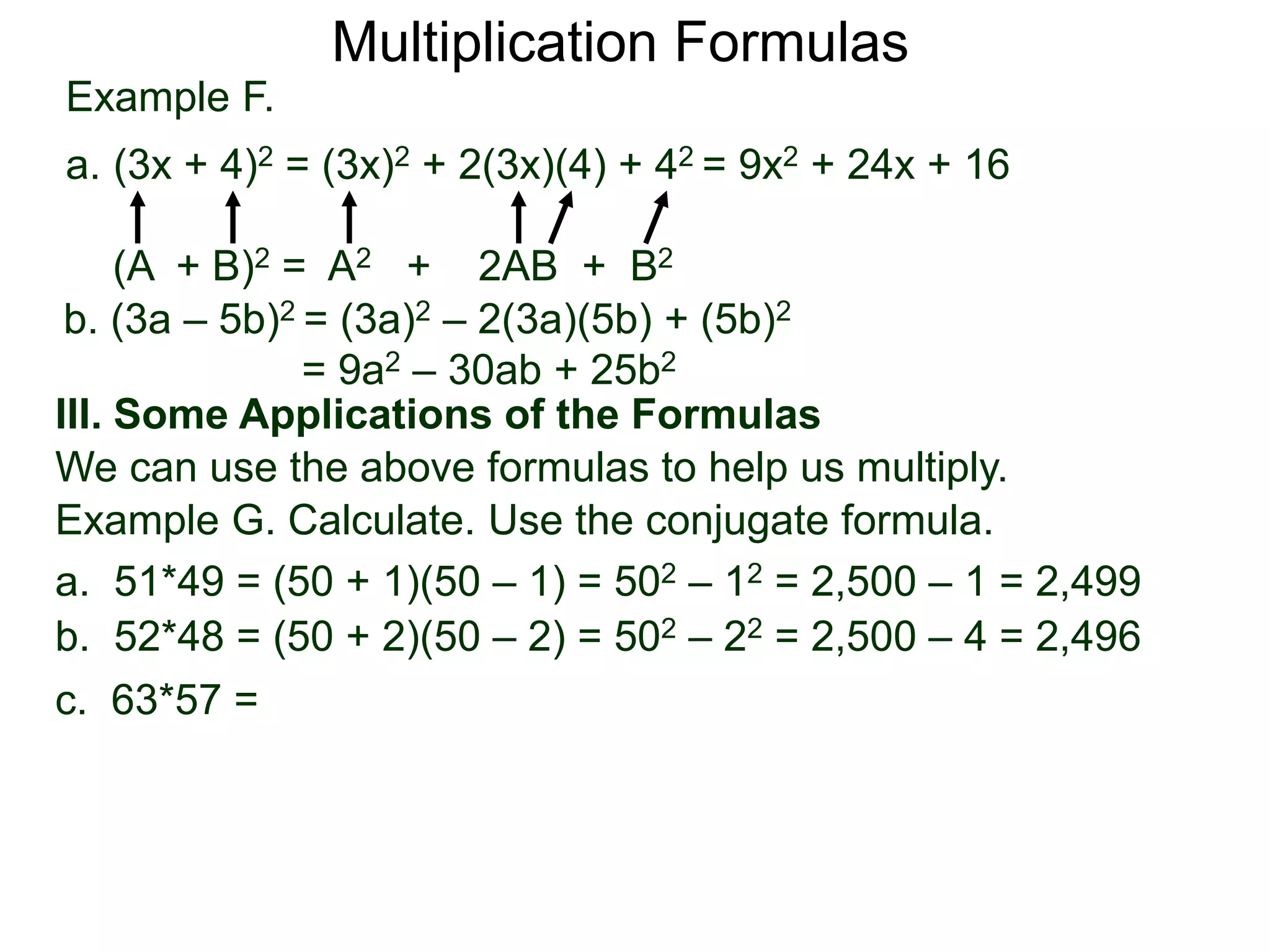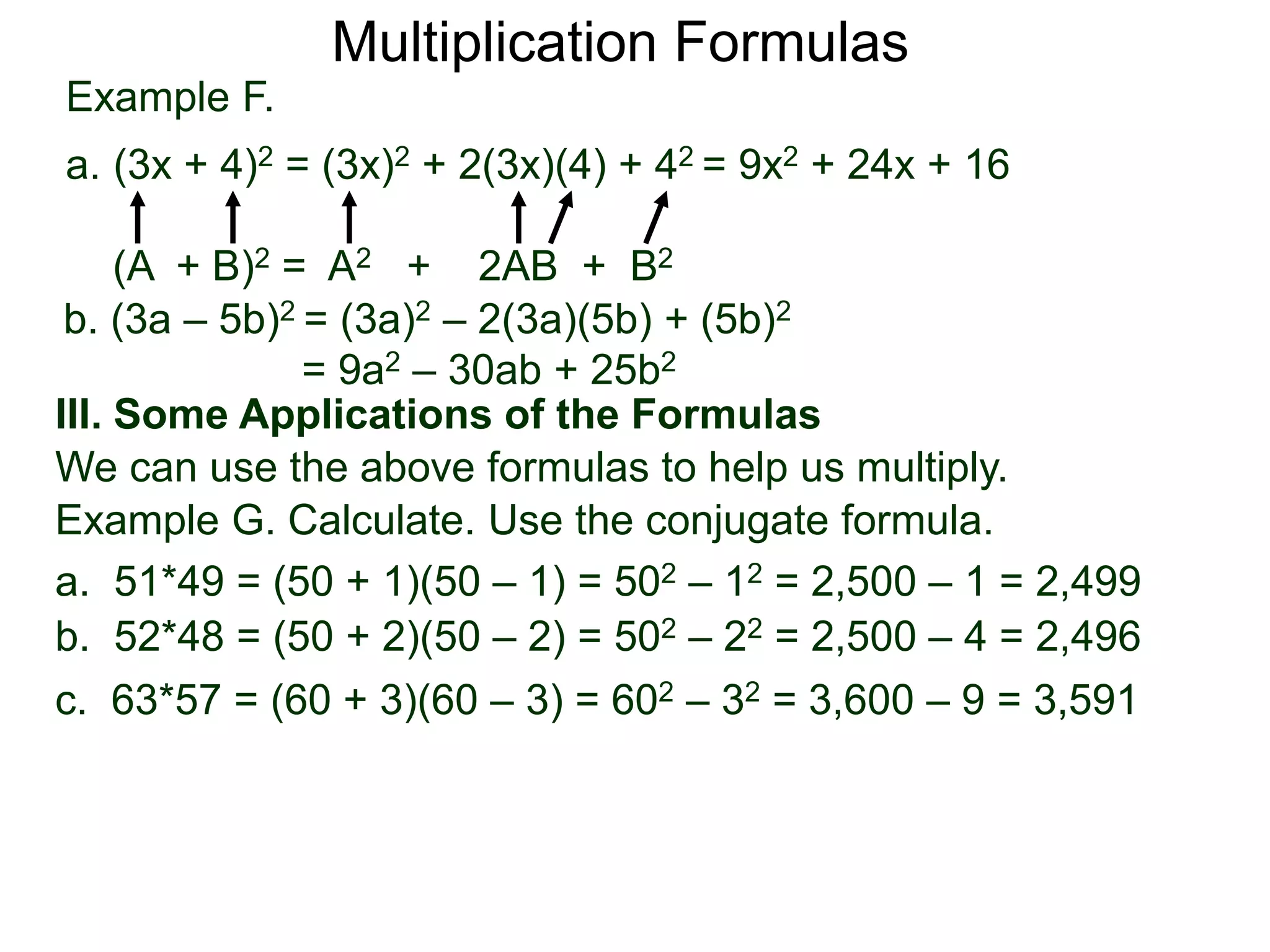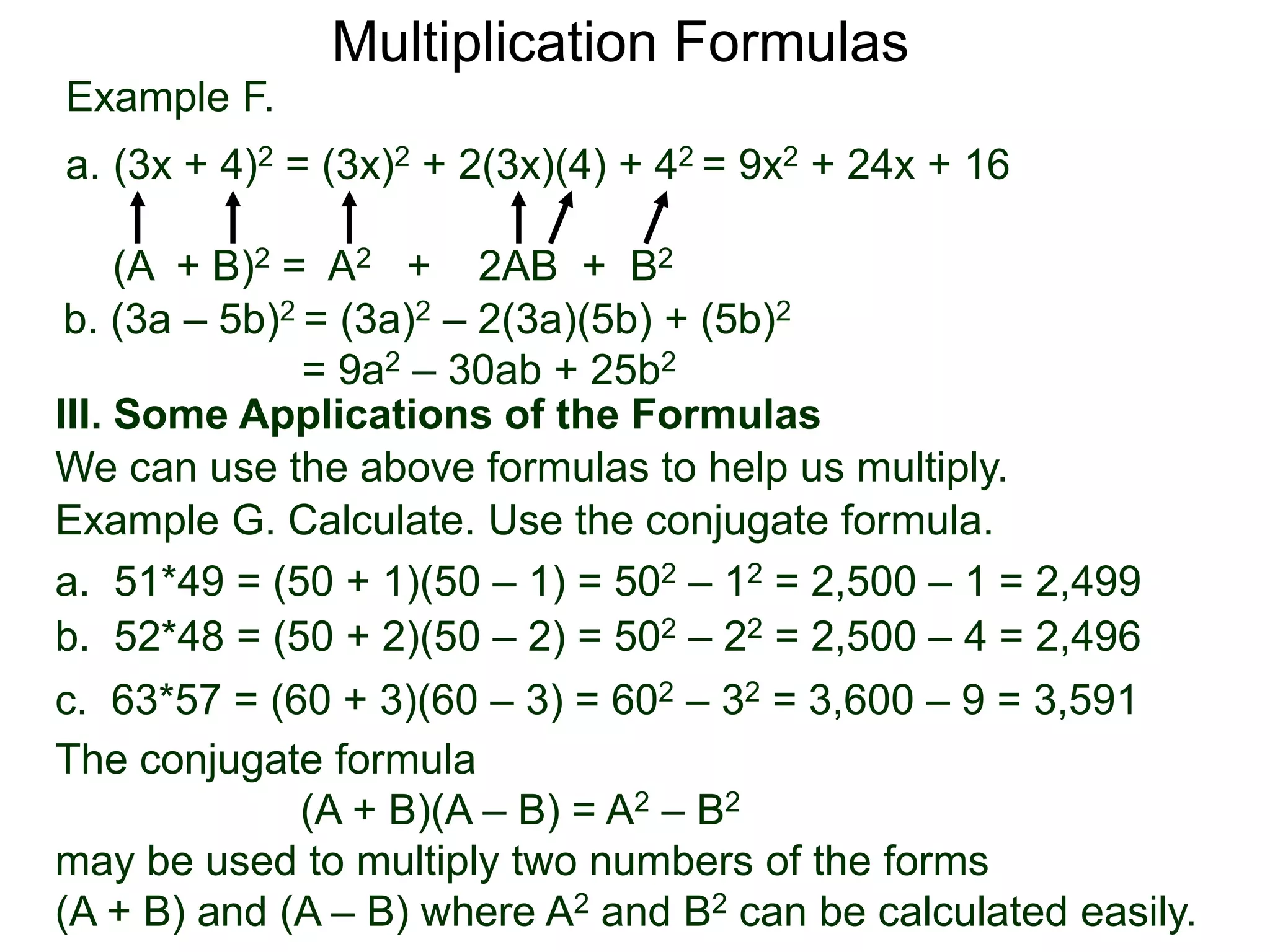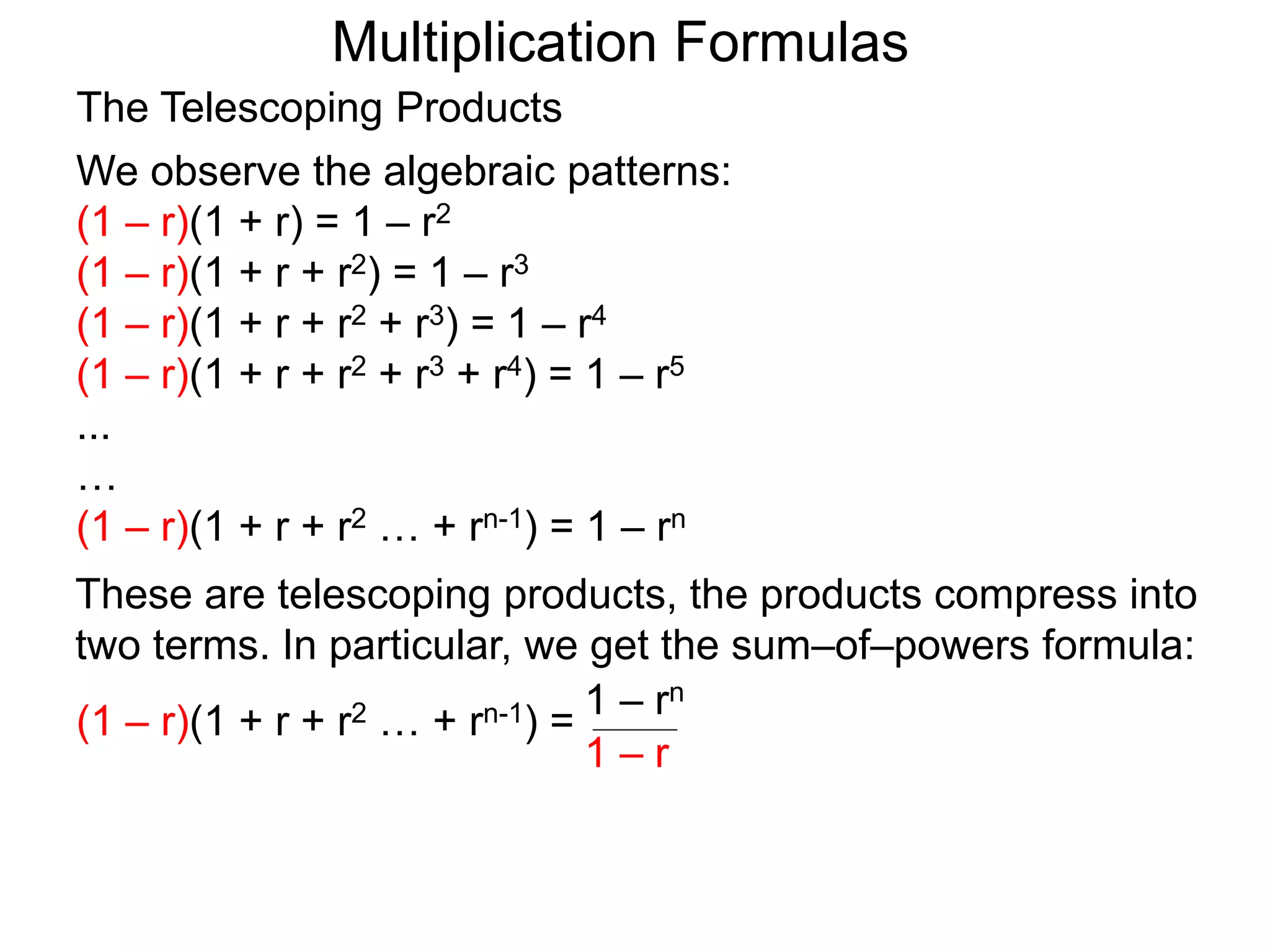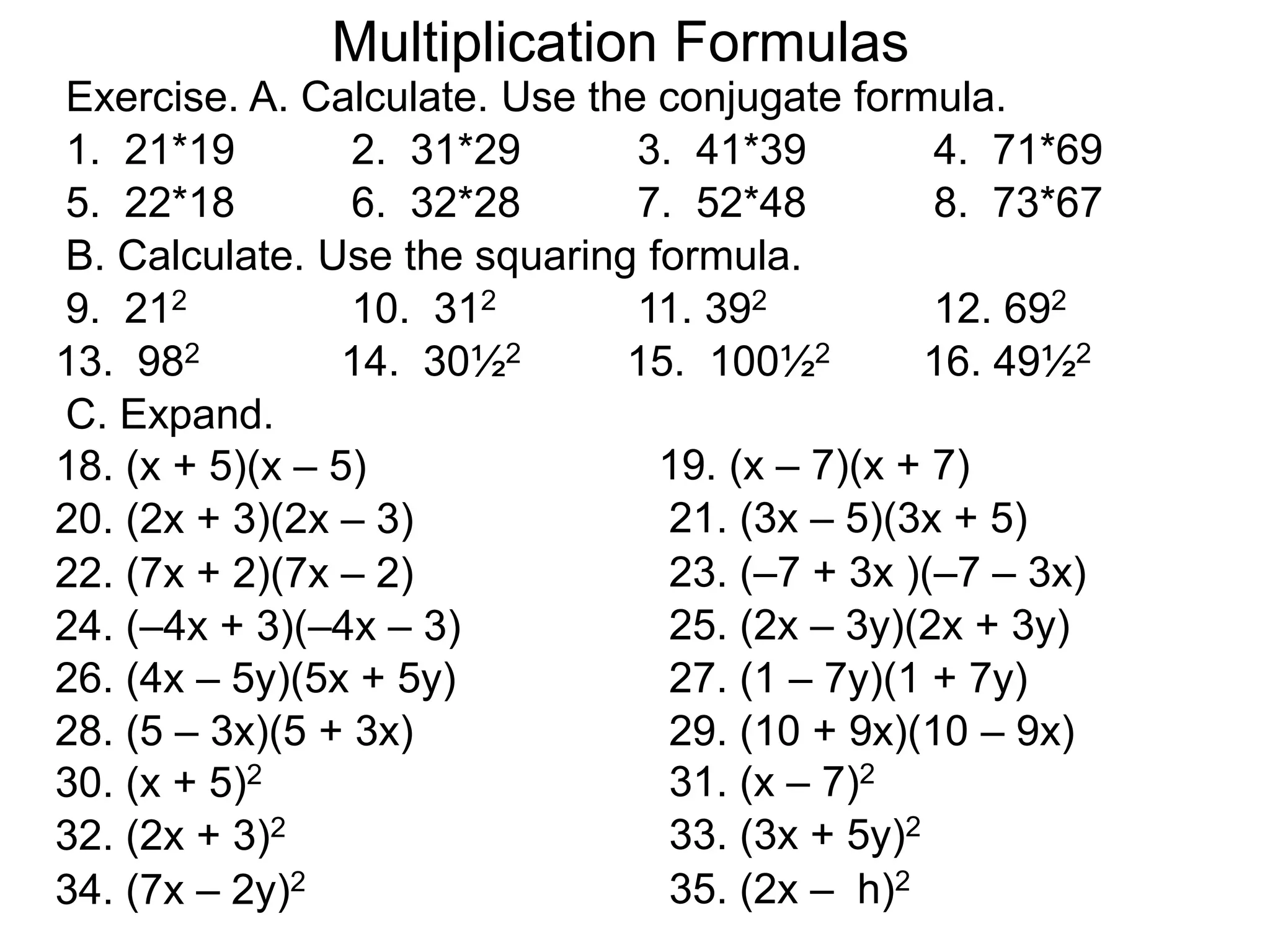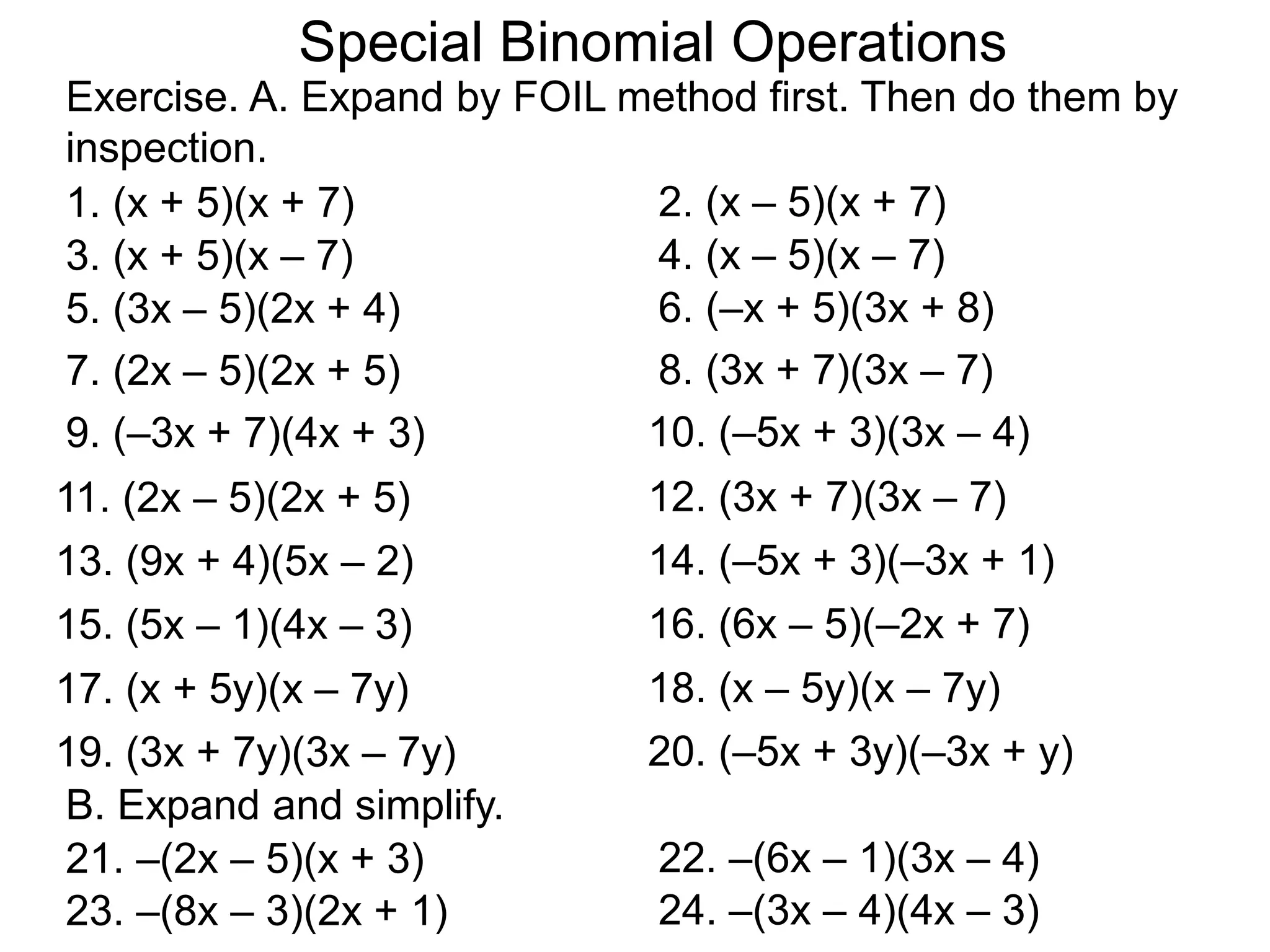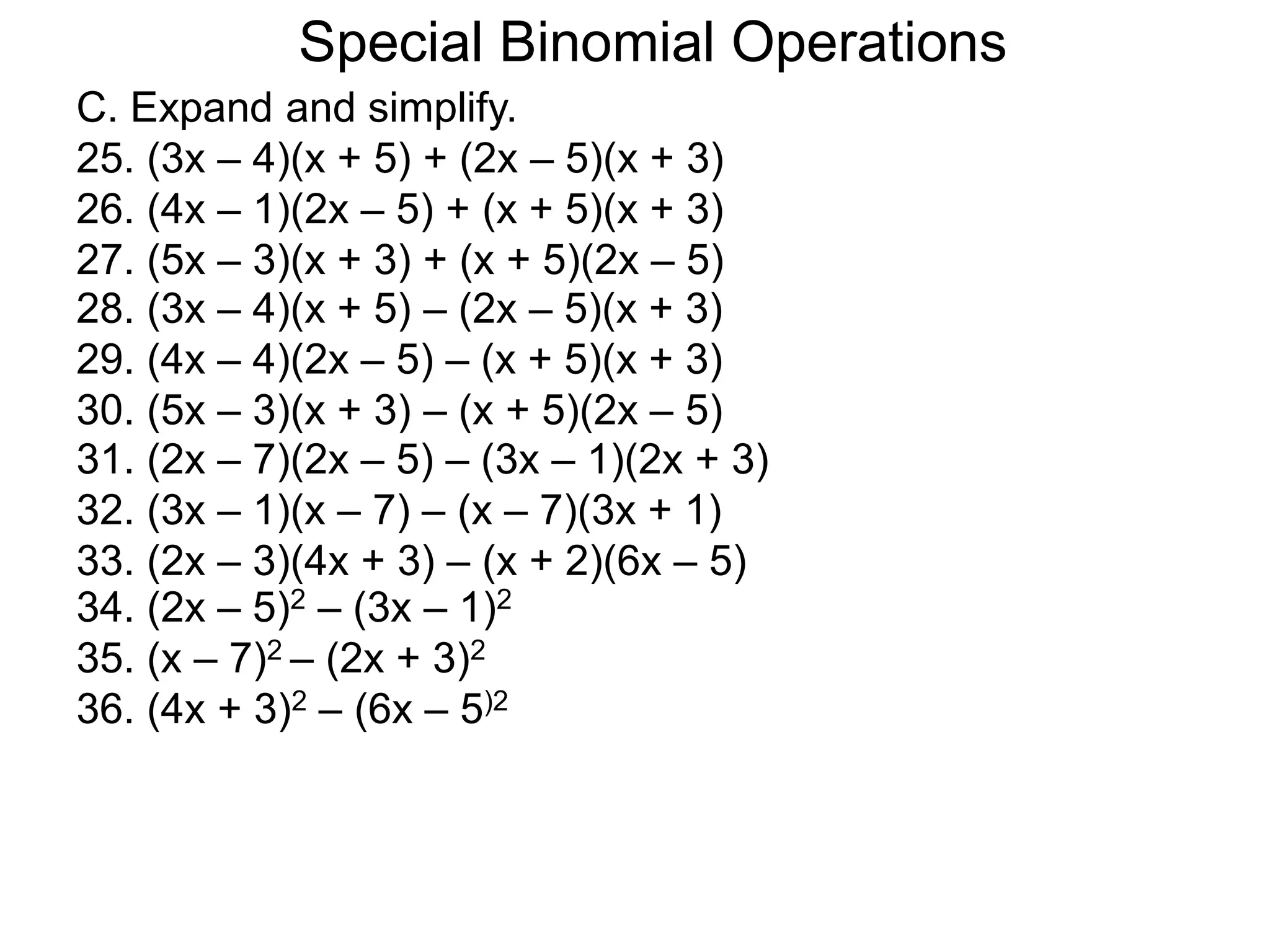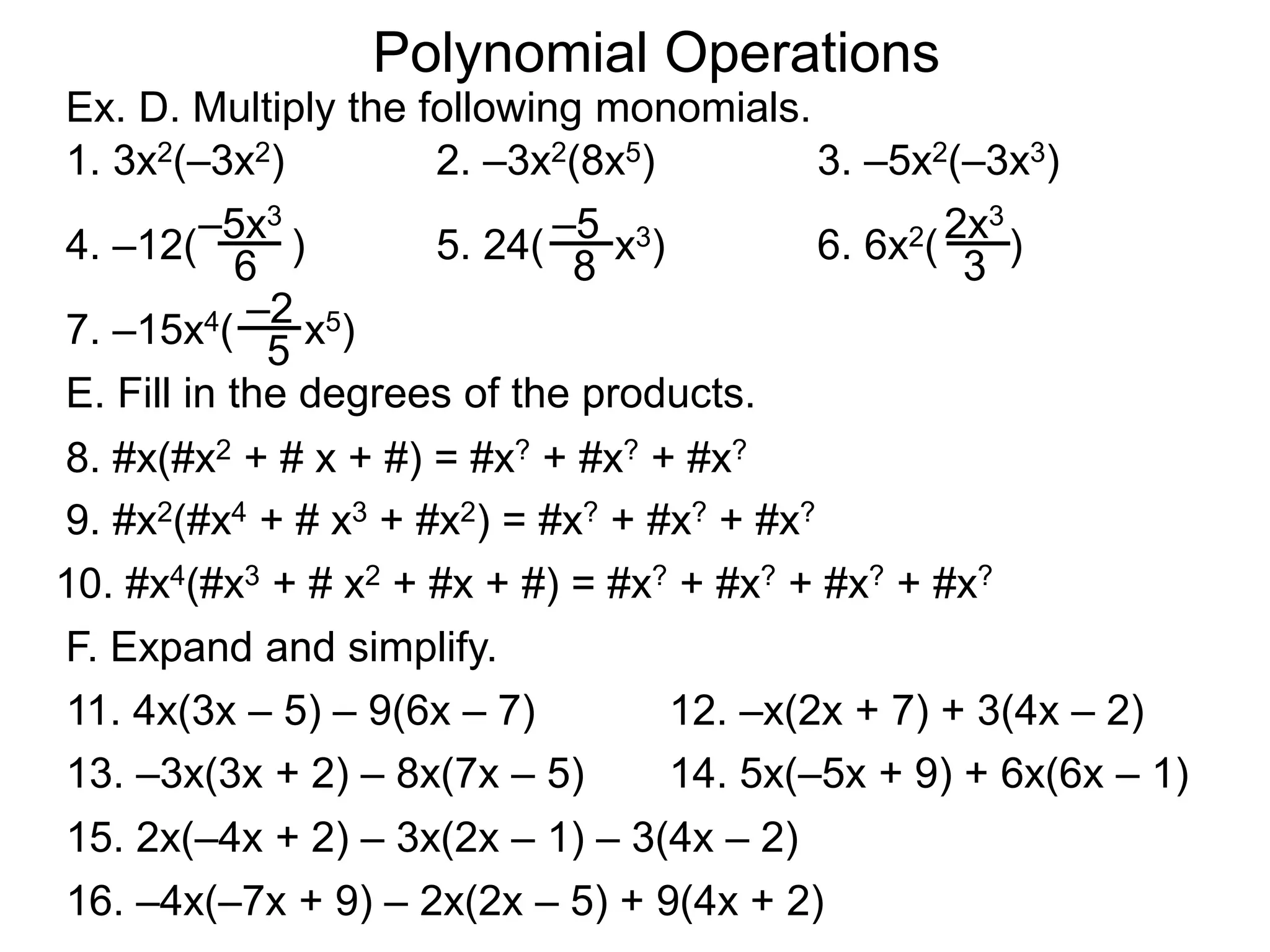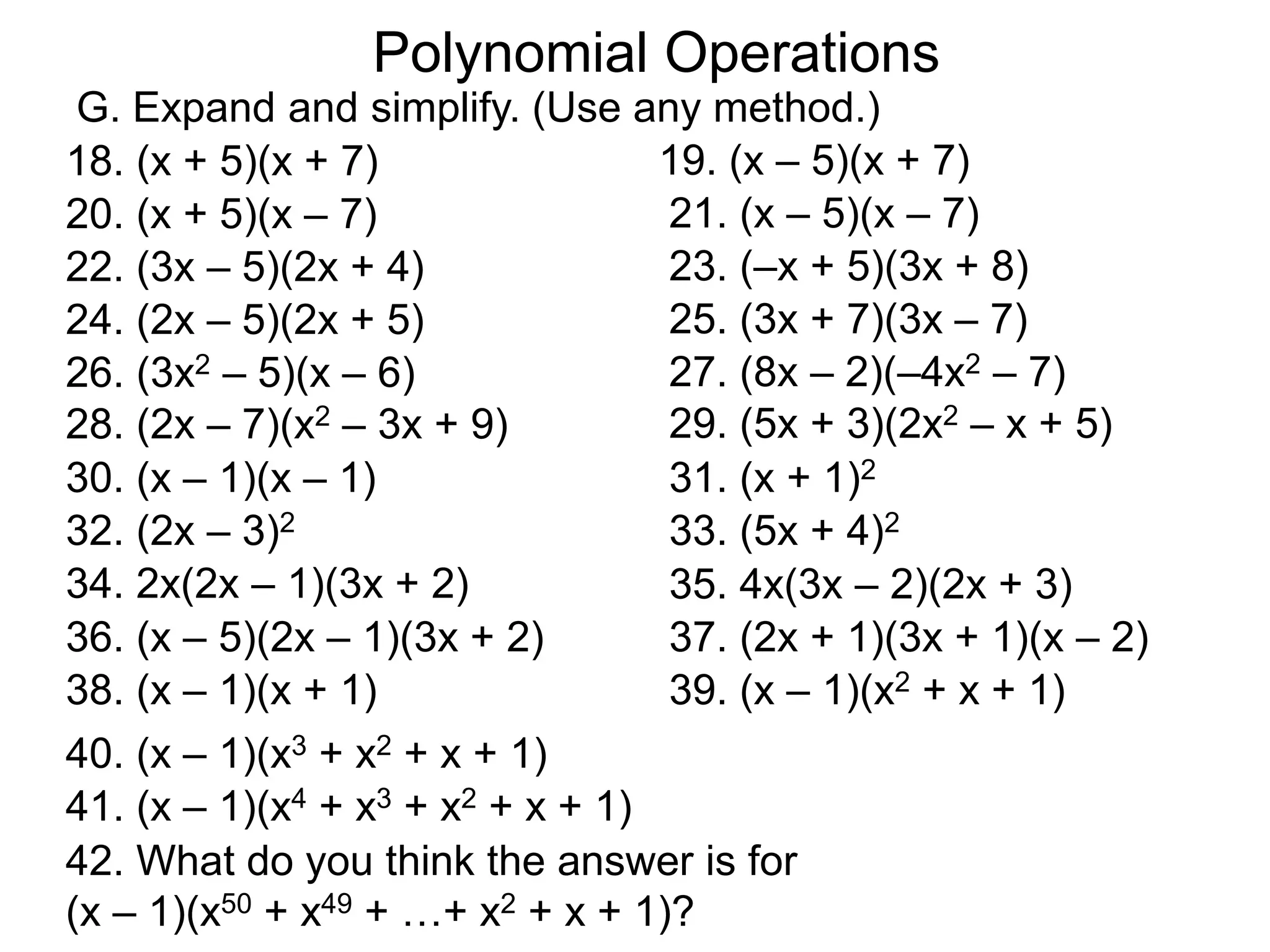The document discusses operations involving binomials and trinomials. It defines a binomial as a two-term polynomial of the form ax + b and a trinomial as a three-term polynomial of the form ax2 + bx + c. It states that the product of two binomials is a trinomial that can be found using the FOIL method: multiplying the first, outer, inner, and last terms. The FOIL method is demonstrated through examples multiplying binomial expressions. Expanding products involving negative binomials requires distributing the negative sign before using FOIL.
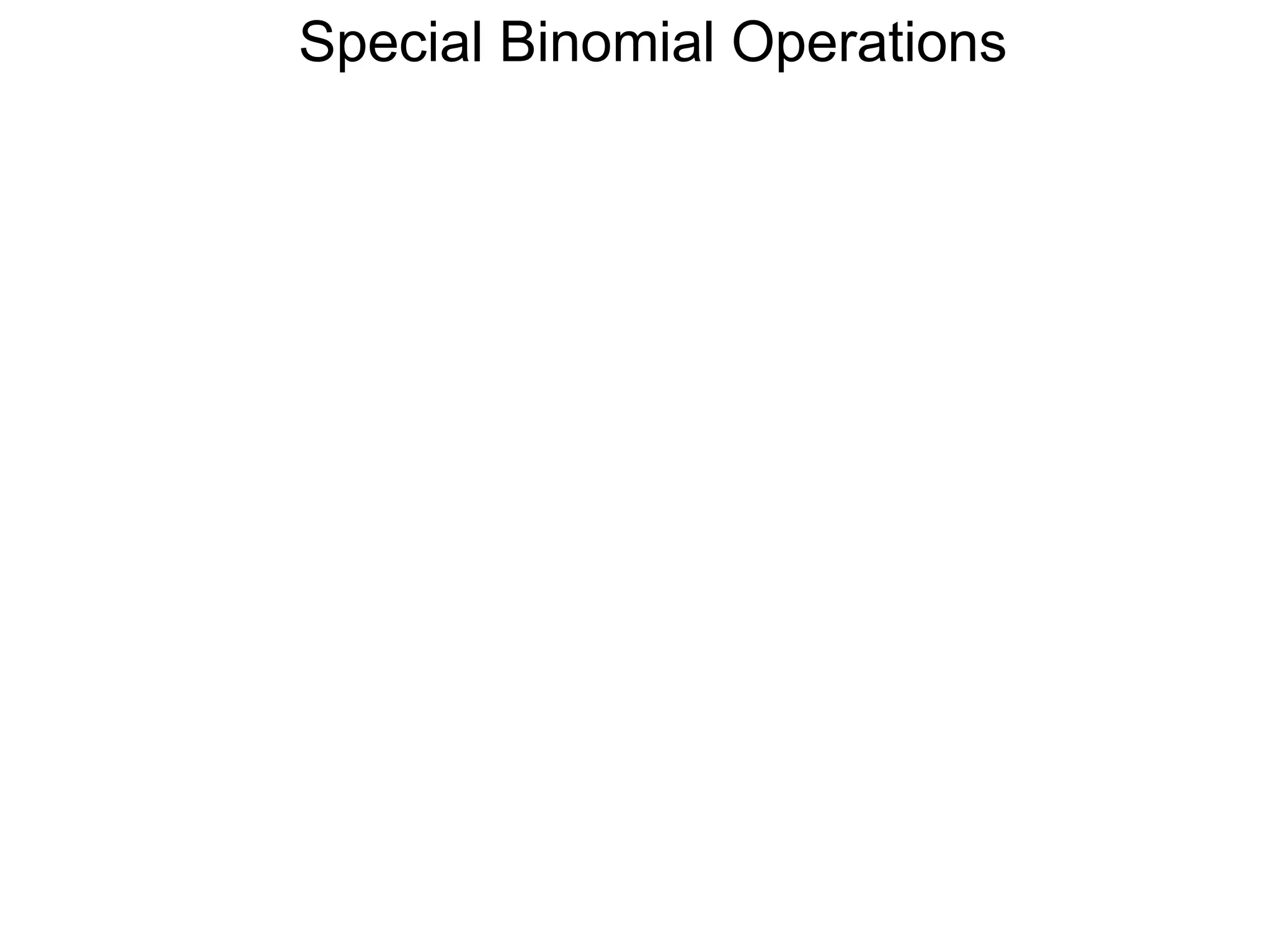
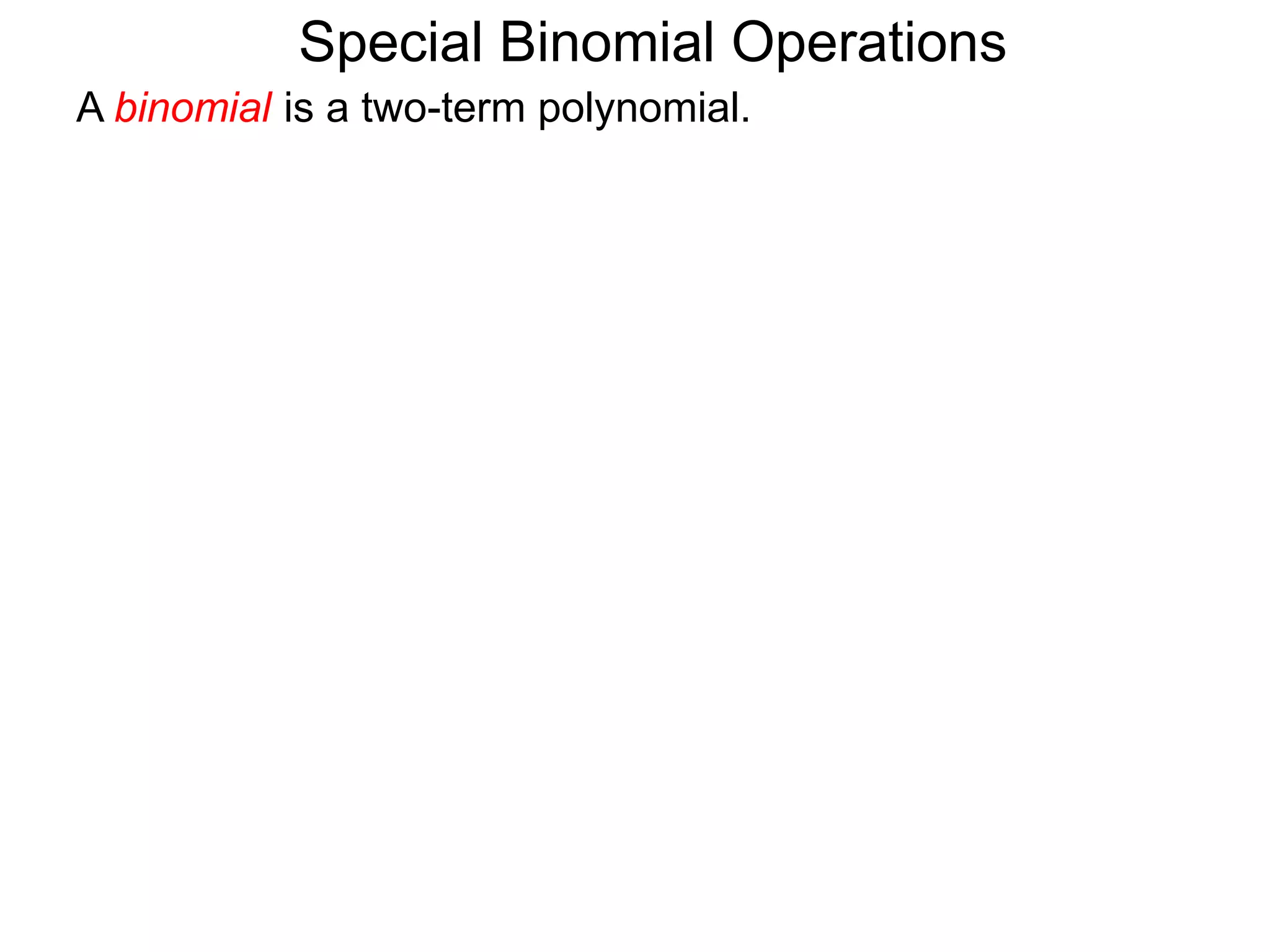
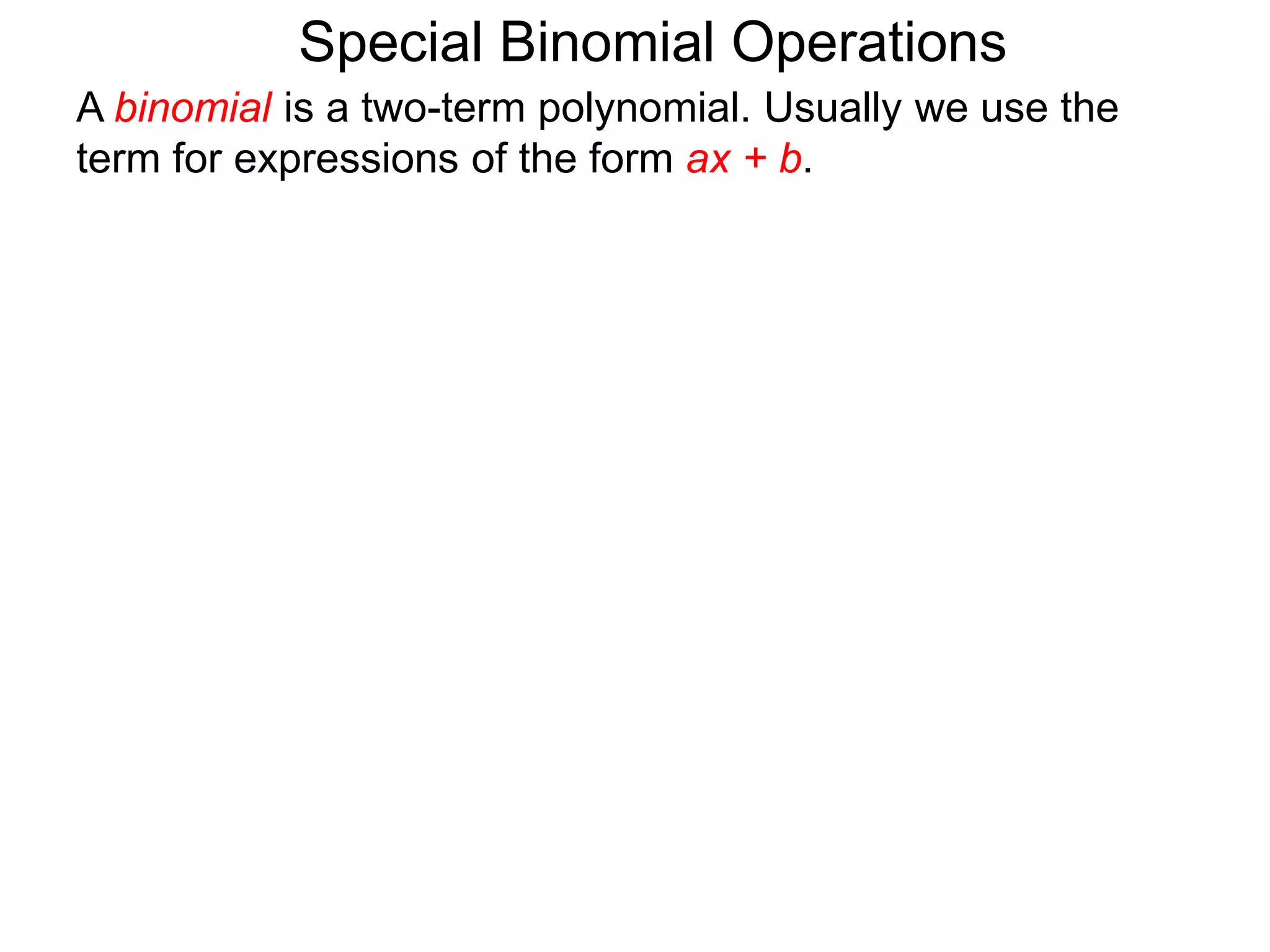
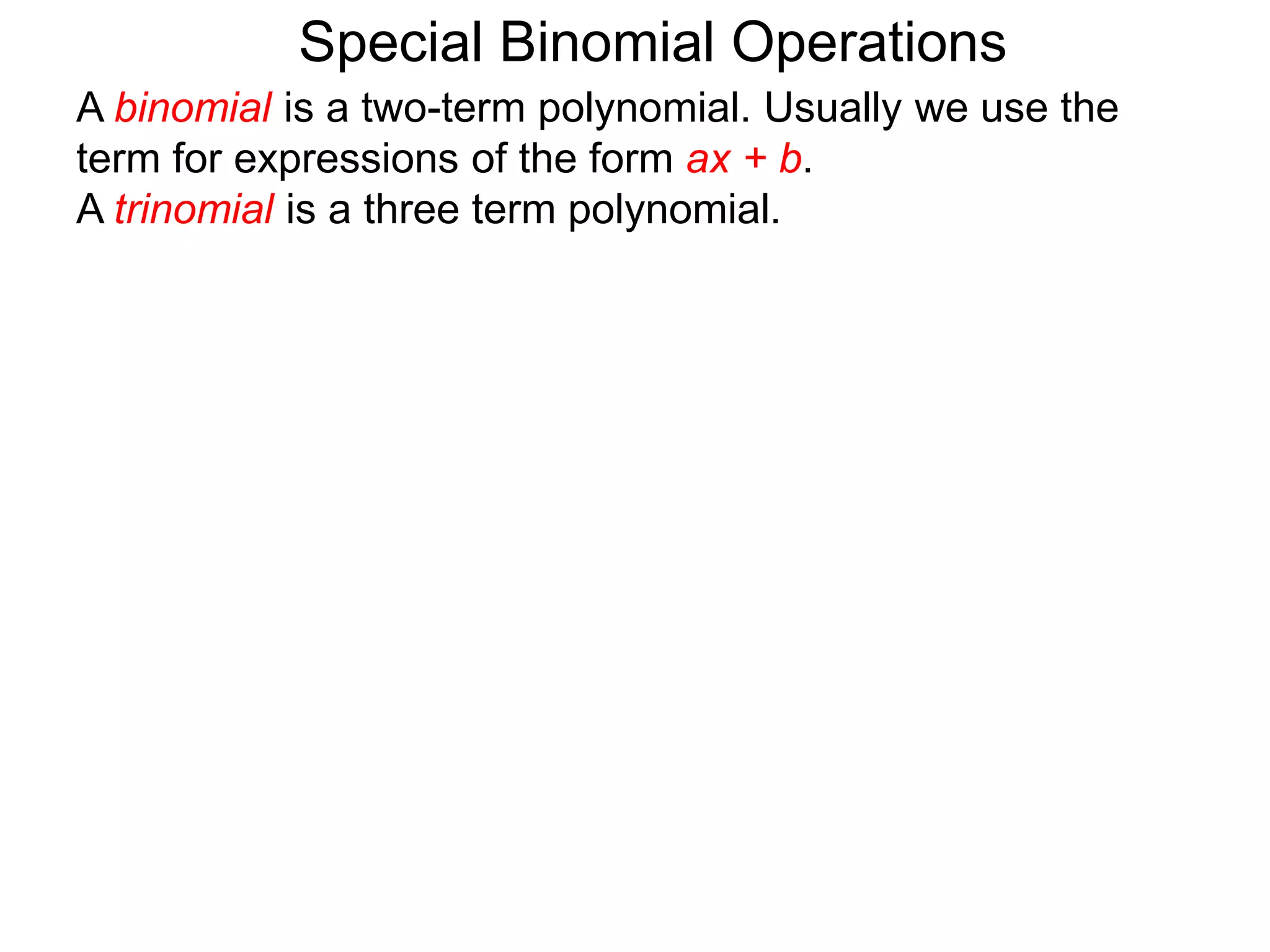
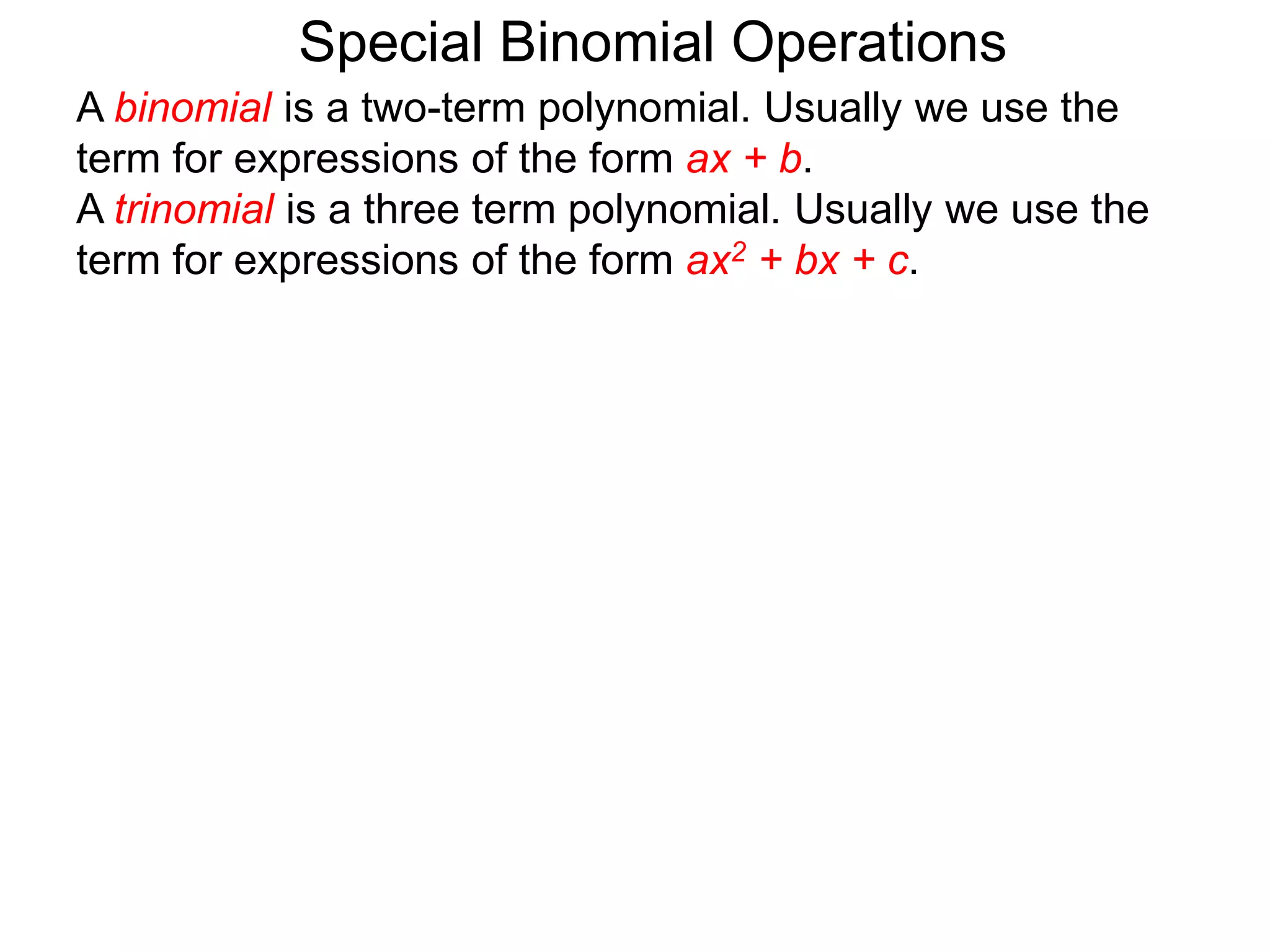
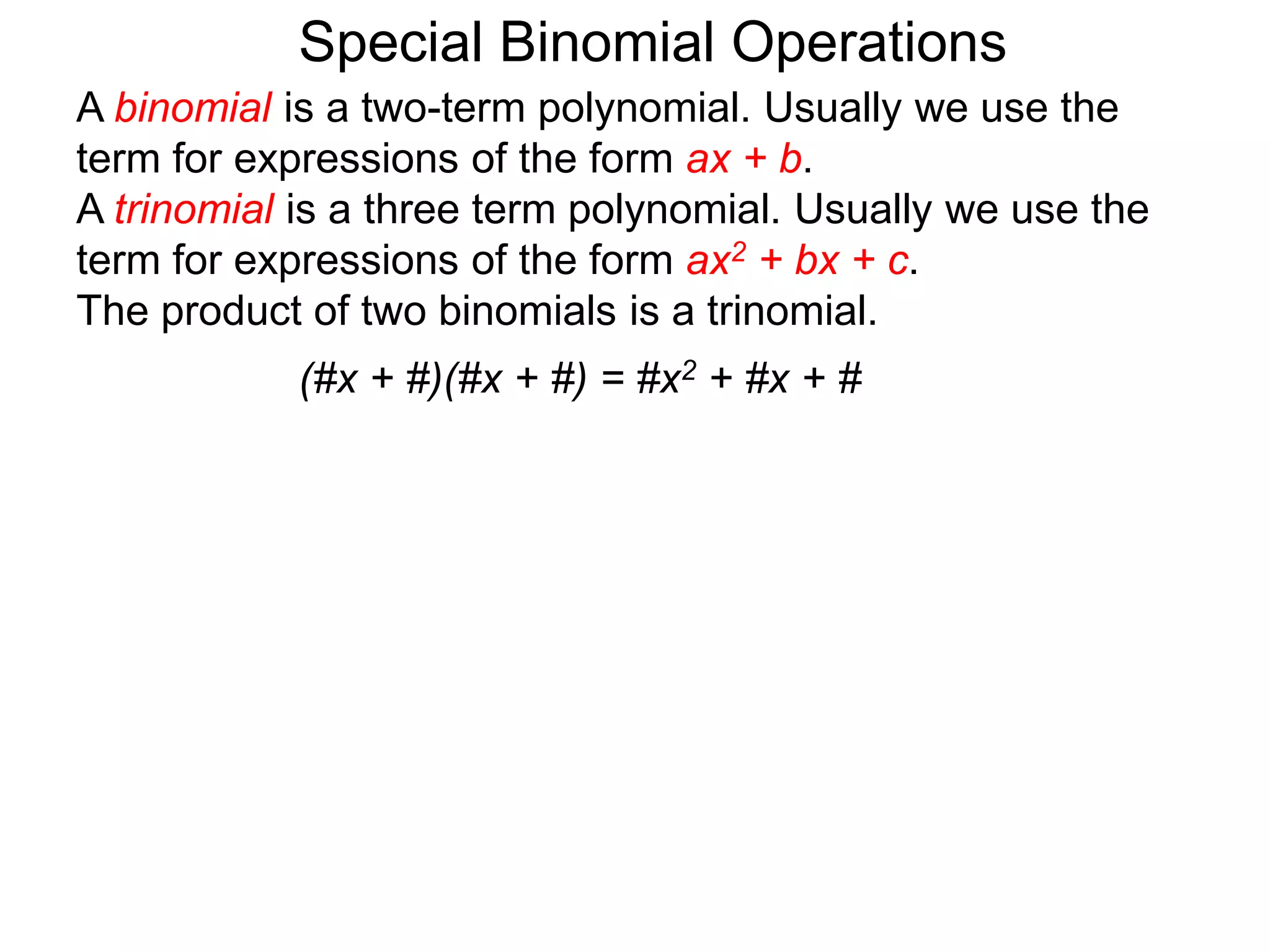
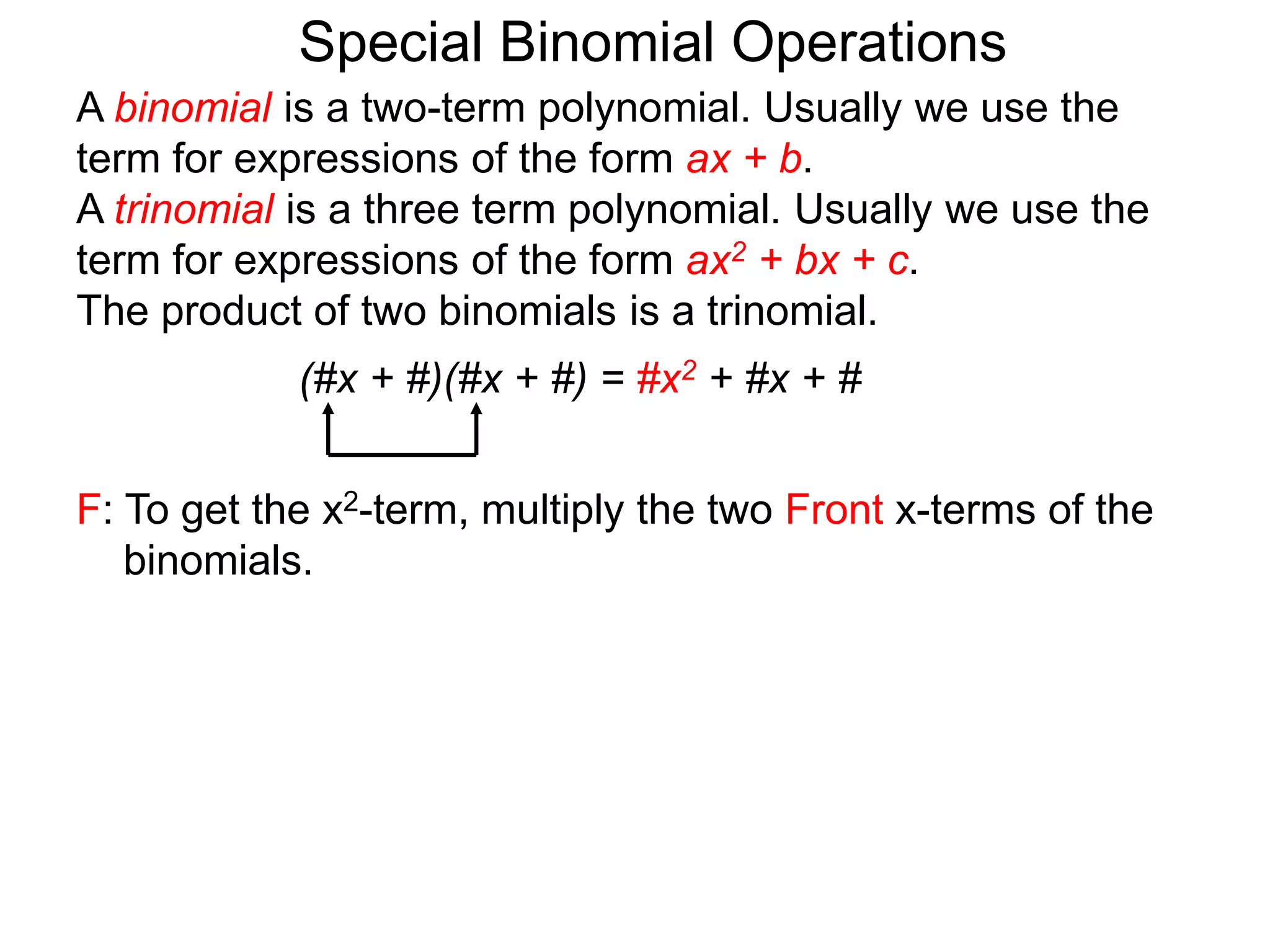

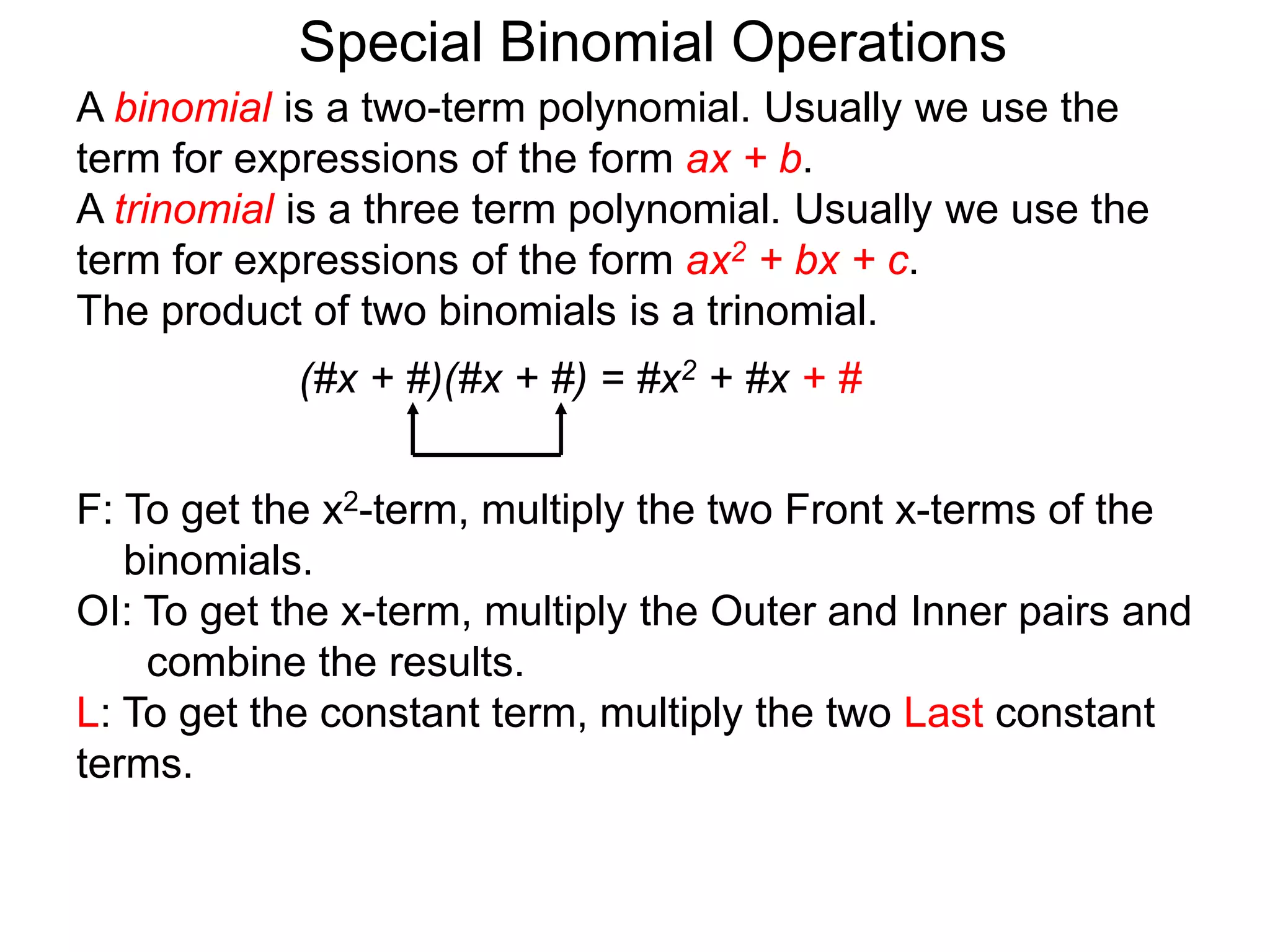
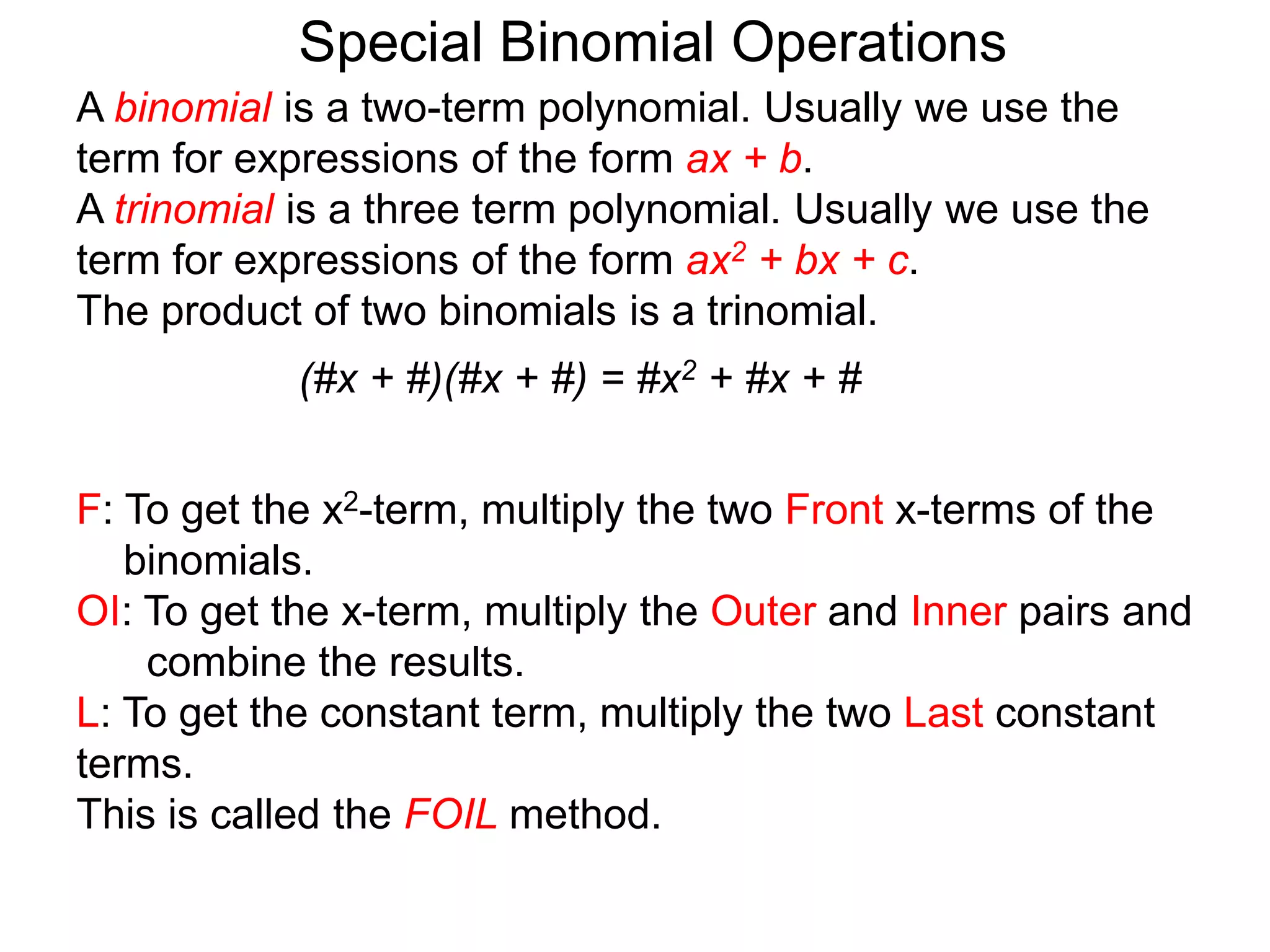
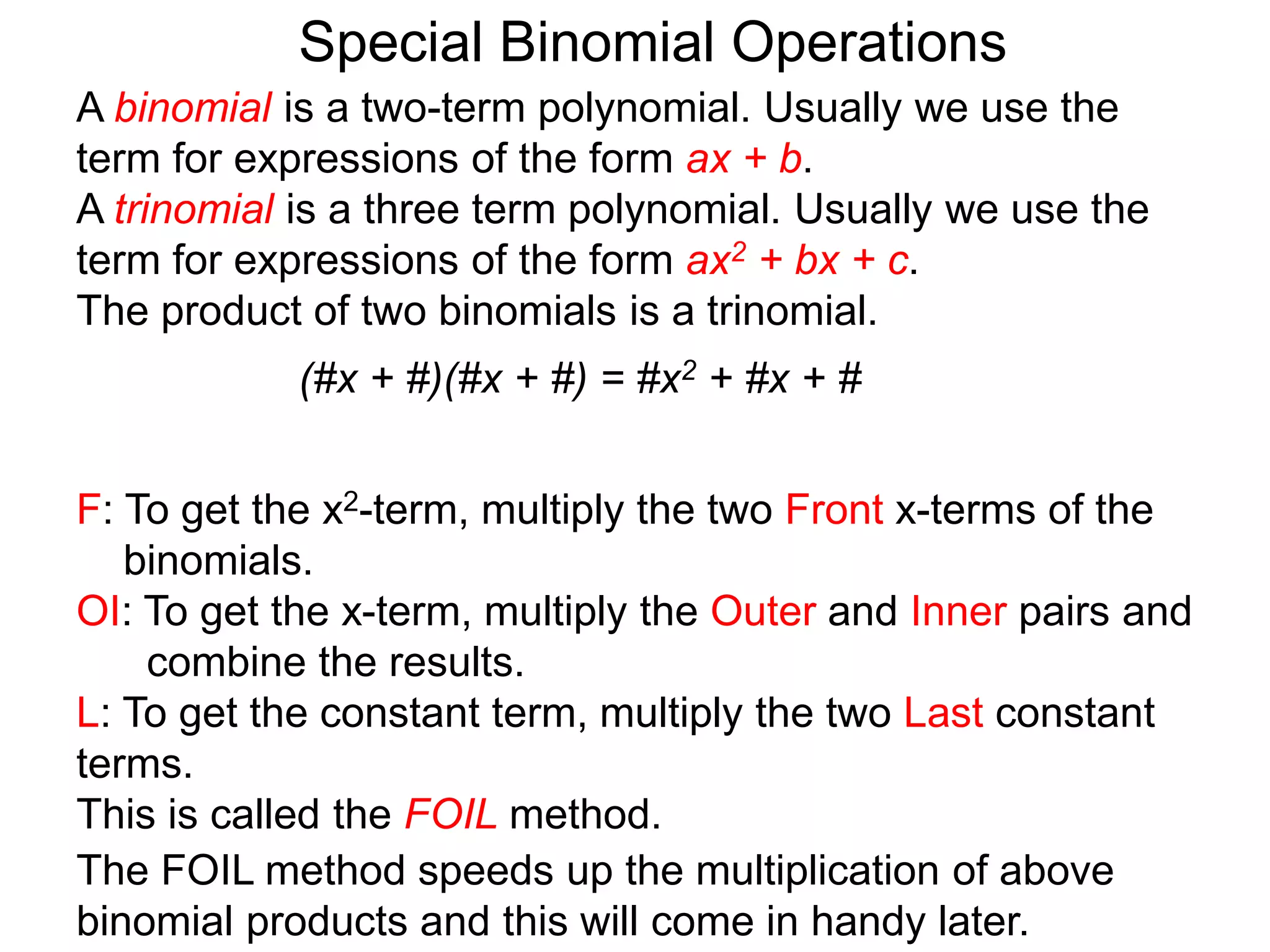
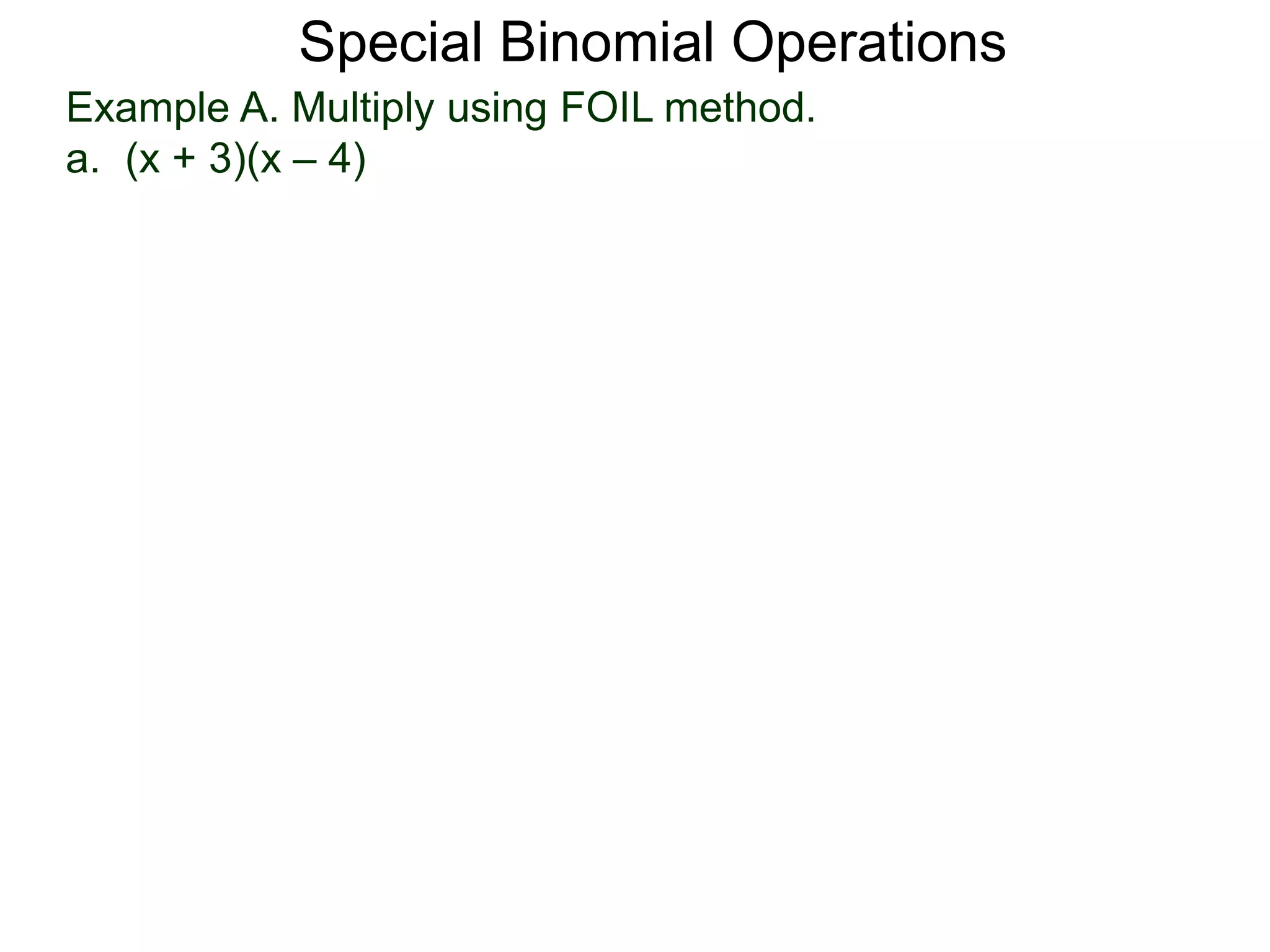
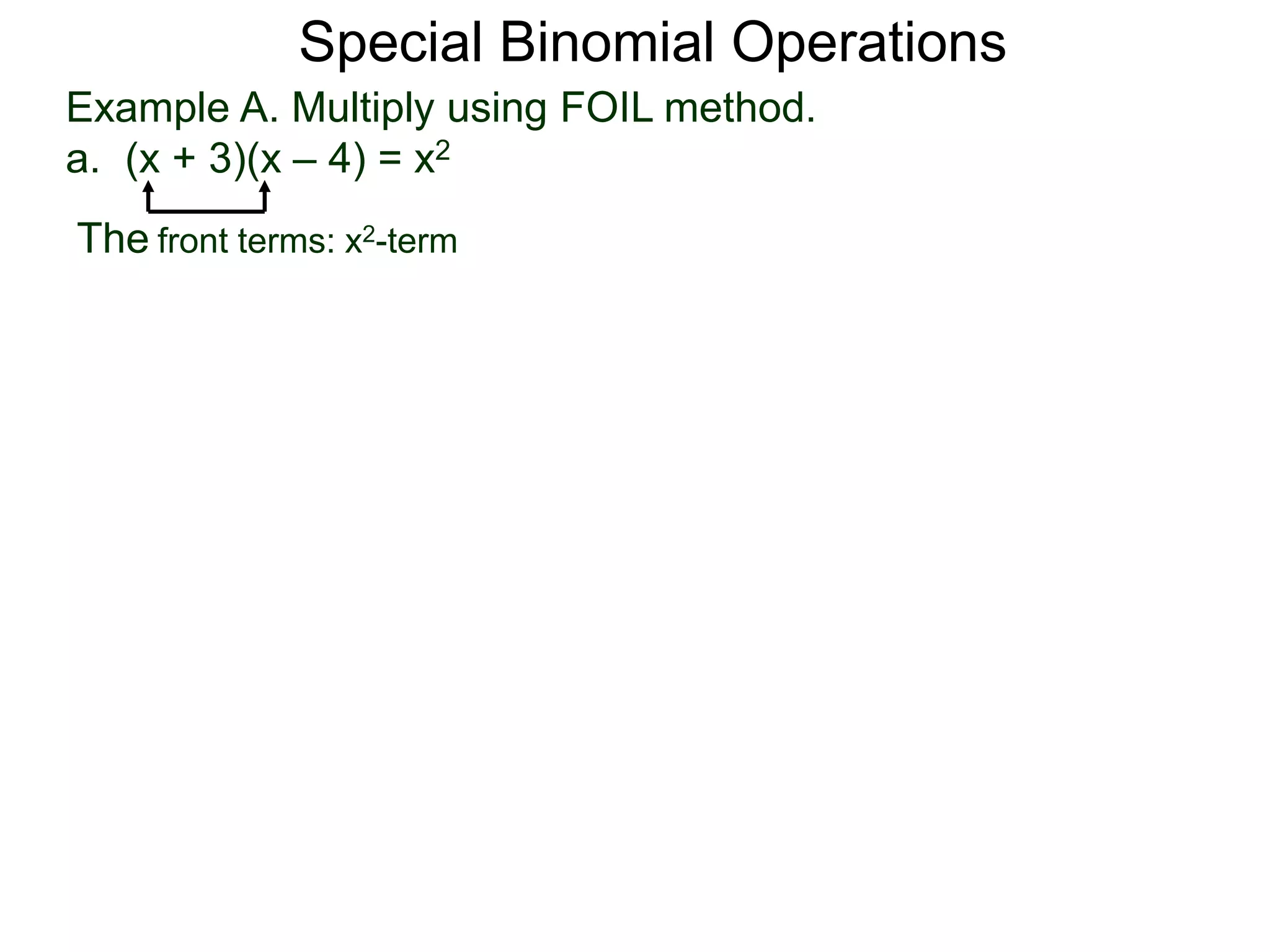
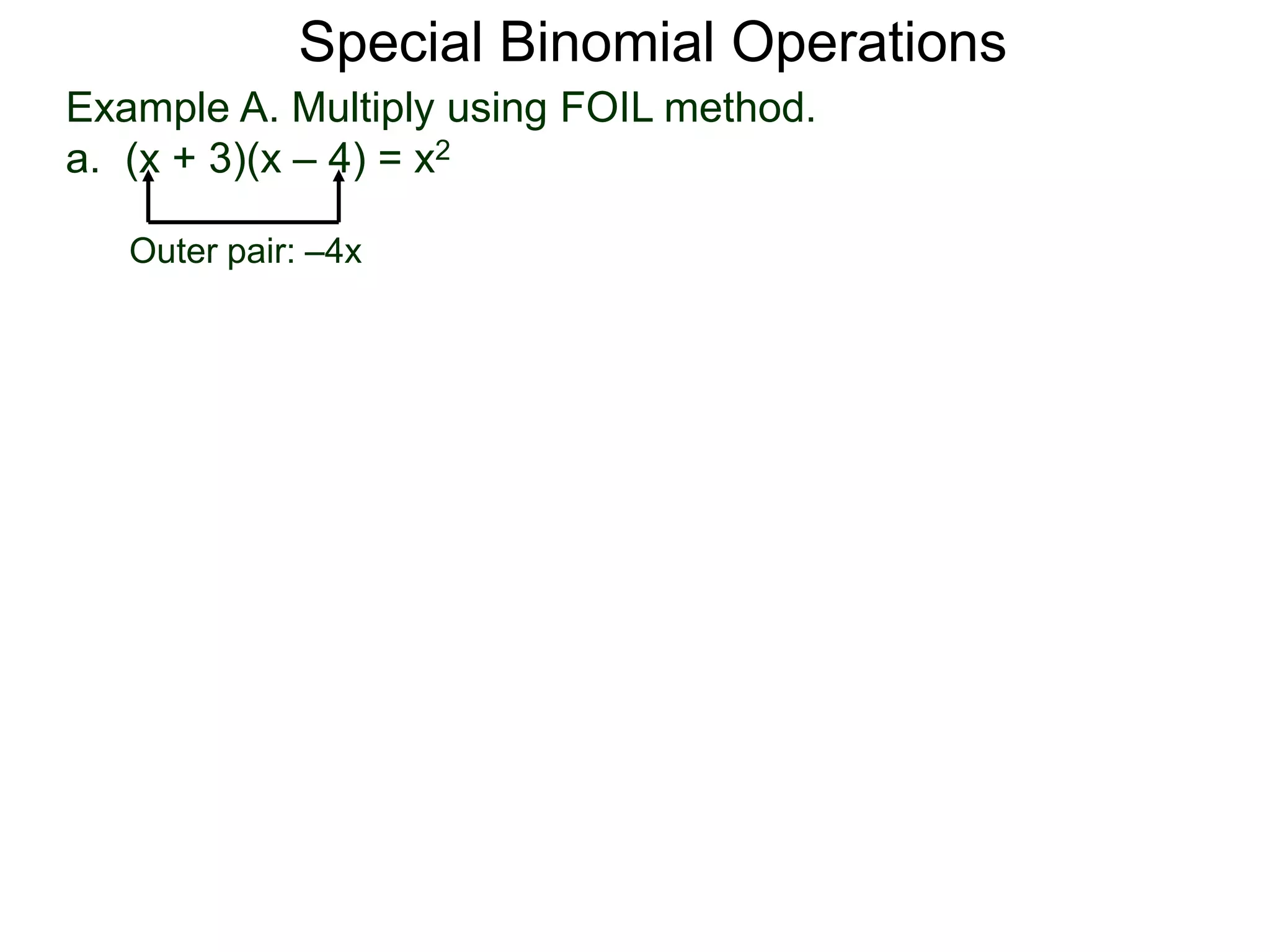
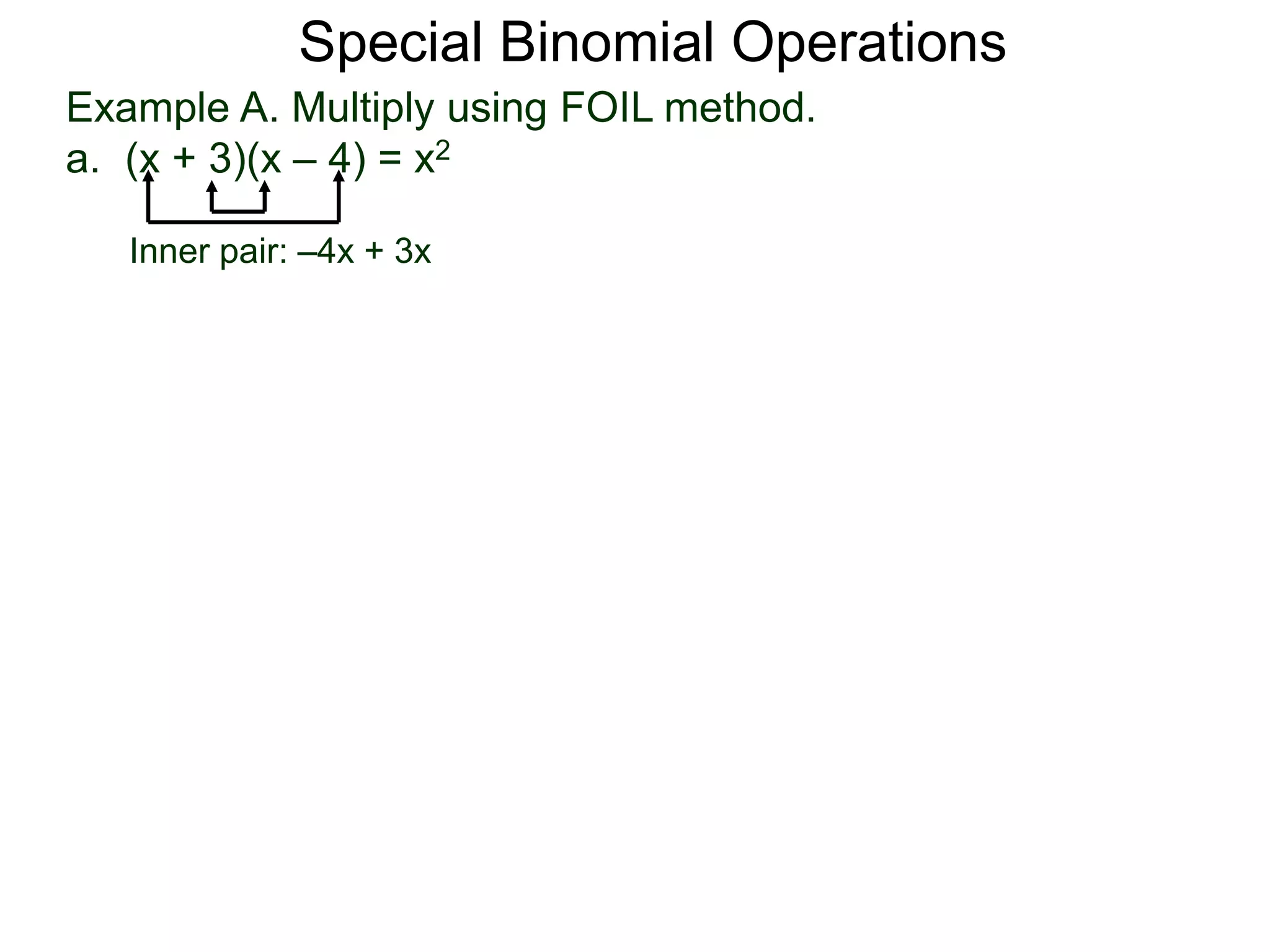
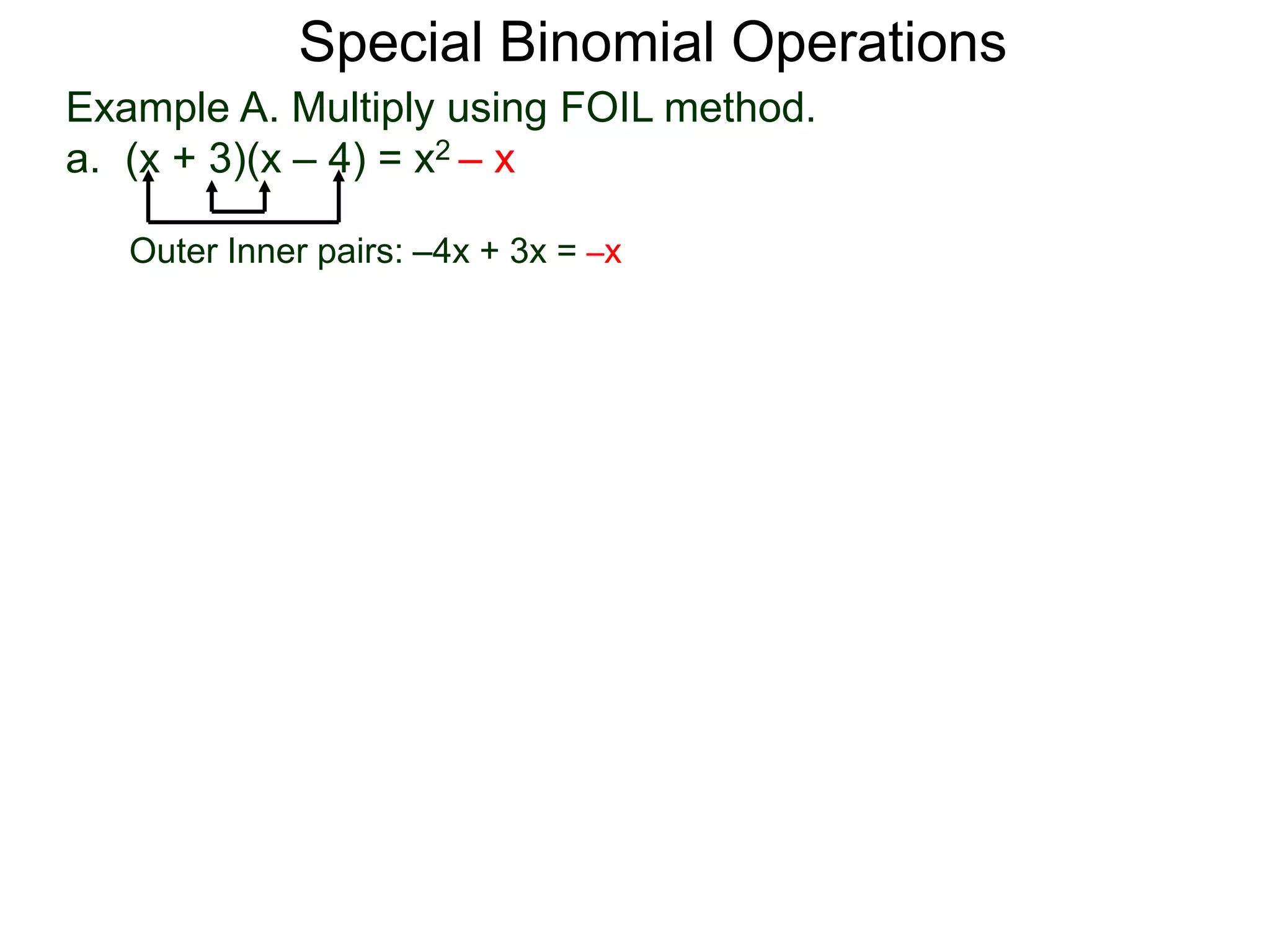
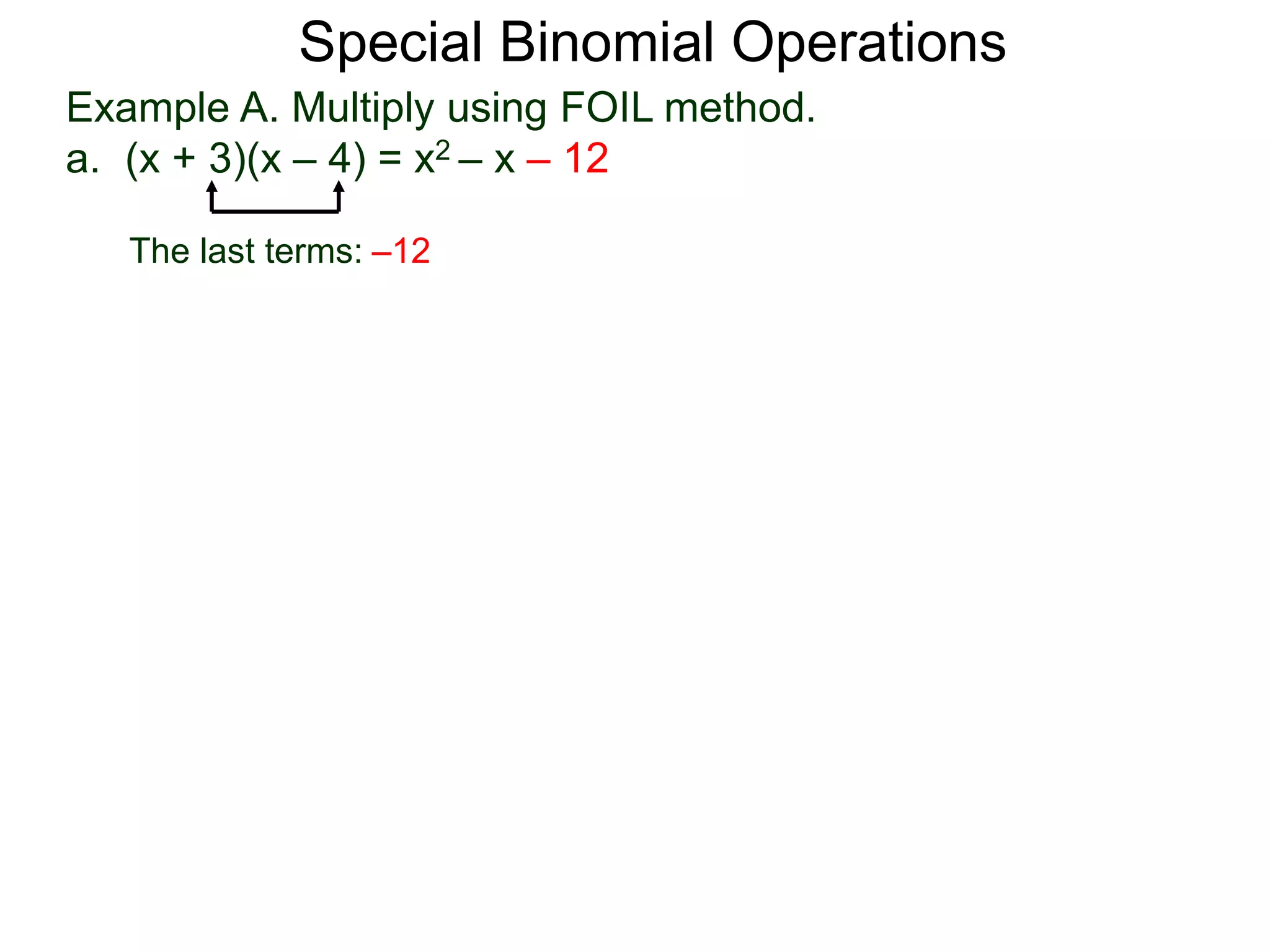
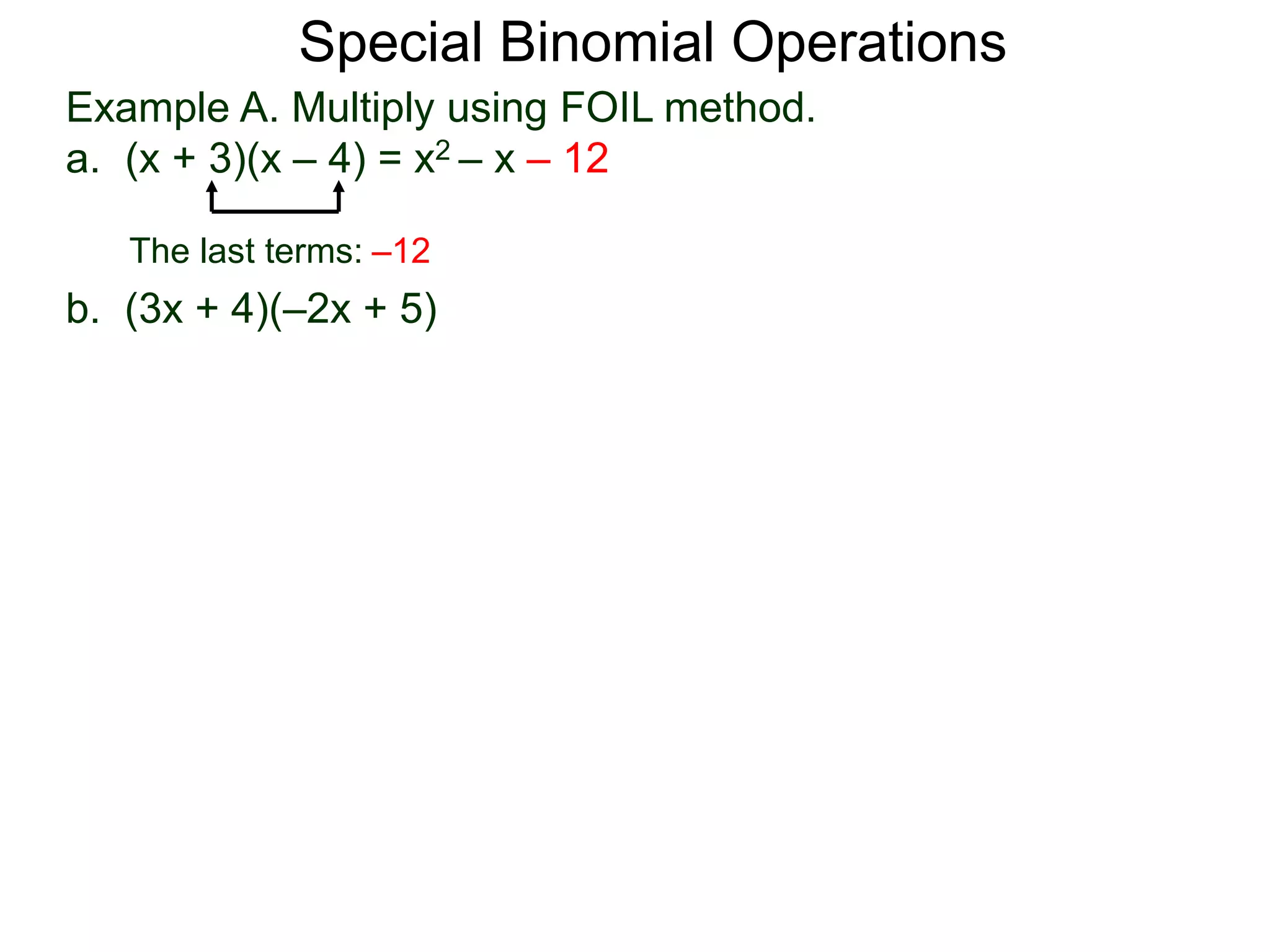
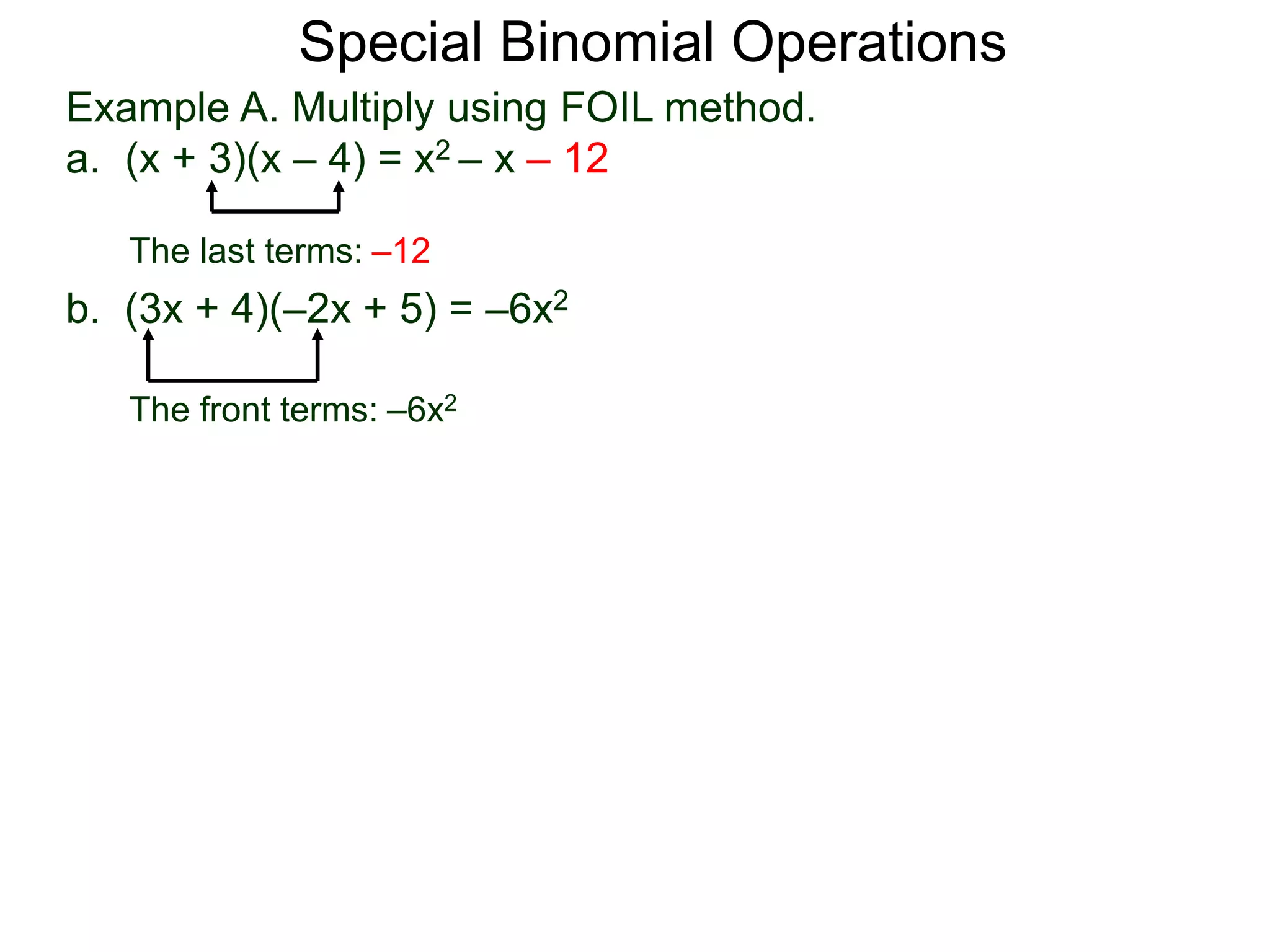
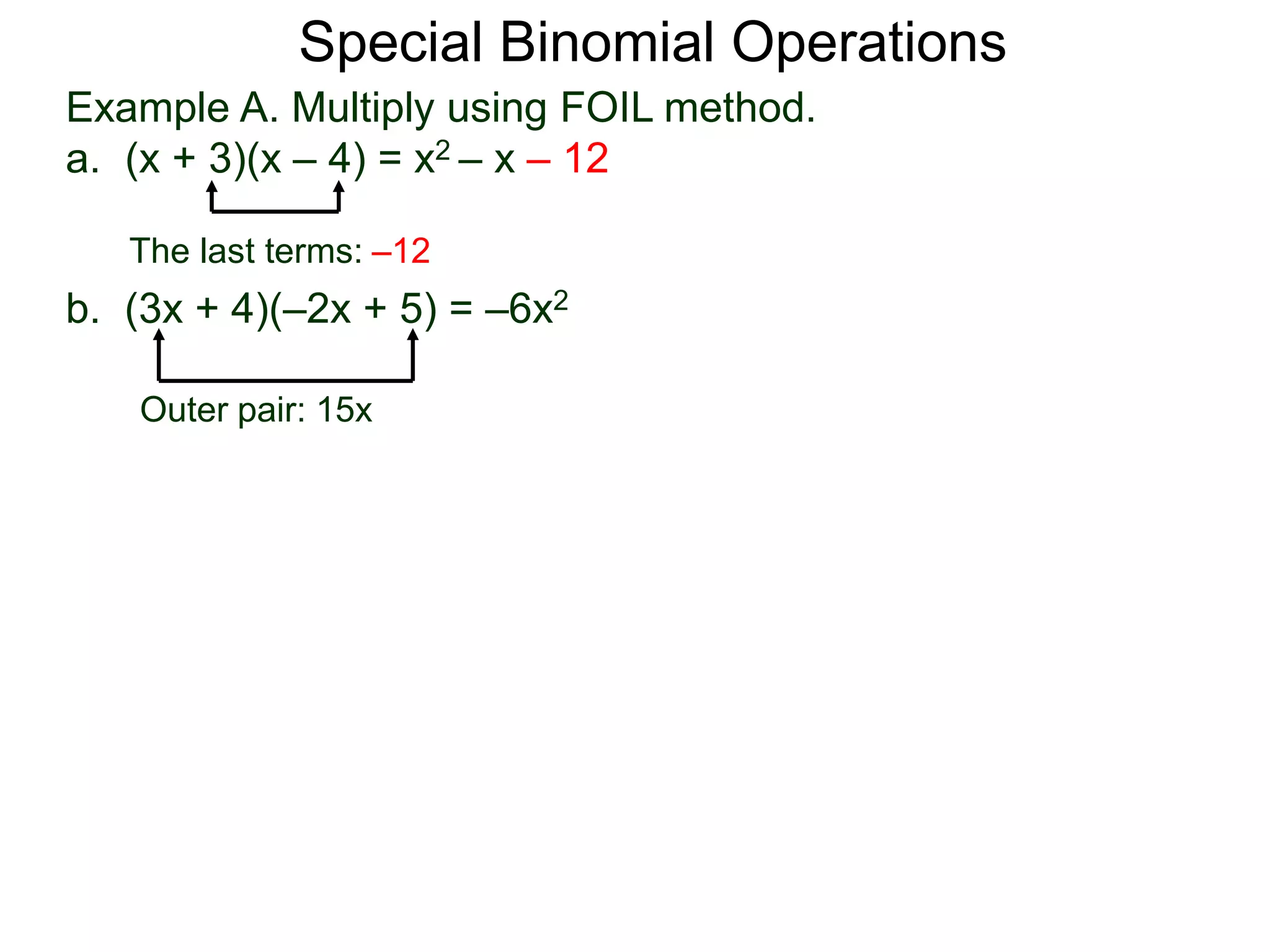
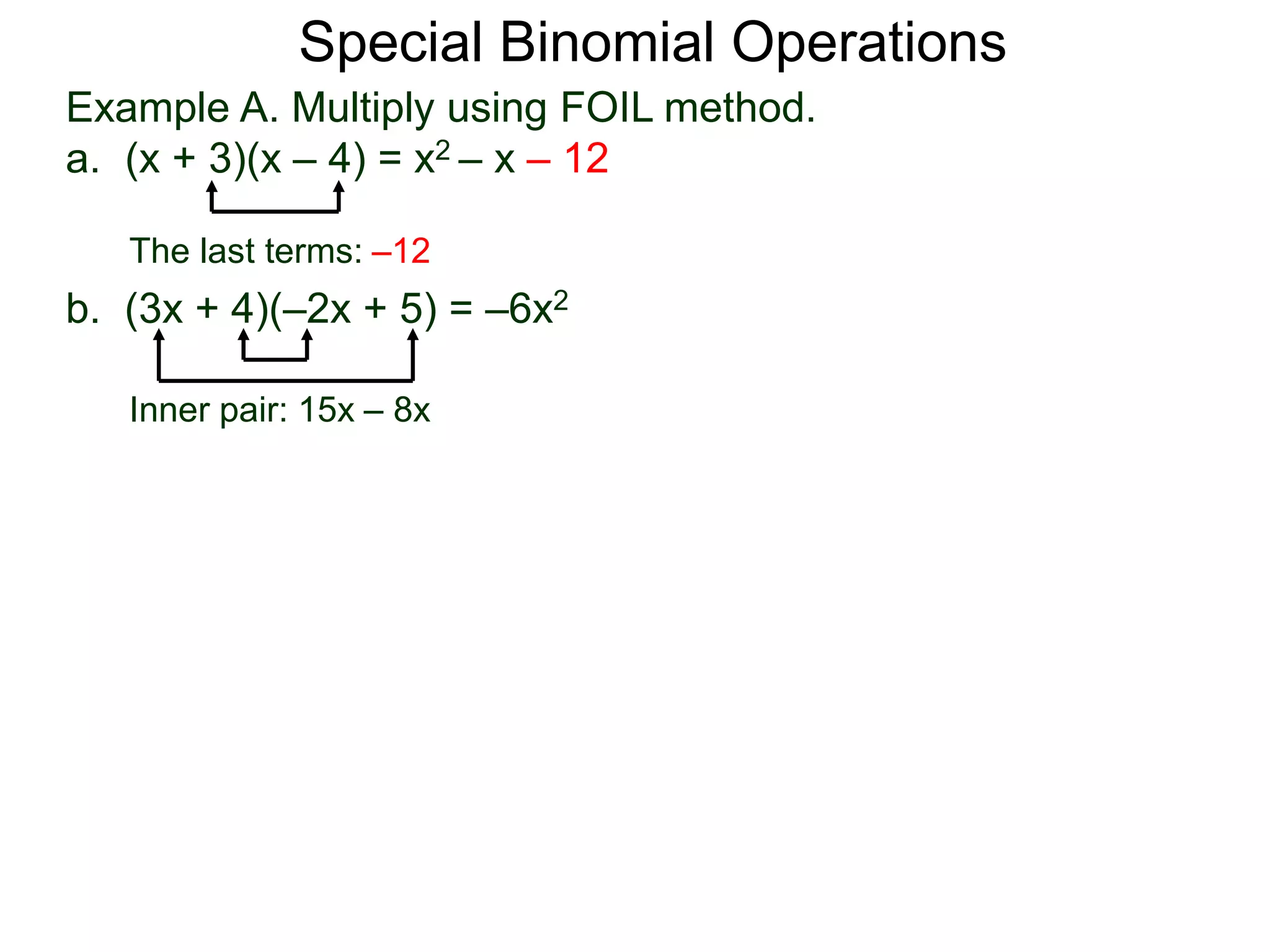

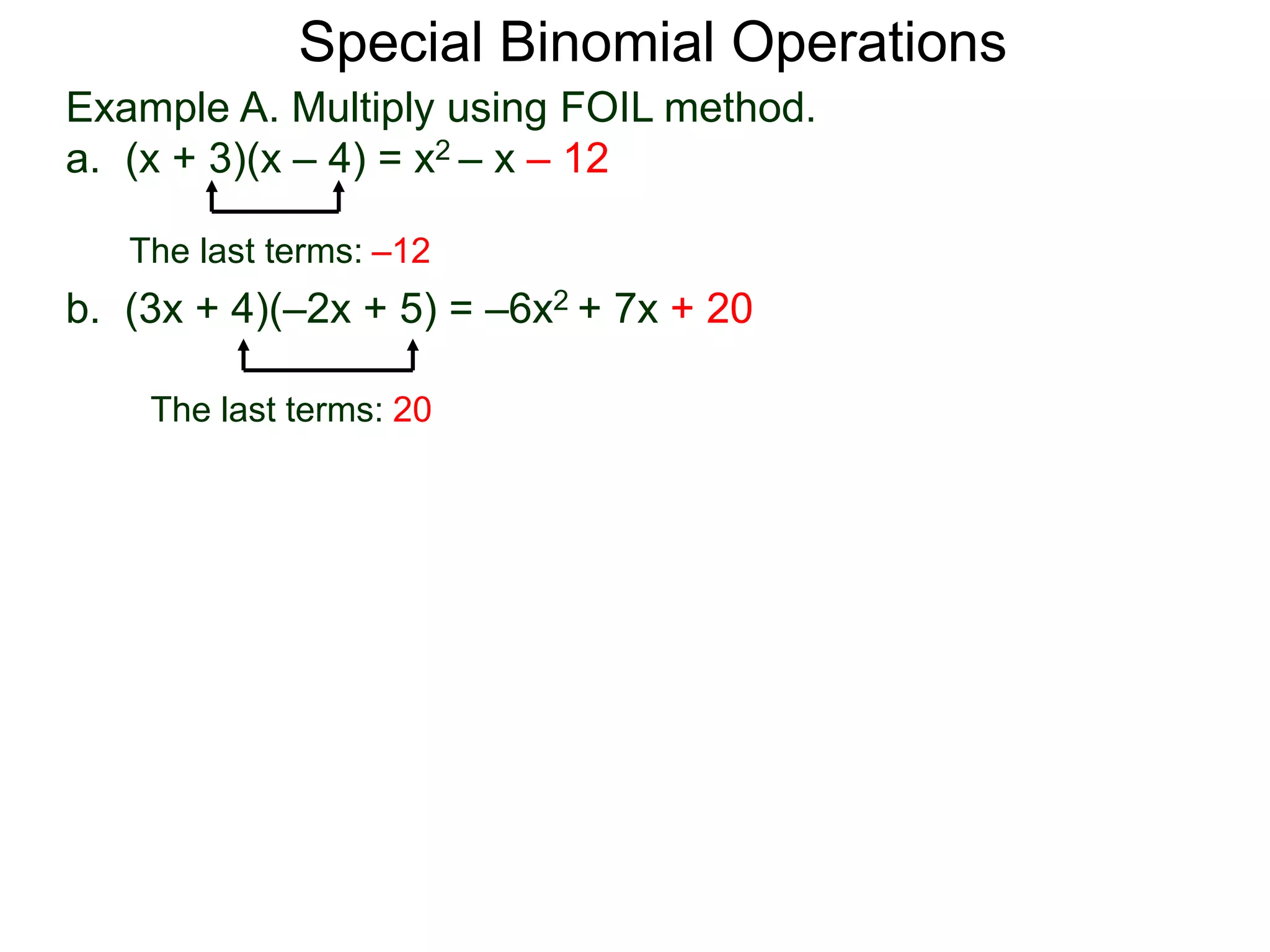
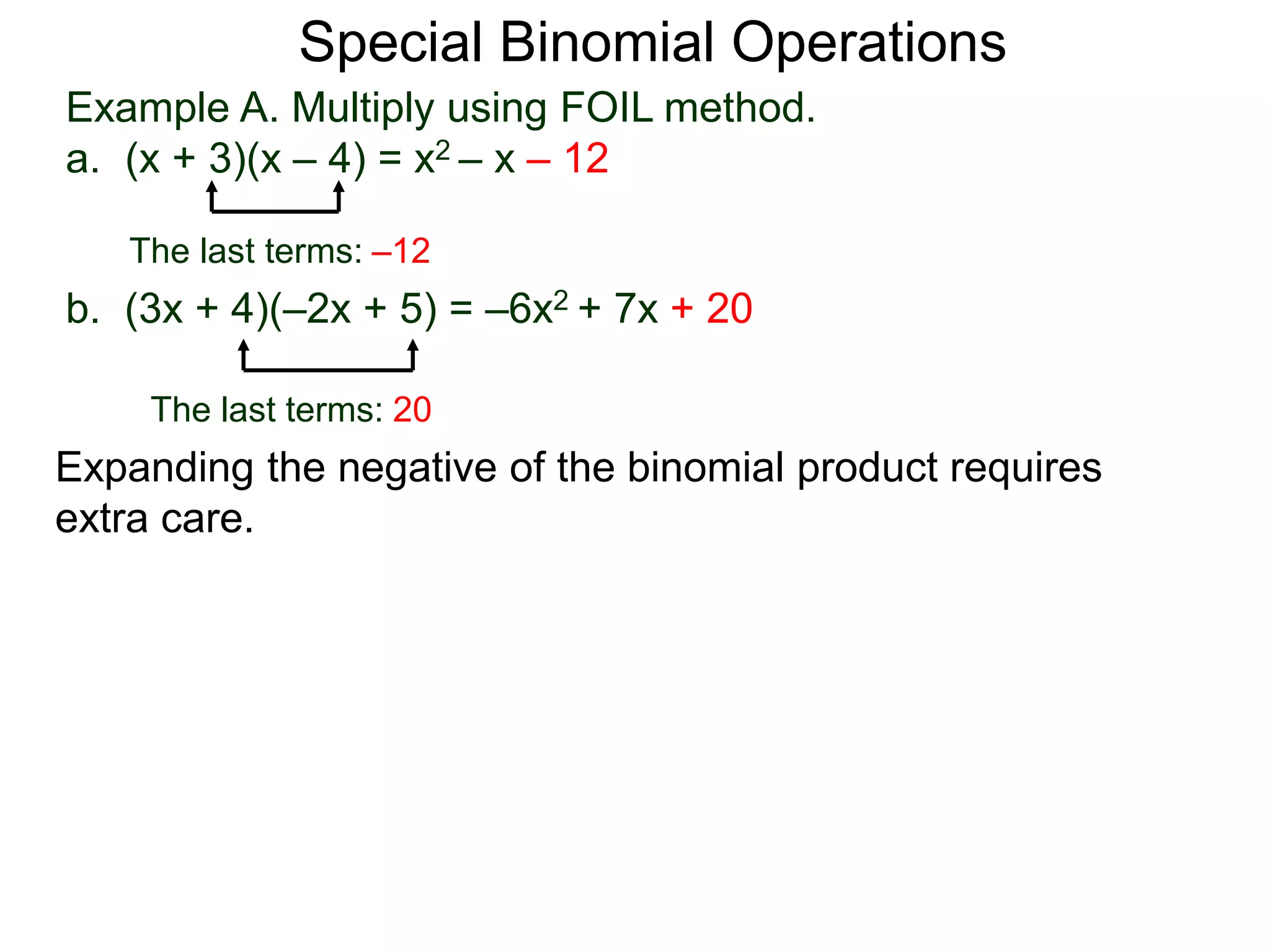
![Special Binomial Operations
b. (3x + 4)(–2x + 5) = –6x2 + 7x + 20
Example A. Multiply using FOIL method.
a. (x + 3)(x – 4) = x2 – x – 12
The last terms: 20
The last terms: –12
Expanding the negative of the binomial product requires
extra care. One way to do this is to insert a set of “[ ]”
around the product.](https://image.slidesharecdn.com/47operationsof2nddegreeexpressionsandformulas-160124022915/75/47-operations-of-2nd-degree-expressions-and-formulas-25-2048.jpg)
![Special Binomial Operations
b. (3x + 4)(–2x + 5) = –6x2 + 7x + 20
Example A. Multiply using FOIL method.
a. (x + 3)(x – 4) = x2 – x – 12
The last terms: 20
The last terms: –12
Expanding the negative of the binomial product requires
extra care. One way to do this is to insert a set of “[ ]”
around the product.
Example B. Expand.
a. – (3x – 4)(x + 5)](https://image.slidesharecdn.com/47operationsof2nddegreeexpressionsandformulas-160124022915/75/47-operations-of-2nd-degree-expressions-and-formulas-26-2048.jpg)
![Special Binomial Operations
b. (3x + 4)(–2x + 5) = –6x2 + 7x + 20
Example A. Multiply using FOIL method.
a. (x + 3)(x – 4) = x2 – x – 12
The last terms: 20
The last terms: –12
Expanding the negative of the binomial product requires
extra care. One way to do this is to insert a set of “[ ]”
around the product.
Example B. Expand.
a. – [(3x – 4)(x + 5)] Insert [ ]](https://image.slidesharecdn.com/47operationsof2nddegreeexpressionsandformulas-160124022915/75/47-operations-of-2nd-degree-expressions-and-formulas-27-2048.jpg)
![Special Binomial Operations
b. (3x + 4)(–2x + 5) = –6x2 + 7x + 20
Example A. Multiply using FOIL method.
a. (x + 3)(x – 4) = x2 – x – 12
The last terms: 20
The last terms: –12
Expanding the negative of the binomial product requires
extra care. One way to do this is to insert a set of “[ ]”
around the product.
Example B. Expand.
a. – [(3x – 4)(x + 5)]
= – [ 3x2 + 15x – 4x – 20]
Insert [ ]
Expand](https://image.slidesharecdn.com/47operationsof2nddegreeexpressionsandformulas-160124022915/75/47-operations-of-2nd-degree-expressions-and-formulas-28-2048.jpg)
![Special Binomial Operations
b. (3x + 4)(–2x + 5) = –6x2 + 7x + 20
Example A. Multiply using FOIL method.
a. (x + 3)(x – 4) = x2 – x – 12
The last terms: 20
The last terms: –12
Expanding the negative of the binomial product requires
extra care. One way to do this is to insert a set of “[ ]”
around the product.
Example B. Expand.
a. – [(3x – 4)(x + 5)]
= – [ 3x2 + 15x – 4x – 20]
= – [ 3x2 + 11x – 20]
Insert [ ]
Expand](https://image.slidesharecdn.com/47operationsof2nddegreeexpressionsandformulas-160124022915/75/47-operations-of-2nd-degree-expressions-and-formulas-29-2048.jpg)
![Special Binomial Operations
b. (3x + 4)(–2x + 5) = –6x2 + 7x + 20
Example A. Multiply using FOIL method.
a. (x + 3)(x – 4) = x2 – x – 12
The last terms: 20
The last terms: –12
Expanding the negative of the binomial product requires
extra care. One way to do this is to insert a set of “[ ]”
around the product.
Example B. Expand.
a. – [(3x – 4)(x + 5)]
= – [ 3x2 + 15x – 4x – 20]
= – [ 3x2 + 11x – 20]
= – 3x2 – 11x + 20
Insert [ ]
Expand
Remove [ ] and
change signs.](https://image.slidesharecdn.com/47operationsof2nddegreeexpressionsandformulas-160124022915/75/47-operations-of-2nd-degree-expressions-and-formulas-30-2048.jpg)
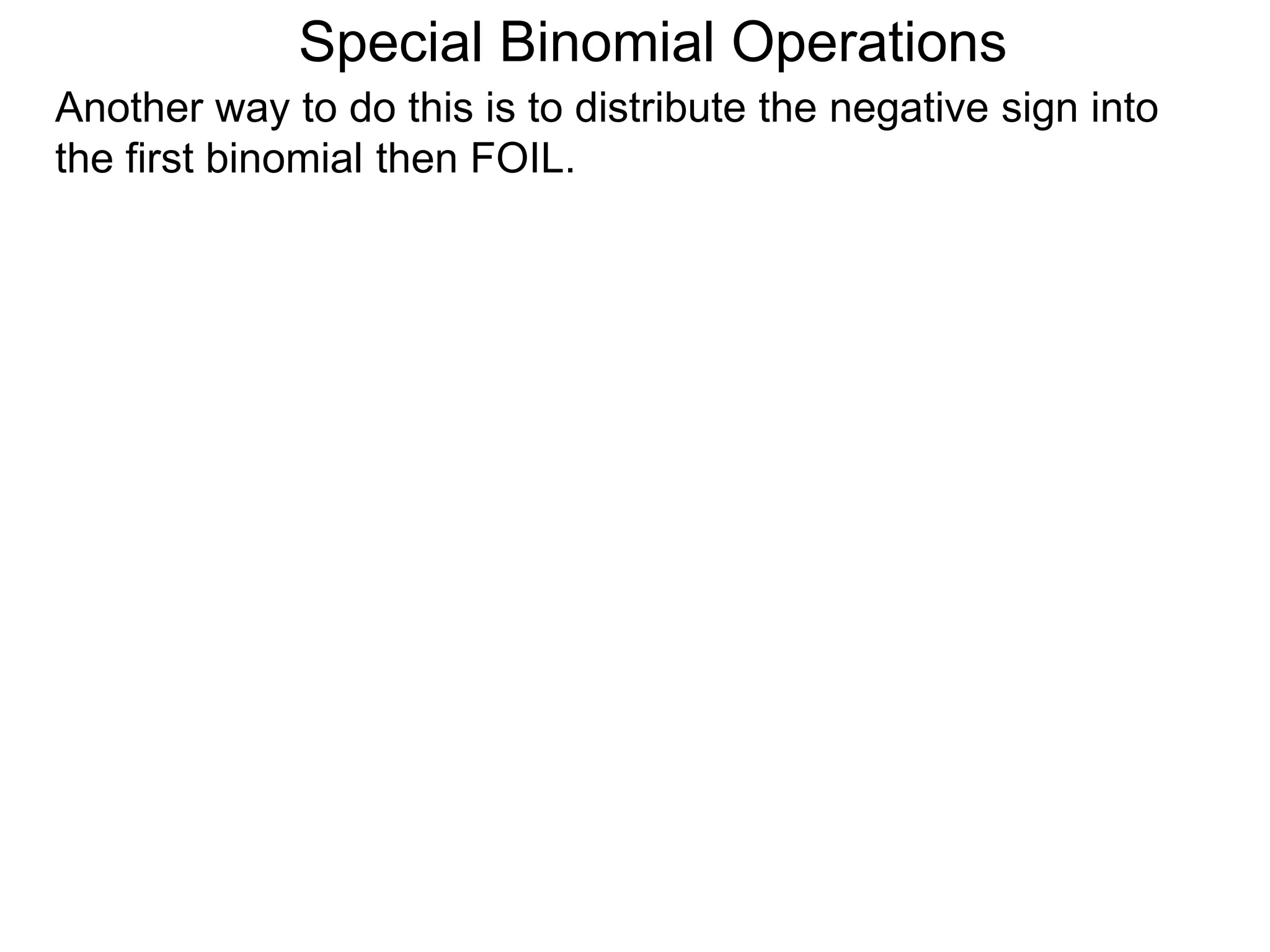
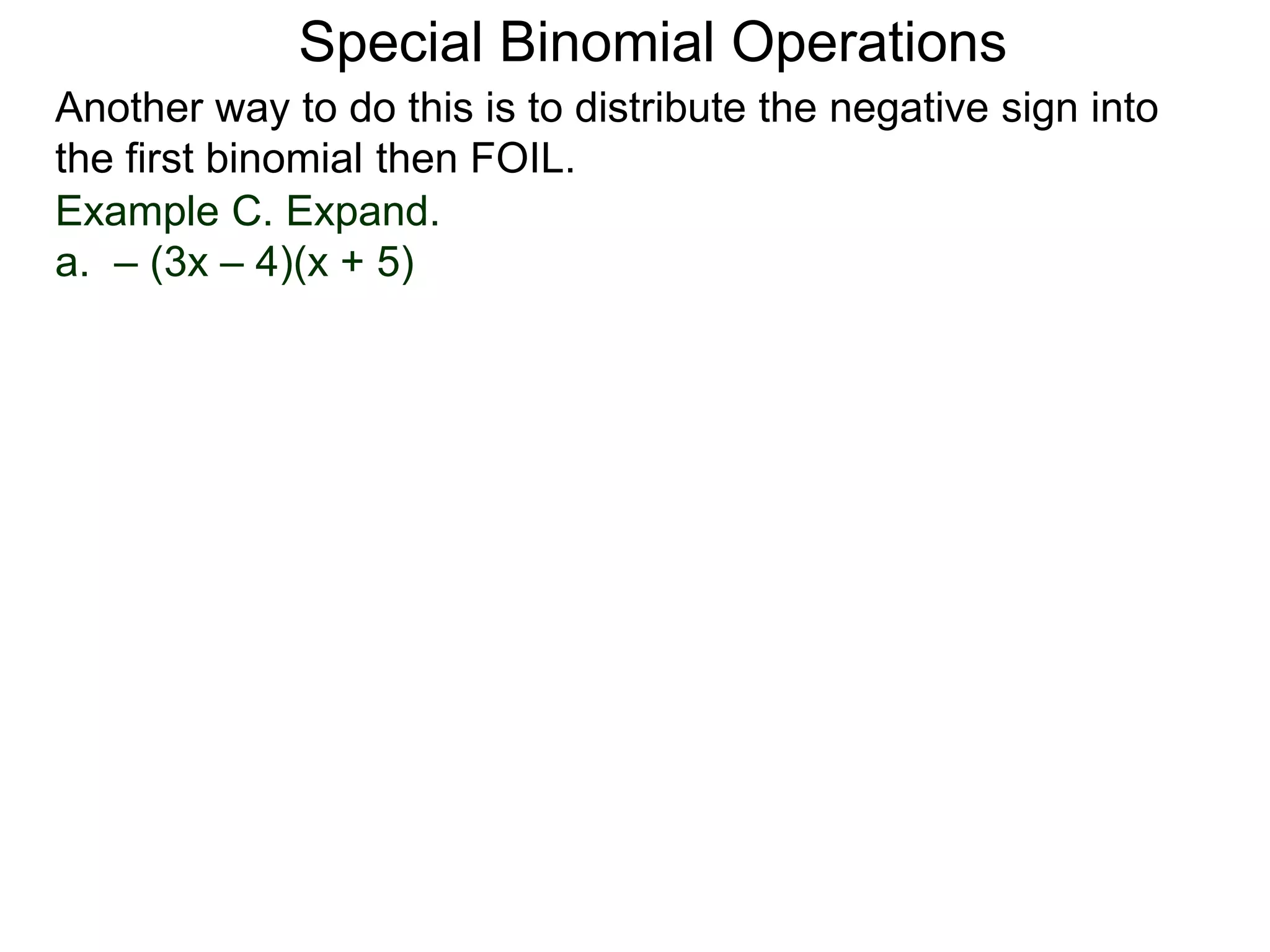
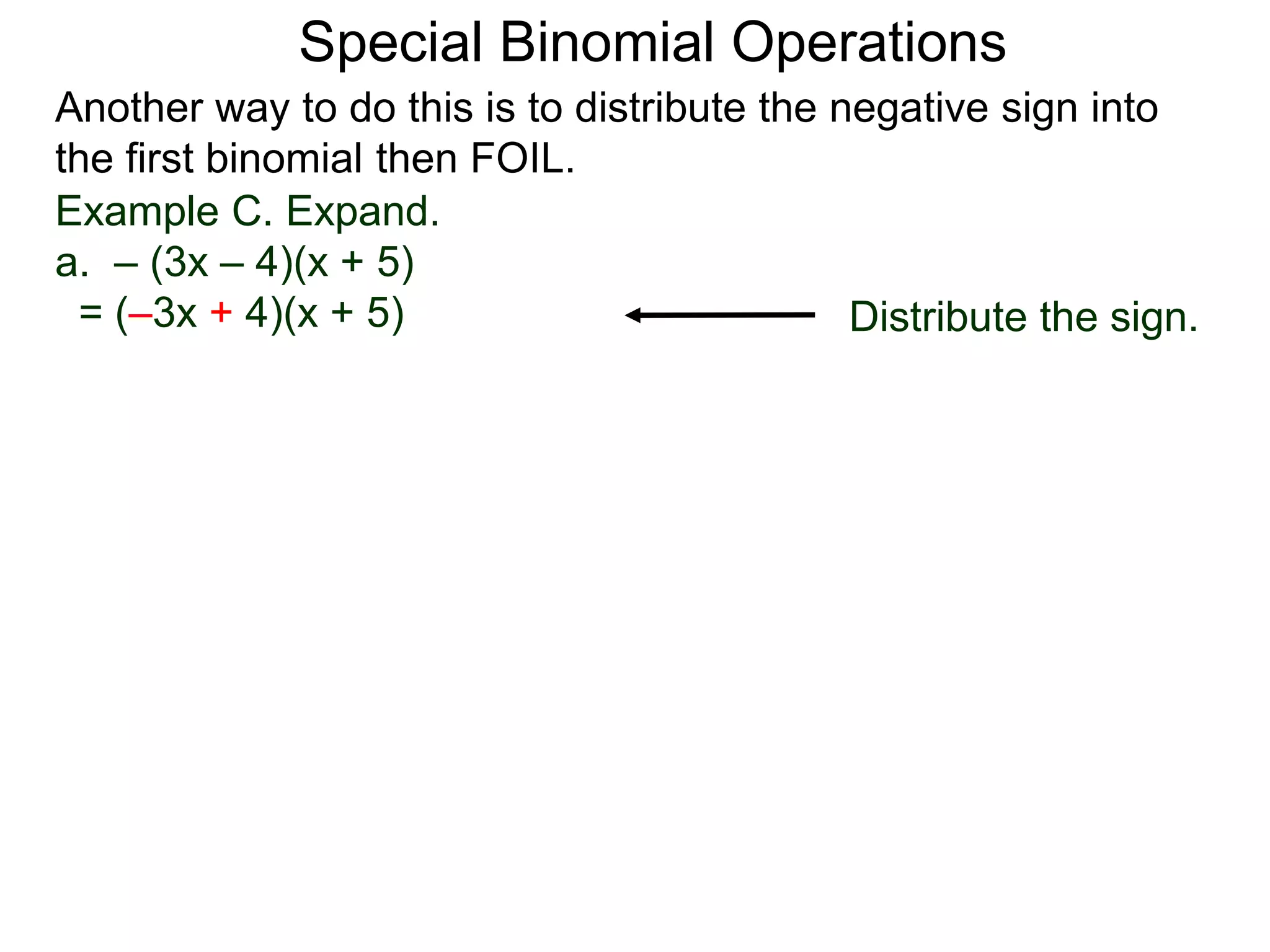
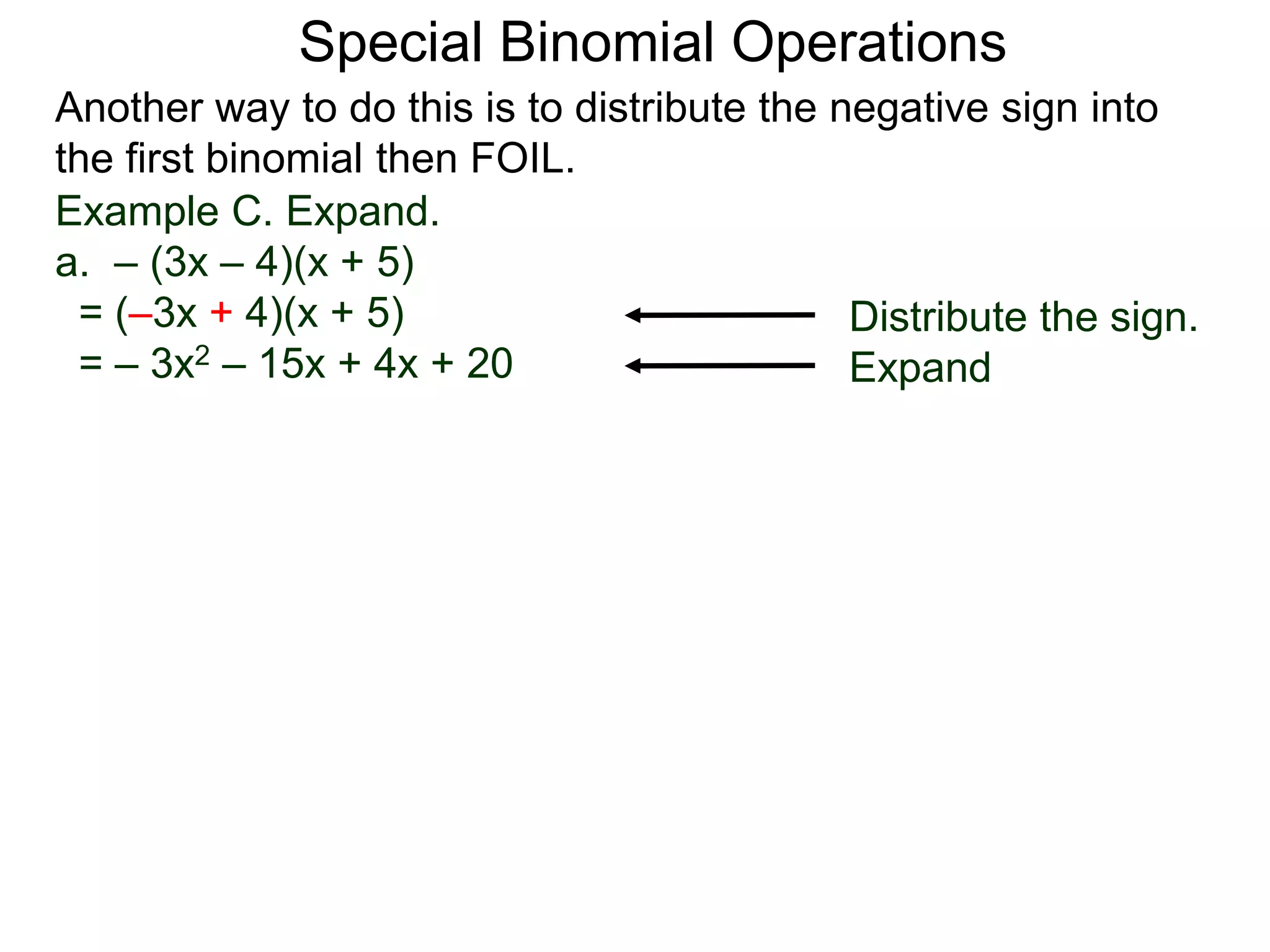

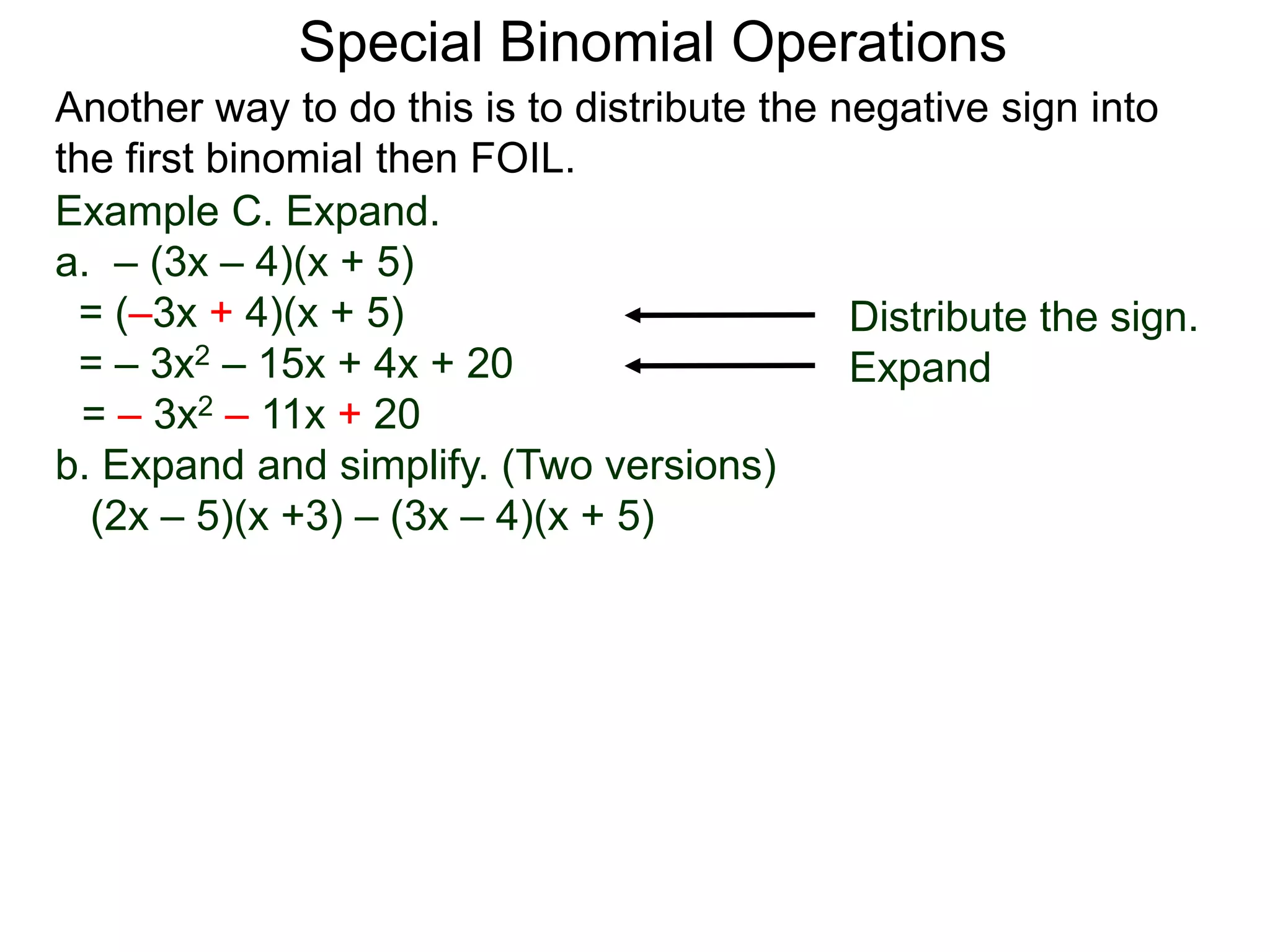
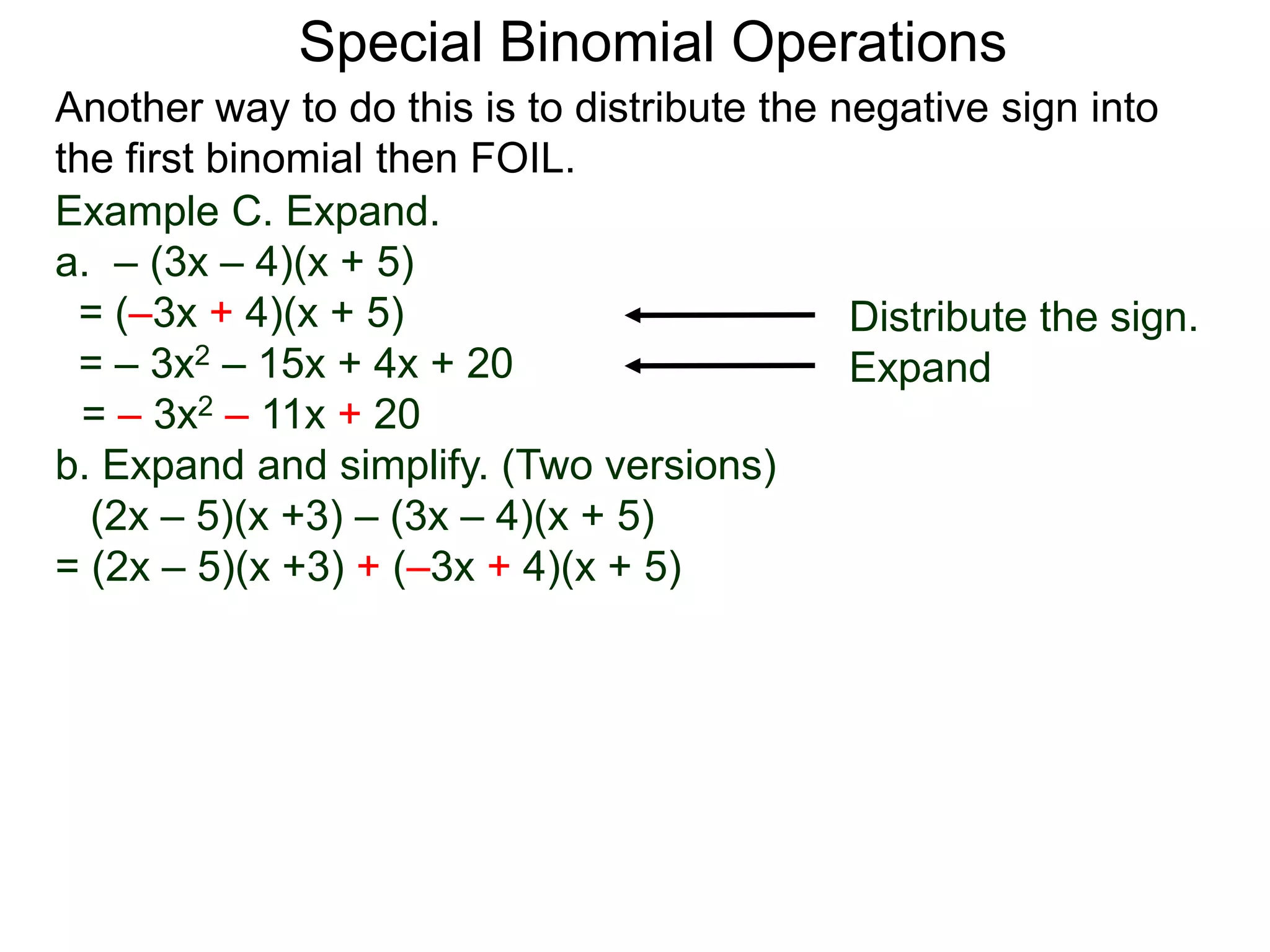
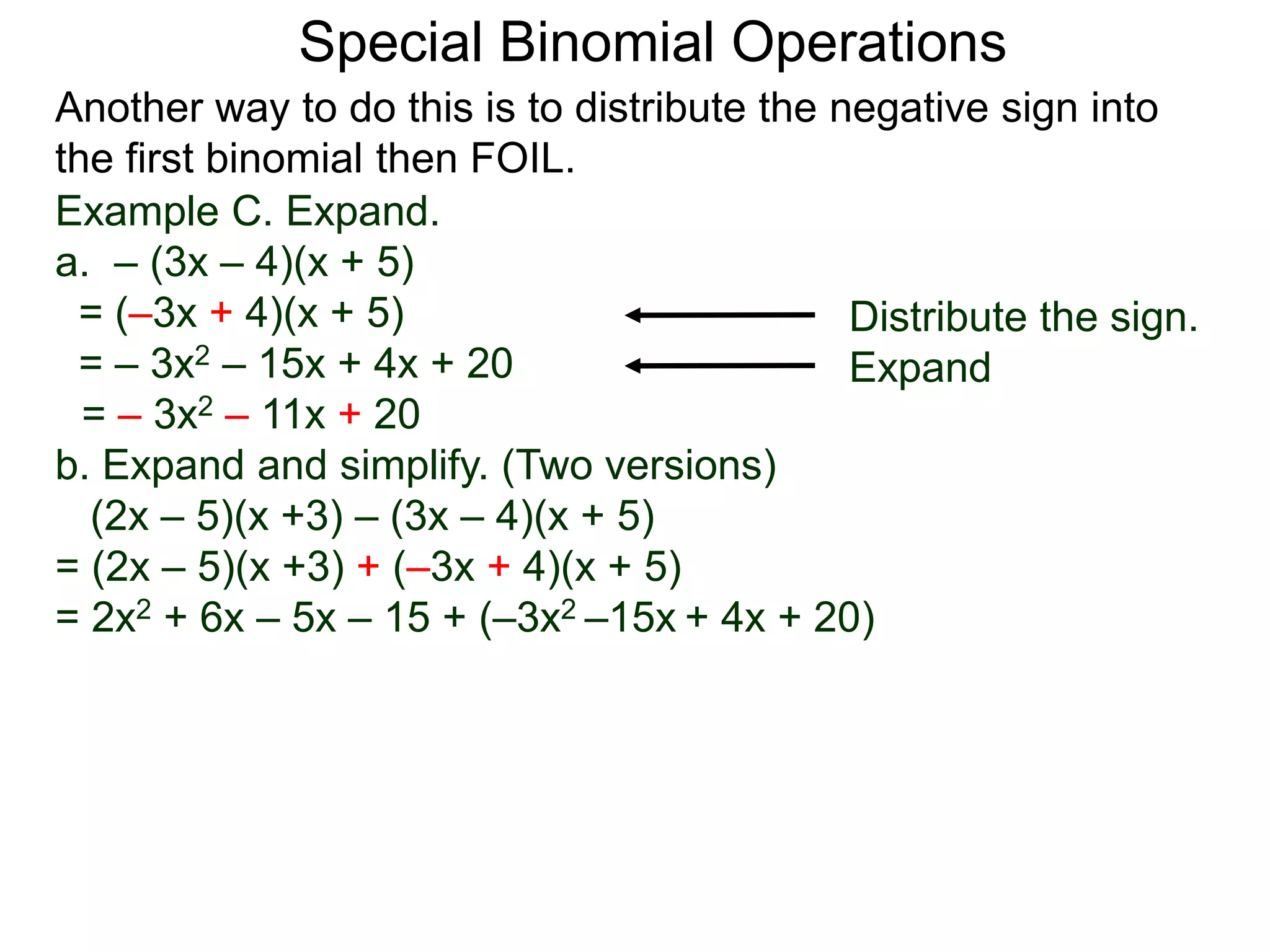

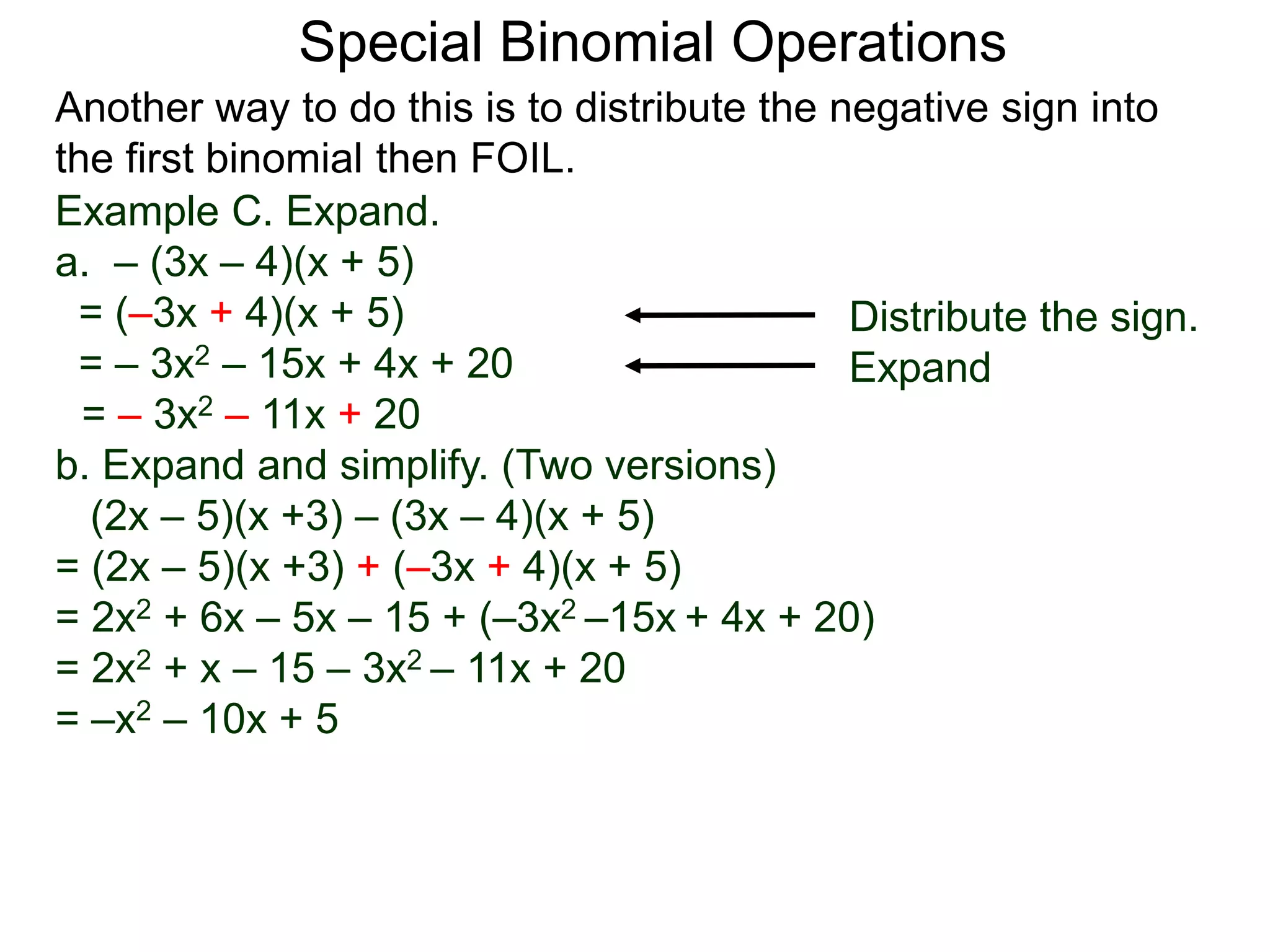
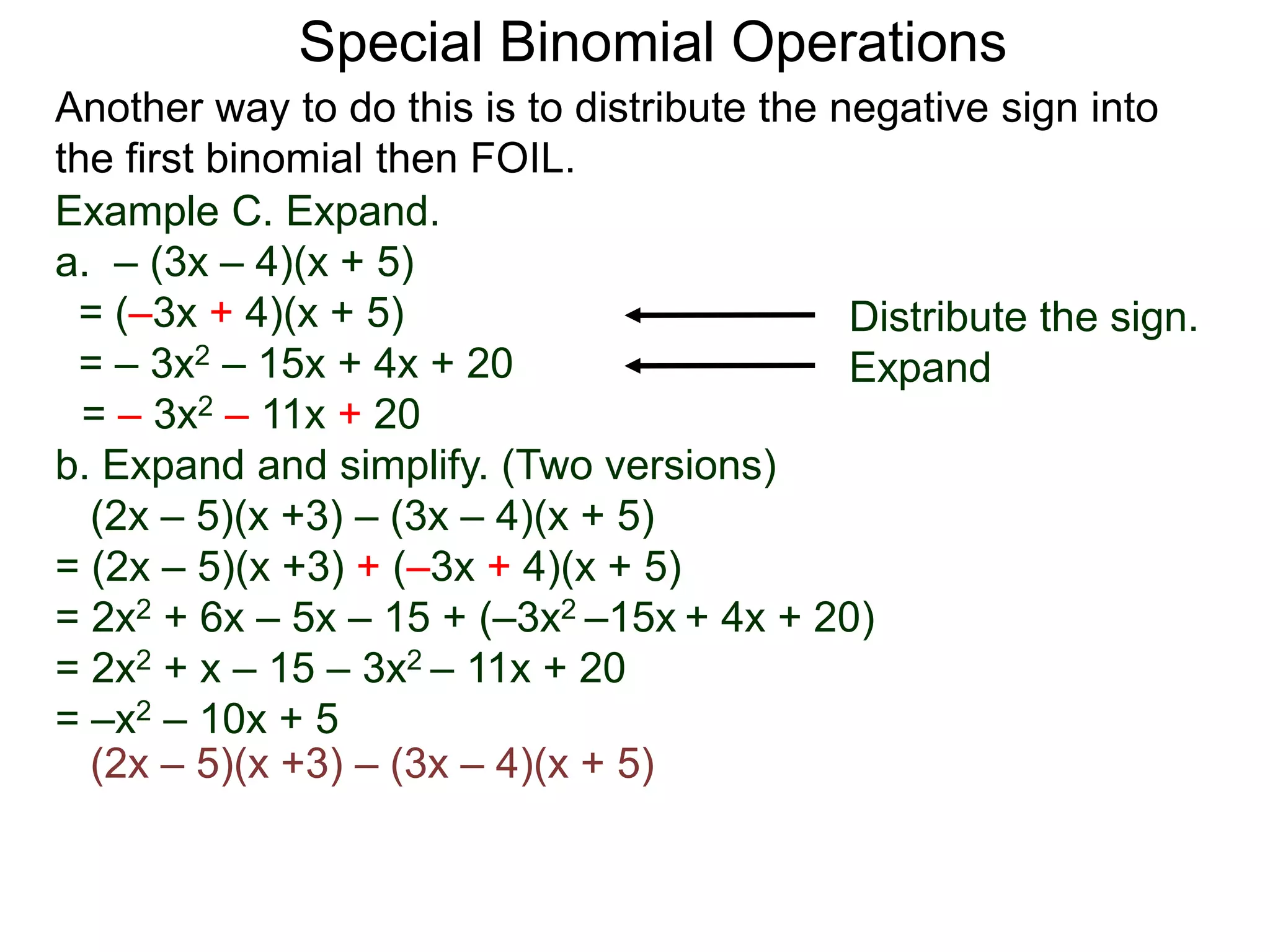
![Special Binomial Operations
Another way to do this is to distribute the negative sign into
the first binomial then FOIL.
Example C. Expand.
a. – (3x – 4)(x + 5)
= (–3x + 4)(x + 5)
= – 3x2 – 15x + 4x + 20
= – 3x2 – 11x + 20
Distribute the sign.
Expand
b. Expand and simplify. (Two versions)
(2x – 5)(x +3) – (3x – 4)(x + 5)
= (2x – 5)(x +3) + (–3x + 4)(x + 5)
= 2x2 + 6x – 5x – 15 + (–3x2 –15x + 4x + 20)
= 2x2 + x – 15 – 3x2 – 11x + 20
= –x2 – 10x + 5
(2x – 5)(x +3) – [(3x – 4)(x + 5)] Insert brackets](https://image.slidesharecdn.com/47operationsof2nddegreeexpressionsandformulas-160124022915/75/47-operations-of-2nd-degree-expressions-and-formulas-42-2048.jpg)
![Special Binomial Operations
Another way to do this is to distribute the negative sign into
the first binomial then FOIL.
Example C. Expand.
a. – (3x – 4)(x + 5)
= (–3x + 4)(x + 5)
= – 3x2 – 15x + 4x + 20
= – 3x2 – 11x + 20
Distribute the sign.
Expand
b. Expand and simplify. (Two versions)
(2x – 5)(x +3) – (3x – 4)(x + 5)
= (2x – 5)(x +3) + (–3x + 4)(x + 5)
= 2x2 + 6x – 5x – 15 + (–3x2 –15x + 4x + 20)
= 2x2 + x – 15 – 3x2 – 11x + 20
= –x2 – 10x + 5
(2x – 5)(x +3) – [(3x – 4)(x + 5)]
= 2x2 + x – 15 – [3x2 +11x – 20]
Insert brackets
Expand](https://image.slidesharecdn.com/47operationsof2nddegreeexpressionsandformulas-160124022915/75/47-operations-of-2nd-degree-expressions-and-formulas-43-2048.jpg)
![Special Binomial Operations
Another way to do this is to distribute the negative sign into
the first binomial then FOIL.
Example C. Expand.
a. – (3x – 4)(x + 5)
= (–3x + 4)(x + 5)
= – 3x2 – 15x + 4x + 20
= – 3x2 – 11x + 20
Distribute the sign.
Expand
b. Expand and simplify. (Two versions)
(2x – 5)(x +3) – (3x – 4)(x + 5)
= (2x – 5)(x +3) + (–3x + 4)(x + 5)
= 2x2 + 6x – 5x – 15 + (–3x2 –15x + 4x + 20)
= 2x2 + x – 15 – 3x2 – 11x + 20
= –x2 – 10x + 5
(2x – 5)(x +3) – [(3x – 4)(x + 5)] Insert brackets
= 2x2 + x – 15 – [3x2 +11x – 20]
= 2x2 + x – 15 – 3x2 – 11x + 20
= –x2 – 10x + 5
Expand
Remove brackets
and combine](https://image.slidesharecdn.com/47operationsof2nddegreeexpressionsandformulas-160124022915/75/47-operations-of-2nd-degree-expressions-and-formulas-44-2048.jpg)
![Special Binomial Operations
Another way to do this is to distribute the negative sign into
the first binomial then FOIL.
Example C. Expand.
a. – (3x – 4)(x + 5)
= (–3x + 4)(x + 5)
= – 3x2 – 15x + 4x + 20
= – 3x2 – 11x + 20
Distribute the sign.
Expand
b. Expand and simplify. (Two versions)
(2x – 5)(x +3) – (3x – 4)(x + 5)
= (2x – 5)(x +3) + (–3x + 4)(x + 5)
= 2x2 + 6x – 5x – 15 + (–3x2 –15x + 4x + 20)
= 2x2 + x – 15 – 3x2 – 11x + 20
= –x2 – 10x + 5
(2x – 5)(x +3) – [(3x – 4)(x + 5)] Insert brackets
= 2x2 + x – 15 – [3x2 +11x – 20]
= 2x2 + x – 15 – 3x2 – 11x + 20
= –x2 – 10x + 5
Expand
Remove brackets
and combine](https://image.slidesharecdn.com/47operationsof2nddegreeexpressionsandformulas-160124022915/75/47-operations-of-2nd-degree-expressions-and-formulas-45-2048.jpg)
